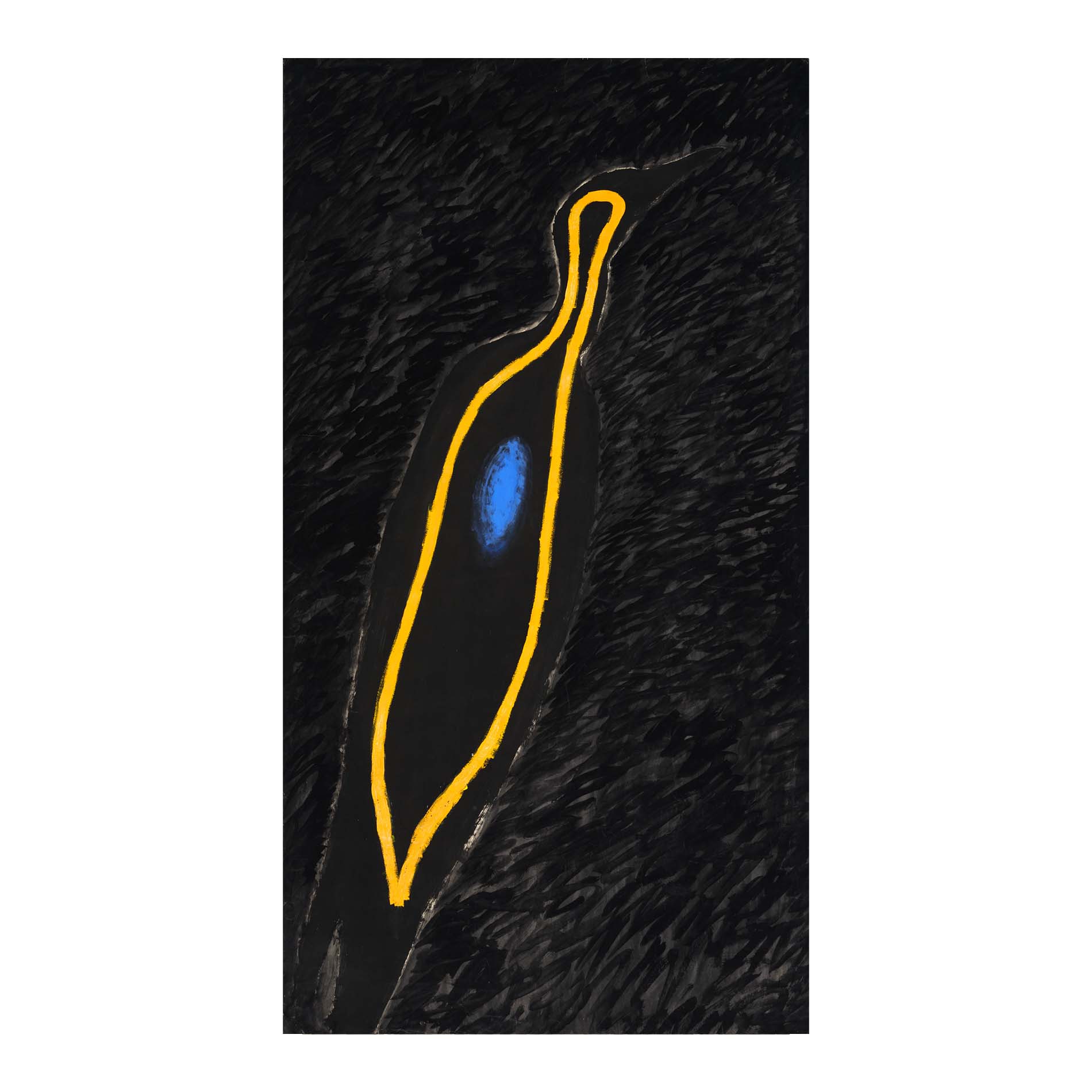Get to know
the CU ART collection
We own a collection of contemporary art. The works of world class artists such as Marina Abramović, Jasper Johns and Zbigniew Libera.

Marina Abramović (1946) – a Serb multimedia artist, who is a global icon of performance art. She uses her own body as a tool for her artistic endeavours. Her art breaks the physical and psychological barriers of our organism, tests the possibilities of the mind and the connection between the artist and the audience. In 2010 the New York Museum of Modern Art organised her retrospective exhibition, at which the artist presented the now famous performance: “The Artist is Present”. In this the Performer sat motionless for 736 hours in the museum during visiting hours. She has opened her Workshop Centre in New York, the Marina Abramović Institute, which is an educational and exhibition space.
MARINA
ABRAMOVIĆ
Portrait with a Scorpion (eyes closed)
2005, Silver Gelatin Print, 13/75, 145 x 125 cm

Richard Atugonza (1994) is a Ugandan sculptor who studied at the School of Fine Arts in Uganda. His art is rooted in his local environment - his native country, its colors, raw materials, and the problems it faces, especially its people. Atugonza mainly sculpts humans, exploring their inner lives, emotions, and dilemmas. He sees his art as a mirror that reflects the emotions people face, both in solitude and in social situations. His art is powerful due to its economy of means and gestures, the austerity of materials used, and the absolute focus on the characters in his works. Atugonza constantly experiments with materials, often using found and recycled materials.
Richard
Atugonza
Woman of Valor
2022, charcoal, sawdust and resin, 49 x 50 x 18,5 cm
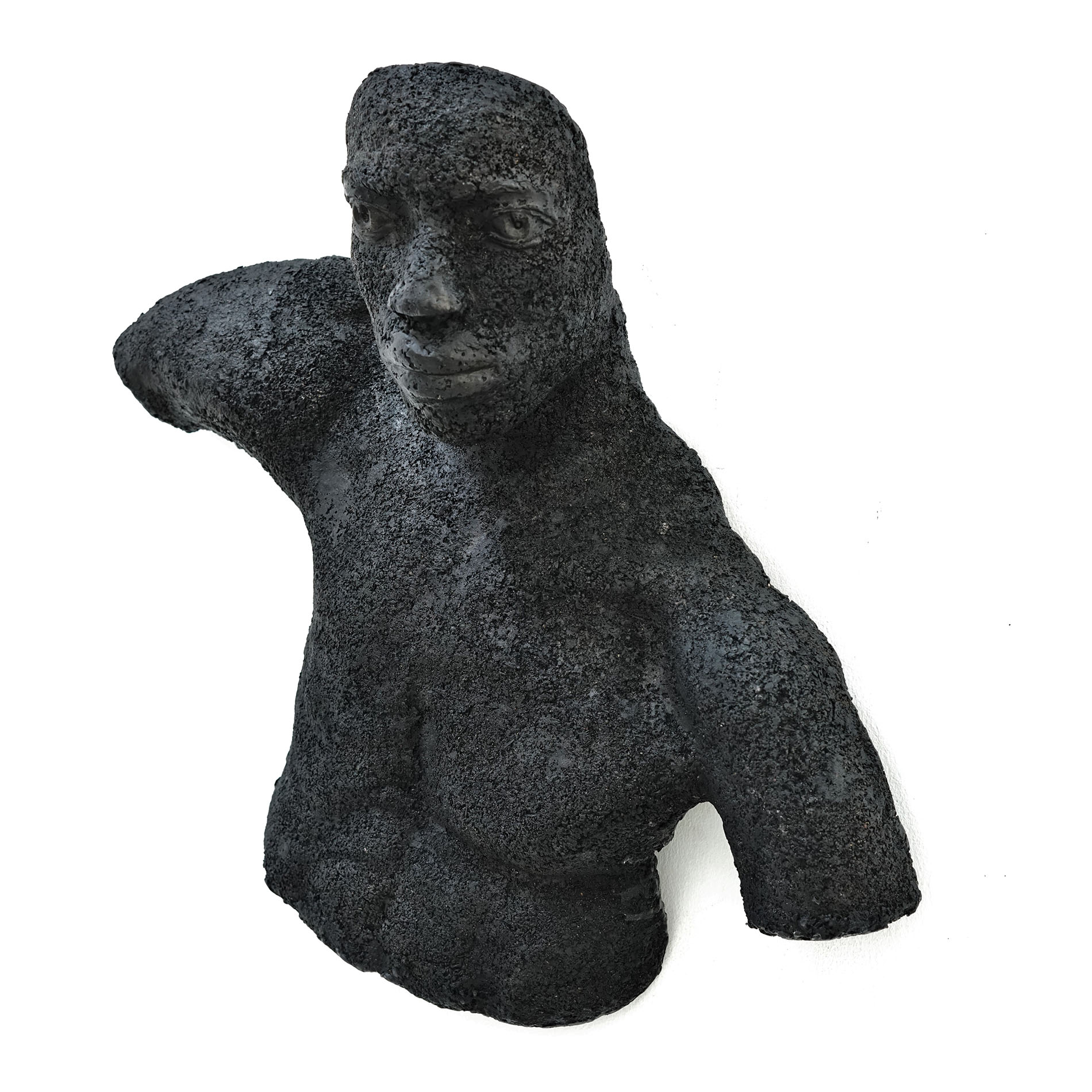
Richard Atugonza (1994) is a Ugandan sculptor who studied at the School of Fine Arts in Uganda. His art is rooted in his local environment - his native country, its colors, raw materials, and the problems it faces, especially its people. Atugonza mainly sculpts humans, exploring their inner lives, emotions, and dilemmas. He sees his art as a mirror that reflects the emotions people face, both in solitude and in social situations. His art is powerful due to its economy of means and gestures, the austerity of materials used, and the absolute focus on the characters in his works. Atugonza constantly experiments with materials, often using found and recycled materials.
Richard
Atugonza
Decision
2022, charcoal and resin, 58 x 60 x 19 cm
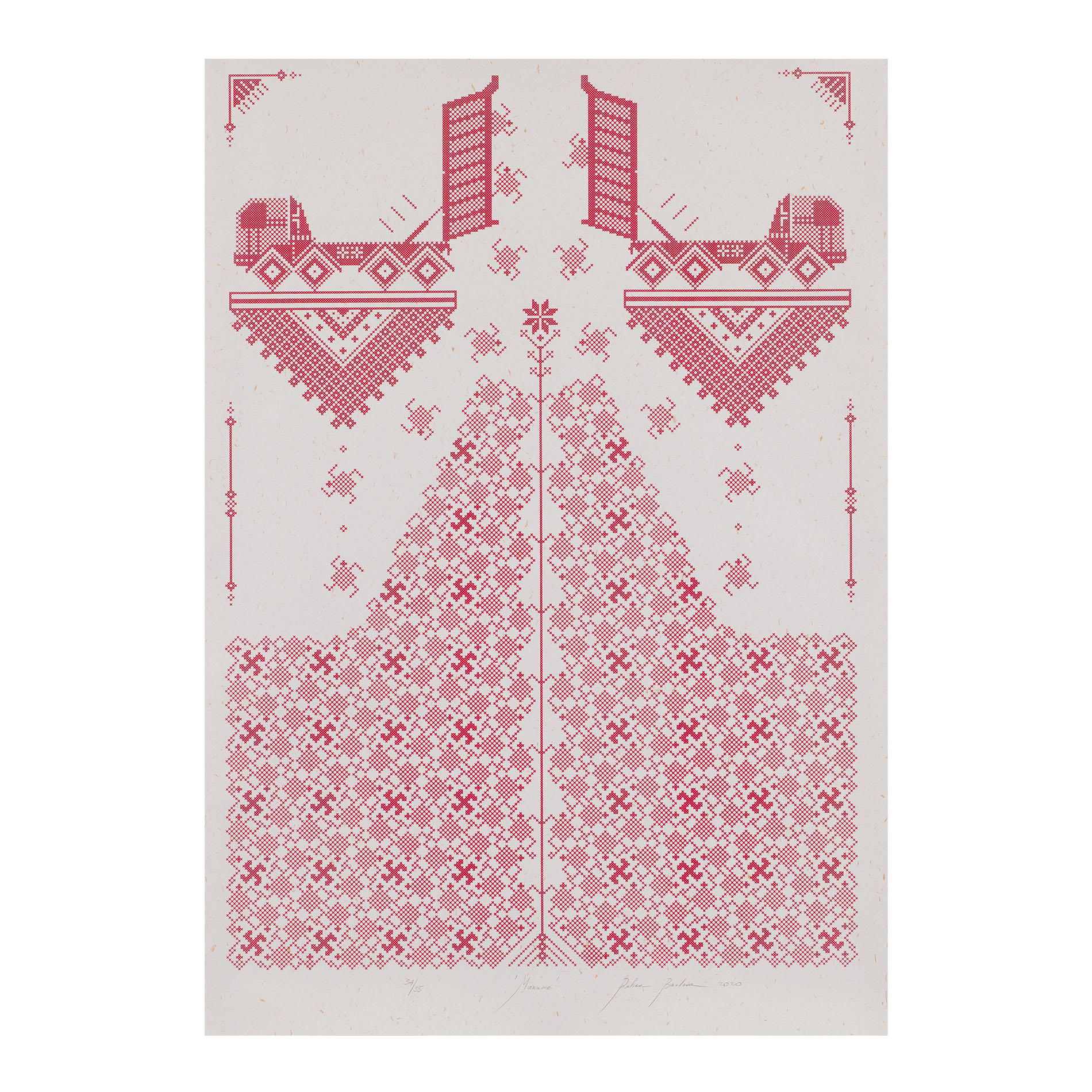
Rufina Bazlova (1990) is a Belarusian graphic designer, textile artist, and performer. She graduated from the University of West Bohemia in Pilsen and the Academy of Performing Arts in Prague. In her art, she explores folk motifs, using them to convey current content related to political and social issues, activism, and feminism. Bazlova gained international recognition with her project "History of Belarusian vyshyvanka," in which she uses the traditional medium of folk embroidery to discuss current issues. The artist also examines the presence of feminist themes in folk traditions. She applies the embroidery motif using a variety of media, from textiles and prints to video and performance.
Rufina
Bazlova
Manure
2020, silkscreen, paper, 70 x 100 cm
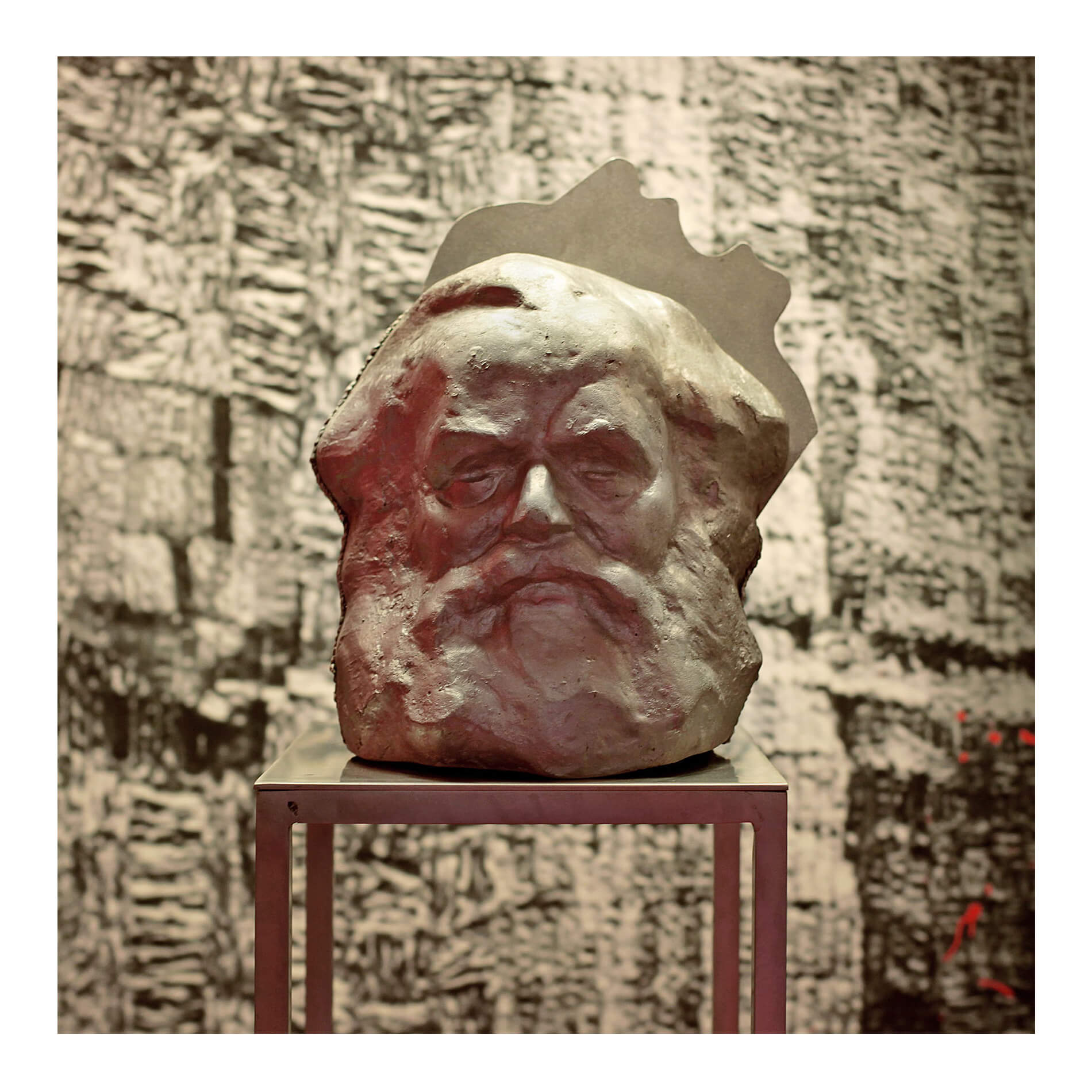
Krzysztof M. Bednarski (1953) – a creator of installations, a sculptor. Well-known internationally thanks to the work “A total portrait of Karl Marx” and the series “Moby Dick”. His work can be found in the collections of the biggest museums in Poland and in Italy. Bednarski’s sculptures are a comment on social-political events. The most engaged work – and a symbol of the artist is “Victoria-Victoria” from 1983. The work shows a hand in a victory gesture with its fingers cut off. In 1986 the artist found a hull of a boat on the Vistula river, which reminded him of the white whale from the H. Melville story – thus his legendary work “Moby Dick” came into being, a work in which Bednarski returns to the source of everything, thus seeking his own identity.
KRZYSZTOF M.
BEDNARSKI
Karl Marx shouting
2013, aluminium
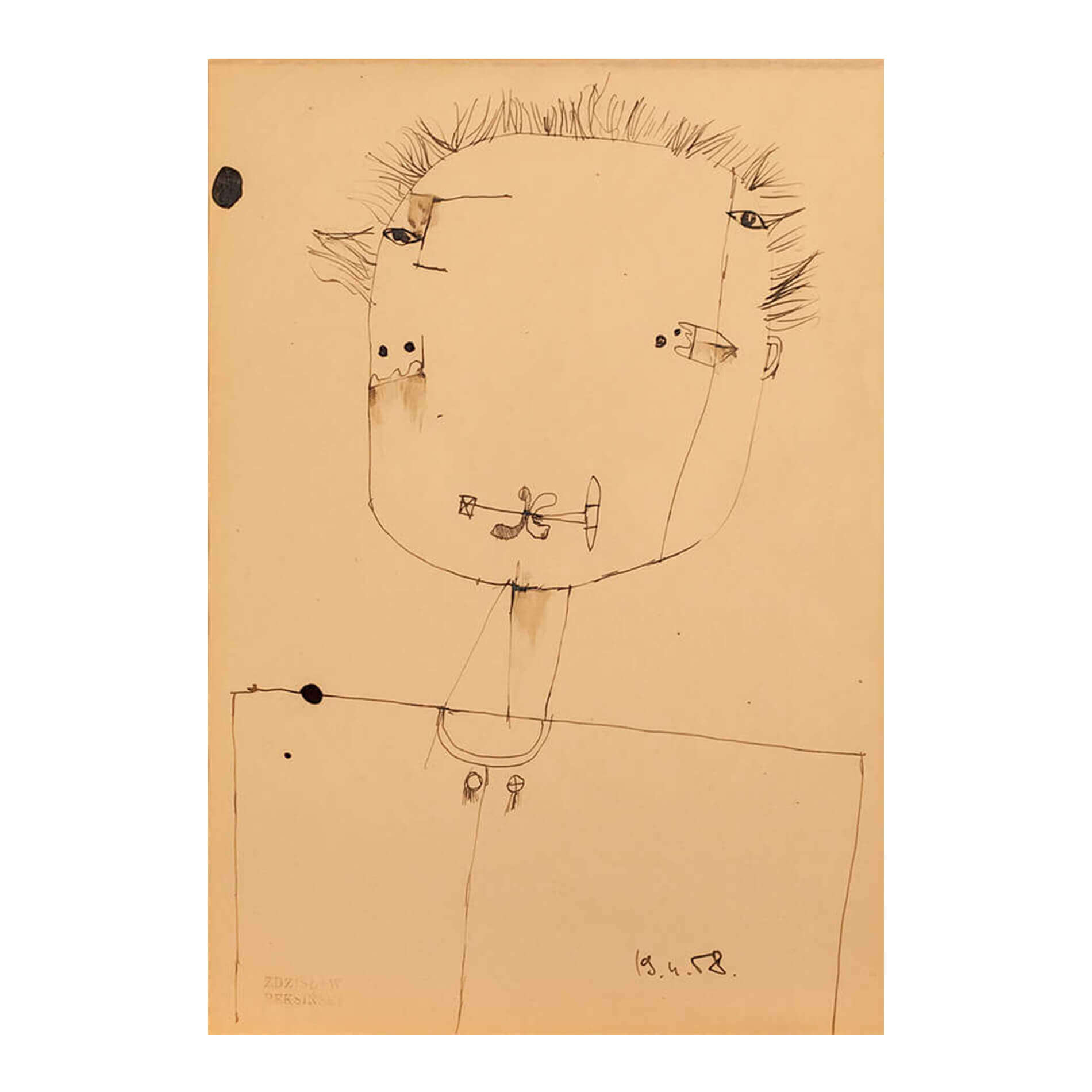
Zdzisław Beksiński (1929-2005) – a graduate in Architecture from Kraków Polytechnic. Following this he was a photographer, an illustrator and a painter and from the beginning of the 1960s also a sculptor. He was one of the few artists who rejected the principles of the avant-garde movement and looked for a synthesis of various styles. As an artist he by definition tried to go beyond the existing canon. His work consisting of between one and two hundred photographs, are considered to be among the most important artistic achievements of Polish Art in the XXth century and are seen as being a precursor to both body art and conceptualism. The most common motifs to be found in Beksiński are the expressionistic presentation of people, an elaborate symbolism together with apocalyptic visions and omnipresent death motifs.
Zdzisław
Beksiński
Without title
1958, pencil on paper, 21 x 30 cm
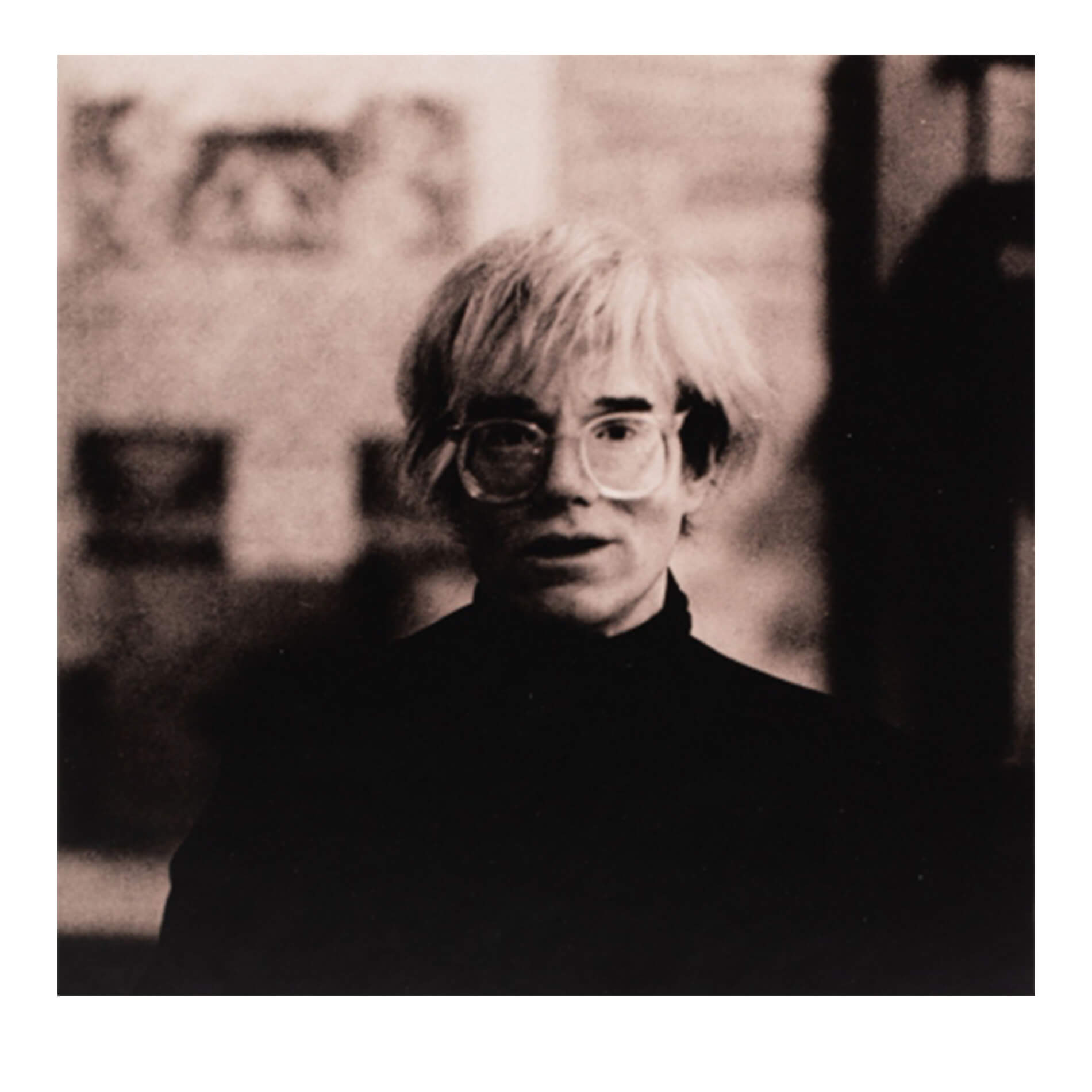
Don
Bierman
Andy Warhol
1985, copy gelatine-sliver/photographic paper, 7/50, 19 x 19 cm
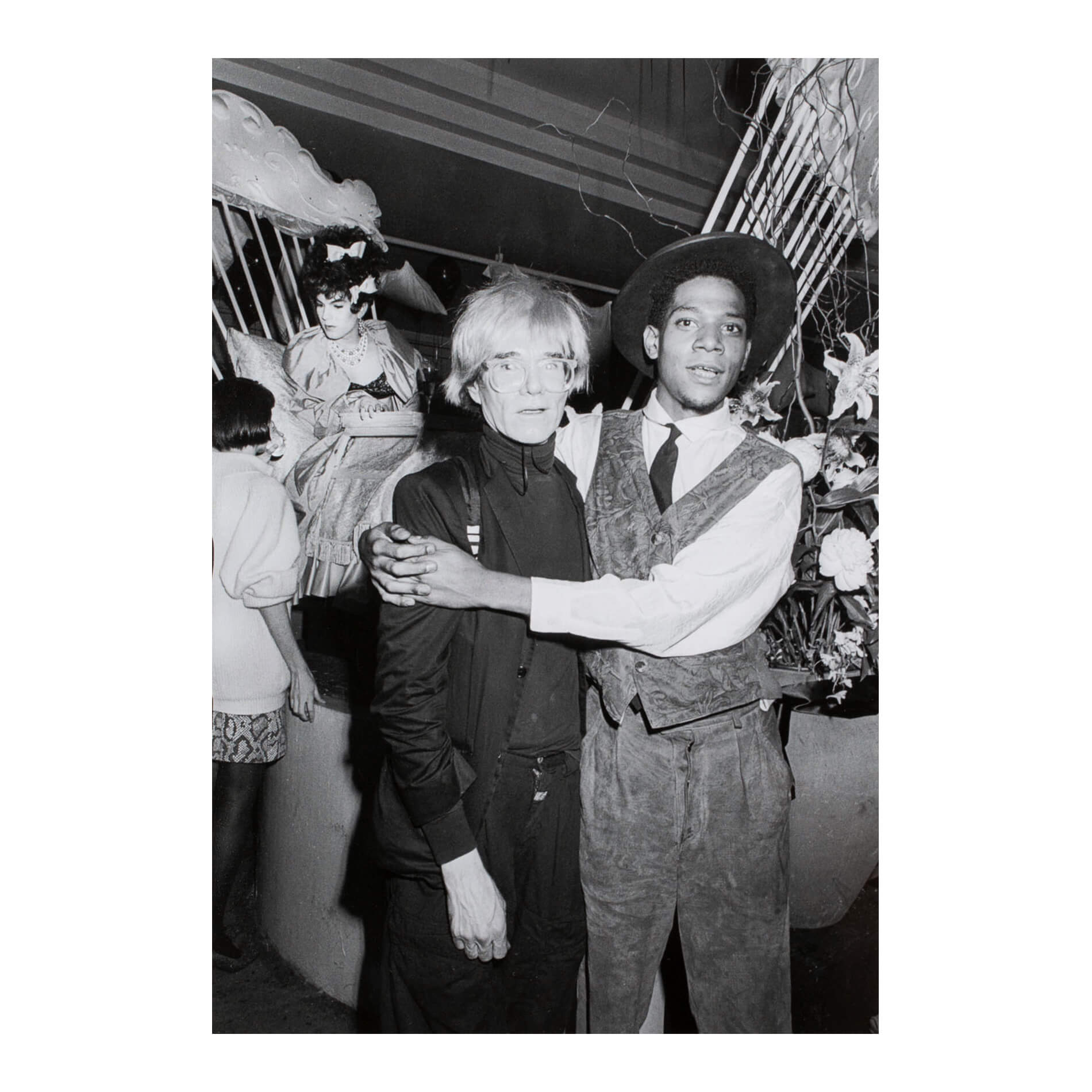
Ben Buchanan - between 1983 and 1987, New York’s Area nightclub enjoyed a brief period of infamy as the club of choice for the city’s artists and celebrities. Area’s elaborate parties were all captured by Ben Buchanan, who were the club’s resident photographer, documenting artist like Andy Warhol, Jean-Michel Basquiat, Keith Haring, David Hockney, and musicians like Grace Jones, Tom Waits, and Sting. Buchanan’s black and white images are sharply candid, capturing the dynamic scene that was Area in 80s.
Ben
Buchanan
Jean-Michel Basquiat and Andy Warhol
1984, C-Print/paper, 18 x 26,5 cm
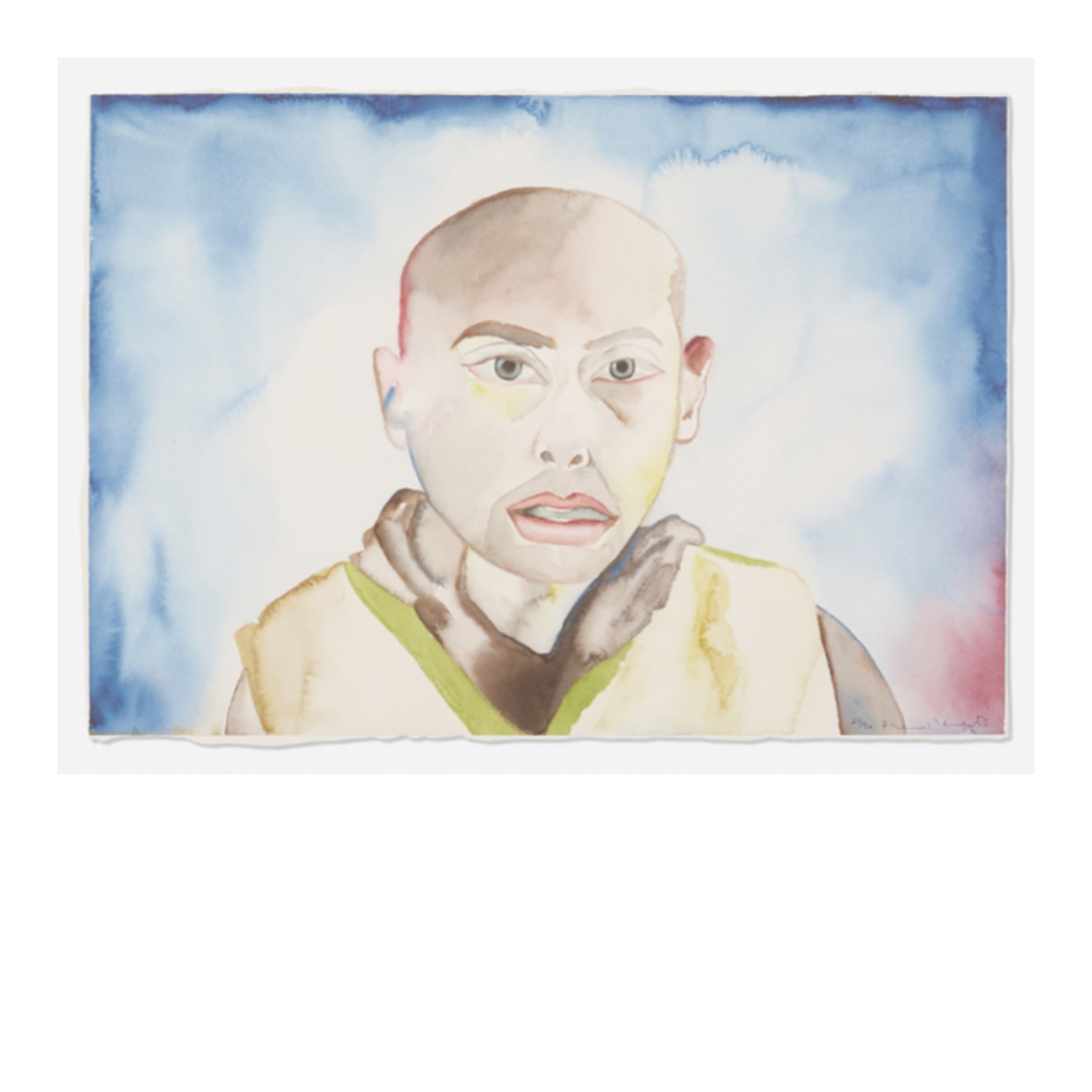
Francesco Clemente (1952) – one of the principal figures in the Italian Transavanguardia known for his dreamlike paintings based on esoteric themes of sexuality and spirituality. Working across oil painting, installation, and watercolor, Clemente’s works are characterized by their formal experimentation with symbols, portraiture, and the human figure. Fascinated with Hindu art and mysticism, his pastel drawings are especially noted for their intense and arcane quasi-religious content that has grown increasingly surreal in his later works. Relocating to New York in 1981, Clemente began collaborating with Jean-Michel Basquiat and Andy Warhol.
Francesco
Clemente
Untitled
digigraph on paper, 22/30, 70,5 x 49,5 cm
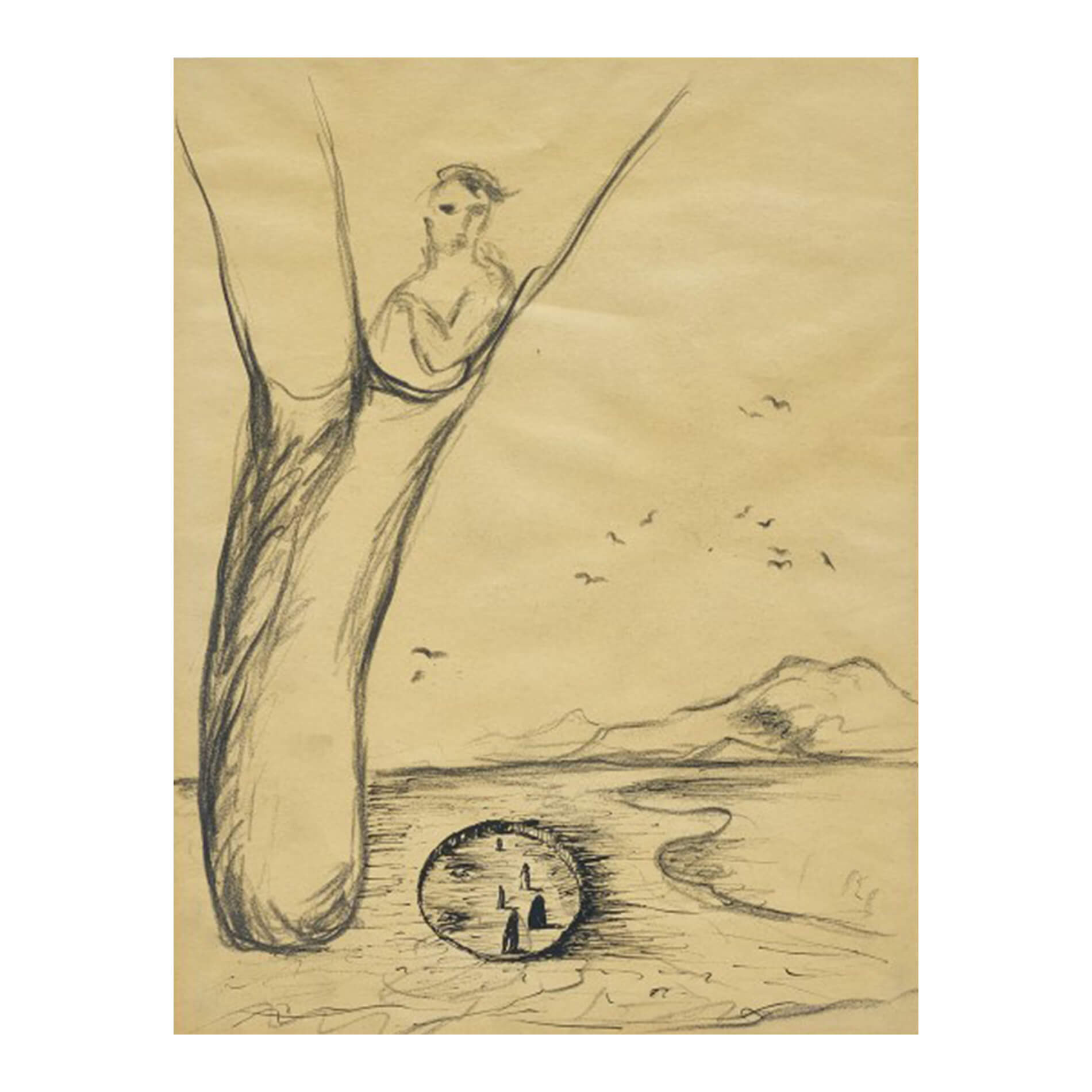
Enzo Cucchi (1949) – Italian painter, sculptor and illustrator. A representative of the Italian trans avant-garde movement. Cucchi’s work is inspired by the landscape and culture of the region where he comes from. He creates stories about nature that he is so close to as well as tradition with the aid of expressive colours and gestures. His canvasses are often expanded by the use of poetic texts. The New York Times described him as an “artist who waves his brush like a magician”. His style can be characterised as almost primitive, with symbolic forms, which make us think of ancient cave paintings. The work of this artist has been exhibited all over the world, e.g. in the Museum of Modern Art in New York, the Tate in London and the Art Institute of Chicago.
ENZO
CUCCHI
Untitled
1983, pencil on paper, 30,2 x 40 cm
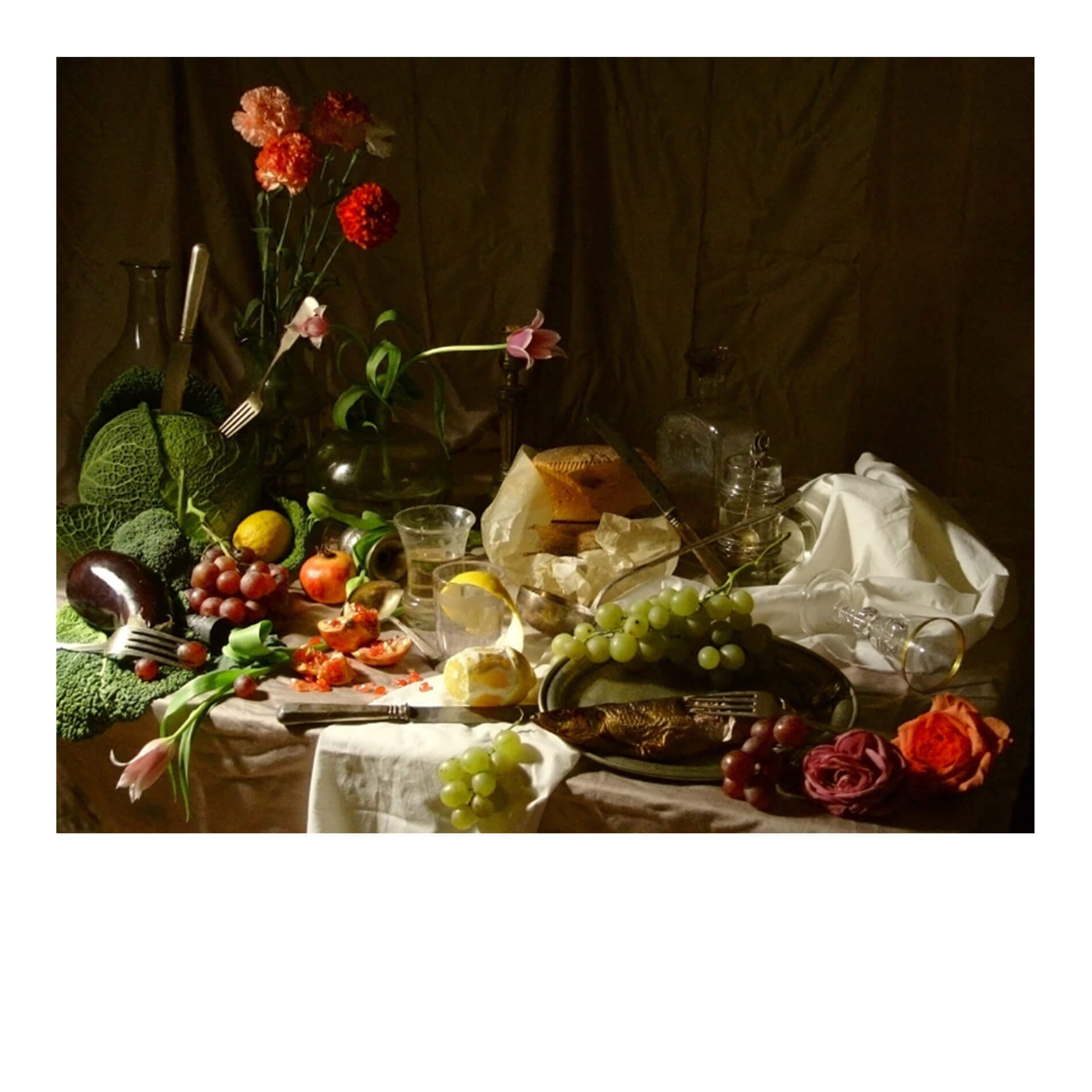
Julia Cybis (1985) – graduate of the Painting Department of the Warsaw School of Fine Art, from where she graduated with distinction in 2009. She has studied also at the Superieure des Beaux-Arts d’Angers in France. She has taken part in many exhibitions of young artists both in Poland and abroad. Her work can be characterised as being intimate. As an artist she uses as inspiration her own personal experiences. In her work she deals with problems of memory and places personal motifs into a wider context. She often uses family photographs, asking what the possibilities of art are when presenting such personal experiences. Her work has been bought for the National Museum in Gdańsk’s collection.
JULIA
CYBIS
Still Life
2007/2016, digital print, 74,5 x 54 cm

Jakub Daniliewicz (1992) – a visual artist, creator of installations, photographs and experimental films. A graduate of the Fine Arts Academy in Gdańsk, student of the University of Art and Design in Linz, the recipient of a stipend from the WHW Academy program from Zagreb. A winner of the Hestia Artistic Journey competition. Deals with issues from political history in his work as well as ecological, bio-ethical problems and issues to do with exclusion. His work often takes the form of intervention actions, which are associated with the identity of the place, its functions and the history of its location. In his work Danilewicz seeks to move into the future, so in directions which art will still have to deal with.
JAKUB
DANILEWICZ
Untitled
2016, pigment printing on cotton paper, 40 x 50 cm
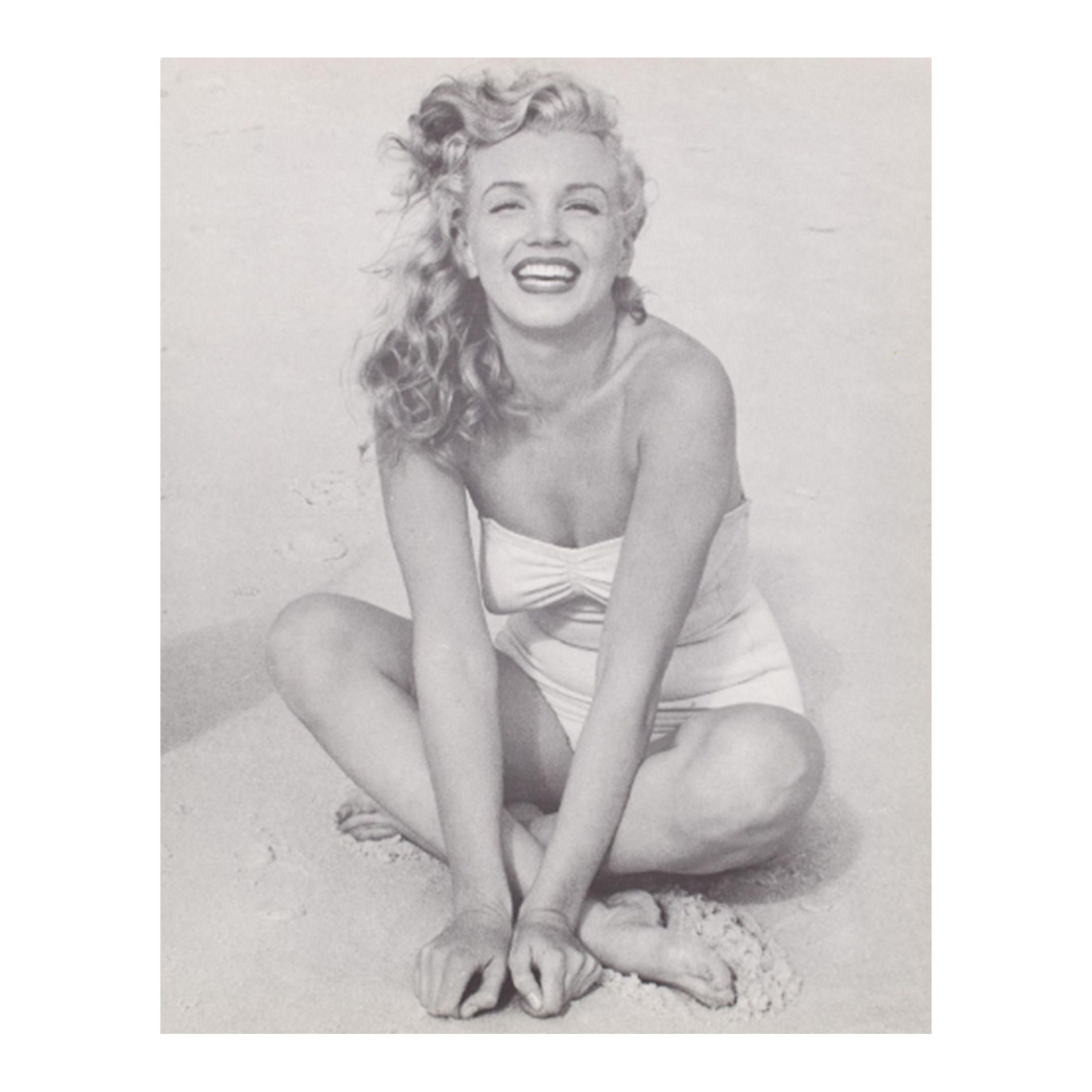
André de Dienes (1913-1985) - Hungarian photographer who as a first took pictures of Marilyn Monroe. The beginnings of their relationship go back to the times when Norma Jeane was an unknown, ambitious model, desiring a great career. He started working as a professional photographer for the communist newspaper L'Humanité and was employed by the Associated Press until 1936. Fashion designer Captain Molyneux noticed his work and persuaded him to become a fashion photographer. He has worked for Vogue, Life and Esquire magazines.
Marilyn Monroe is an American actress, model, singer and international movie star, icon of popular culture and sex bomb of the 50s and 60s. She was engaged to André de Dienes.
ANDRÉ
DE DIENES
Marylin Monroe
photo litho/paper, cardboard, 24,5 x 31 cm
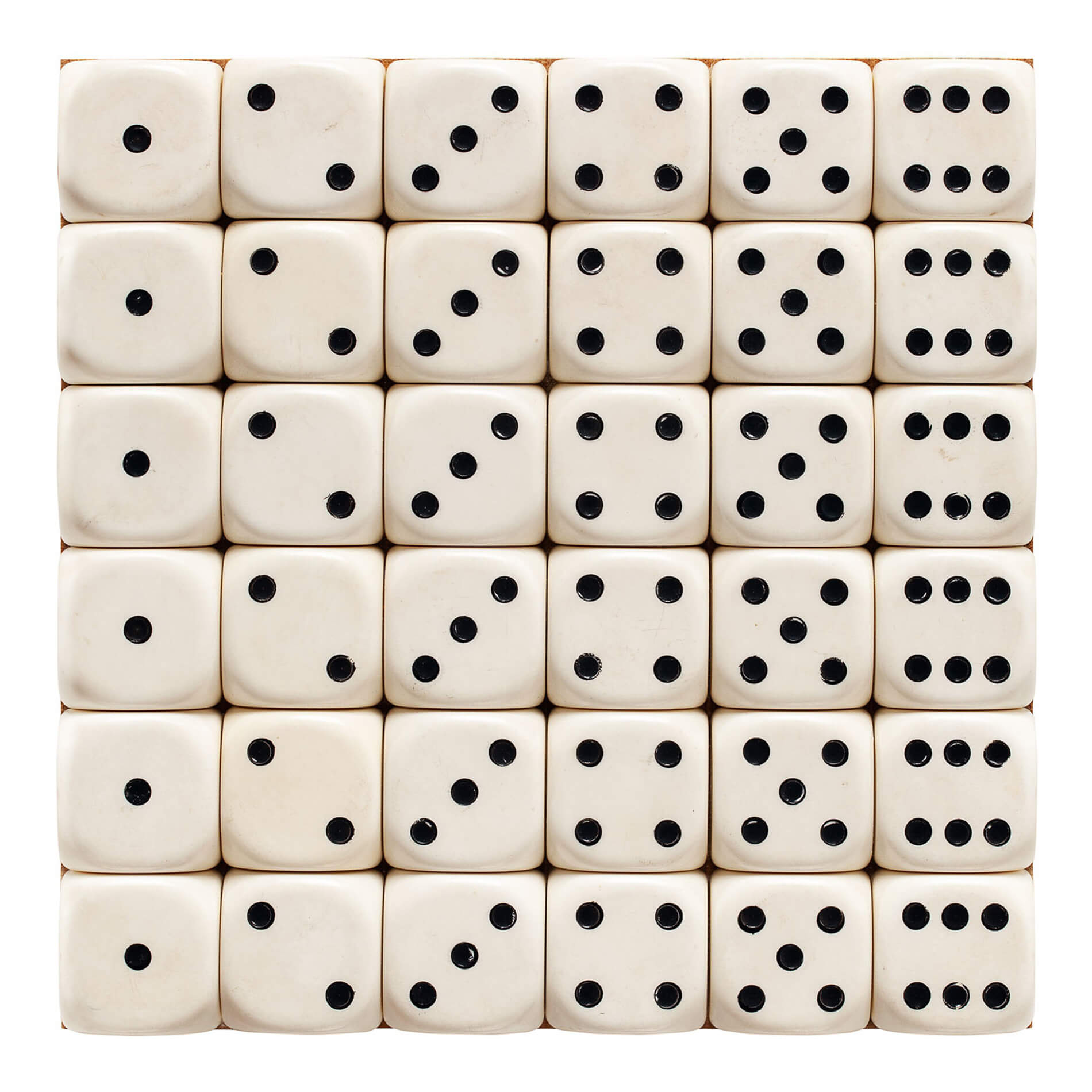
Stanisław Dróżdż (1939-2009) – creator of “concrete poetry” school, the precursor of this movement in Polish art. He described his art with the terminology “conceptshapes”, in which words are moved from being purely two dimensional into a 3D space. Dróżdż wrote through pictures, he created forms of letters, numbers and mathematical symbols in which the viewer became a part of the written language. He constantly returned to the issue of time, how it passes as well as game metaphors in his work. He has taken part in around 300 exhibitions both national and international. He represented Poland at the 50th Biennale of Art in Venice with the exhibition “Alea Iacta Est”. His work is to be found in private collections as well as in museums (e.g. National Museum, Wrocław, Art Museum in Lodz and the Museum of Contemporary Art in Los Angeles).
STANISŁAW
DRÓŻDŻ
Ale iacta est
2003, plastic dice, 19 x 19 cm

Edward Dwurnik (1945-2018) – created an extensive range of paintings. His output consists of around 3500 paintings and 10 thousand drawings. Based on the work of his muse, Nikifor, Dwurnik created a style based on exaggerated realism and the grotesque– characterised by drawings with quickly drawn lines. A series of works by this artist that is particularly well-known is called “A Hitchhiking Journey”, where the paintings consist of bird’s eye landscape views of Polish towns, without any line to denote the horizon and which have a characteristically large collection of motifs. Dwurnik’s work reflects the political and economic changes which came to Poland as the 20th century changed to the 21st. His pictures are to be found in the Presidential Palace and President Aleksander Kwaśniewski made several speeches with this very painting in the background.
EDWARD
DWURNIK
Three Crosses Square
2002, serigraph, 6/7, 54 x 45 cm
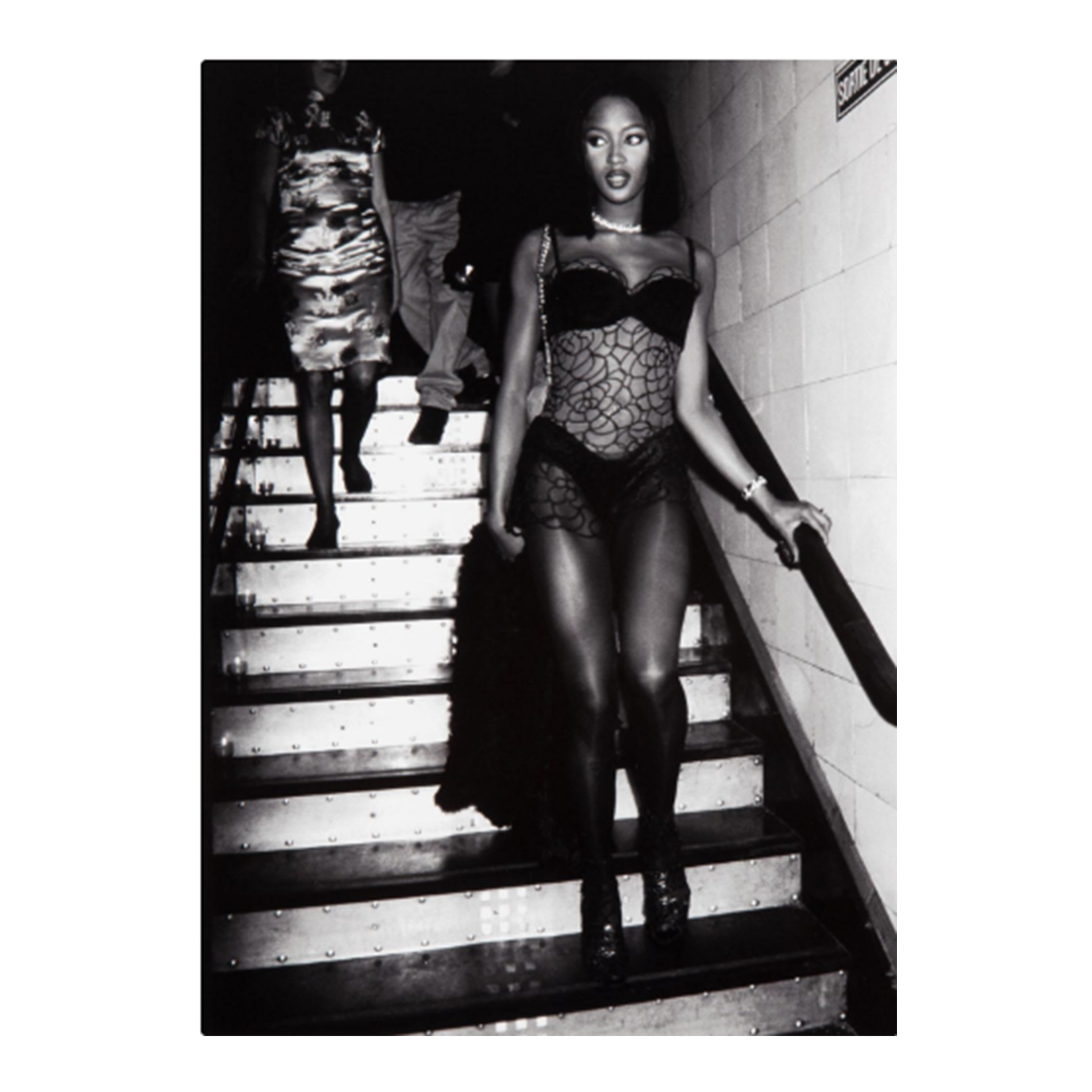
Jean Pierre Fizet (1942-2018) - French reporter who in the years 1965-1980 photographed, among others the war in Vietnam. He traveled with General De Gaulle, the Shah of Iran and European royal families. At the same time, he portrayed the stars of the era at festivals in Cannes and Venice. From a political photojournalist, he turned into a photographer of world cinema stars. For 20 years he worked on almost 80 films, and the greatest characters of the French screen looked into his camera.
Naomi Campbell is a British model, actress and singer. Since starting her career at the age of 15, she has become one of the most recognizable and influential models of the 1980s and 1990s.
JEAN PIERRE
FIZET
Naomi Campbell
gelatin silver print / Baryta paper, 9/20, 40 x 50 cm

Luc Fournol (1931-2007) – regarded as one of the greatest photographers of his generation. For Art Magazine he photographed the biggest characters from the world of art and cinema of the XXth century. His work includes portraits of Marc Chagall, Salvadore Dali, Pablo Picasso and even Presidents Charles de Gaulle and John F. Kennedy. His genius was based on his ability to create an intimate relationship between the photographer and the subject. He created magical moments captured on film, which then became part of the viewers’ lives. Thank to having friendly and trusting relationships with the artists he managed to create cinematic photos which went beyond the normal parameters of a standard portrait.
LUC
FOURNOL
Marlene Dietrich
1931-2007, a silver-gelatine copy on paper, 50,7 x 40,5 cm
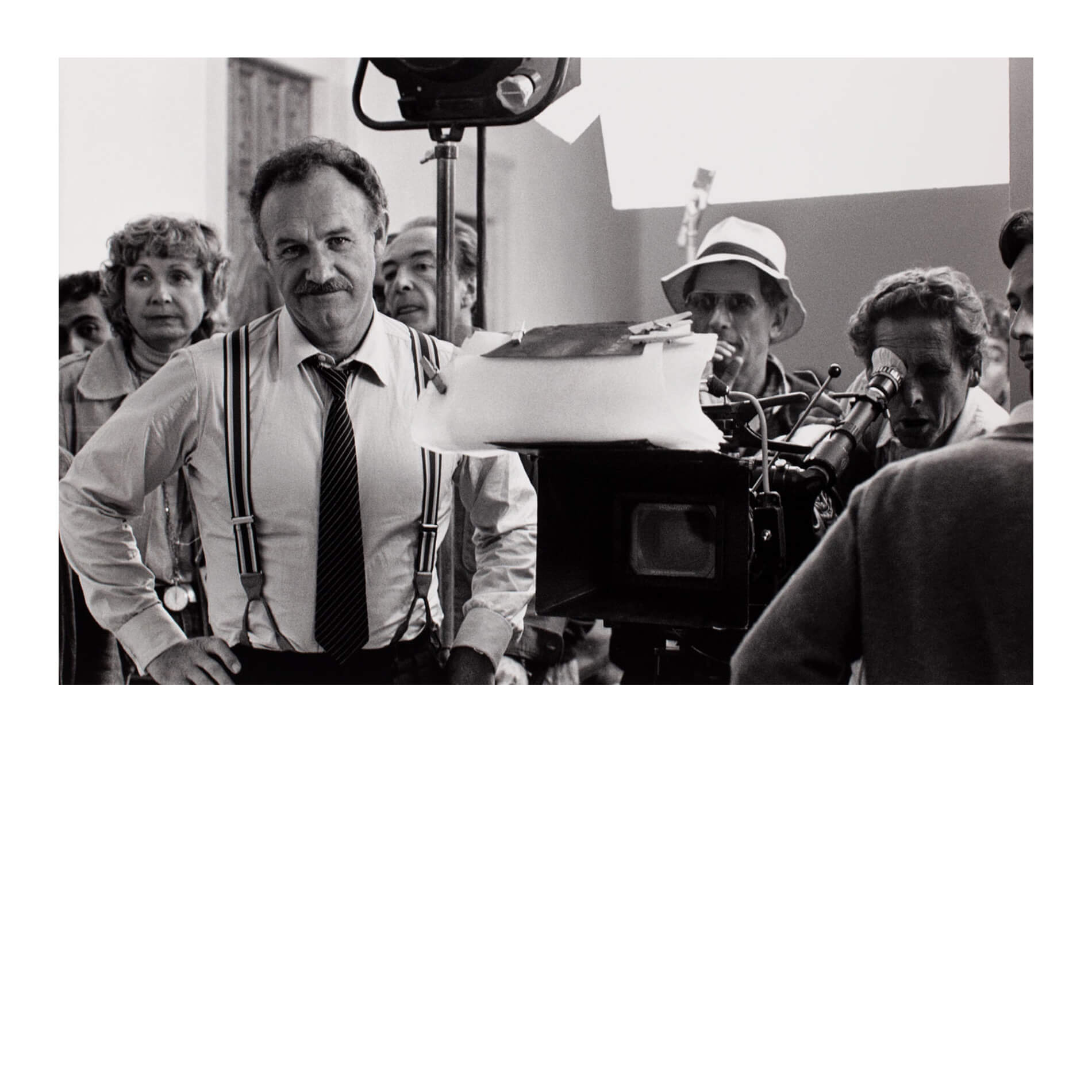
Tony Frank (1945) - a star of photography in the 1960s. Photography and music became his two passions. He was the visitor of the Golf-Drouot club, where Rock music was born in France. There he met such stars as: Johnny Hallyday, Eddy Mitchell or Chris Long. He made the first album cover for Dalton. He also photographed many celebrities. In 1961, he made the famous photograph of Louis Armstrong, which appeared on the covers of magazines. From 1964 he collaborated with the legendary French title Salut les Copains.
Tony
Frank
Gene Hackman
1982, pigment printout / archival paper, 60 x 40 cm
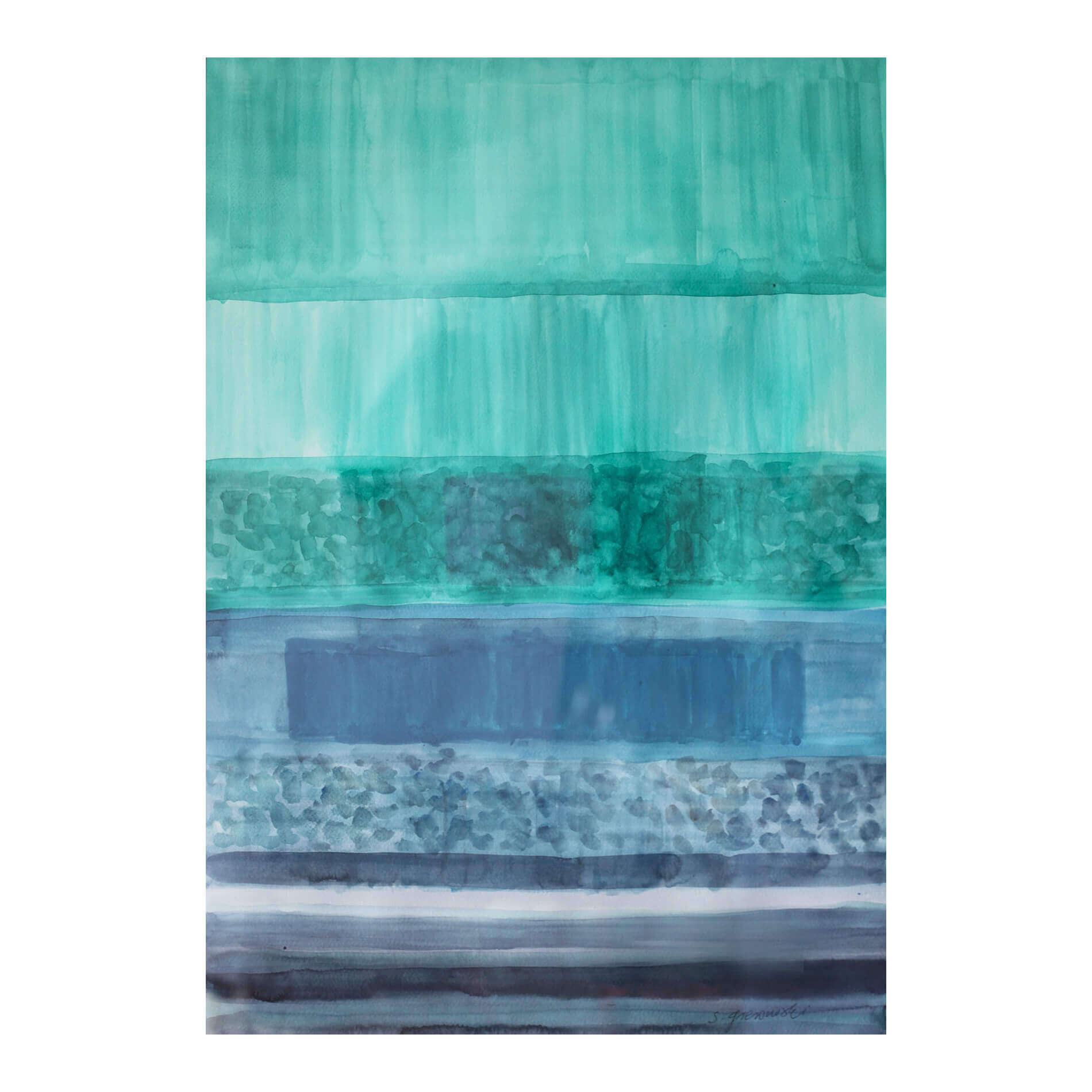
Stefan Gierowski (1925) – a representative of the contemporary avant-garde movement. He helped raise a whole generation of artists when he was the Dean of the Painting School at Warsaw School of Fine Arts from 1975 to 1981. As an artist he developed his characteristic style of almost monochrome abstracts which are based on a search for colour. Gierowski doesn’t give any of his work titles, and up till now merely distinguishes them with a Roman numeral. The key issues which his work addresses are contemplations on the themes of light, space, movement and the workings of colours. The lines in a Gierowski work can be interpreted as a reference to Physics, where they can illustrate an image of shock waves or be the borders between magnetic fields.
Stefan
Gierowski
Untitled
1995, watercolour on paper, 48 x 67 cm
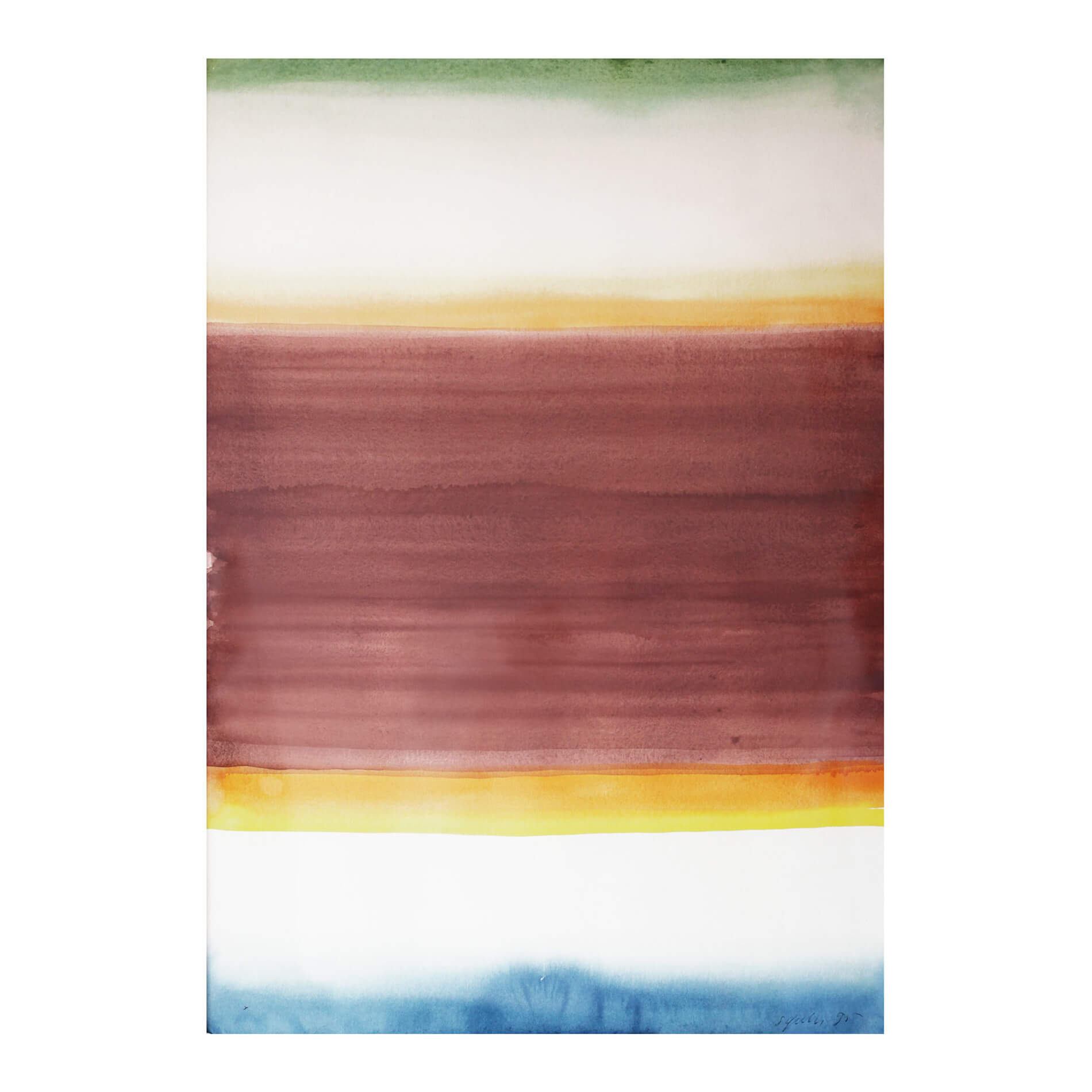
Stefan Gierowski (1925) – a representative of the contemporary avant-garde movement. He helped raise a whole generation of artists when he was the Dean of the Painting School at Warsaw School of Fine Arts from 1975 to 1981. As an artist he developed his characteristic style of almost monochrome abstracts which are based on a search for colour. Gierowski doesn’t give any of his work titles, and up till now merely distinguishes them with a Roman numeral. The key issues which his work addresses are contemplations on the themes of light, space, movement and the workings of colours. The lines in a Gierowski work can be interpreted as a reference to Physics, where they can illustrate an image of shock waves or be the borders between magnetic fields.
Stefan
Gierowski
Untitled
1995, watercolour on paper, 37 x 55 cm
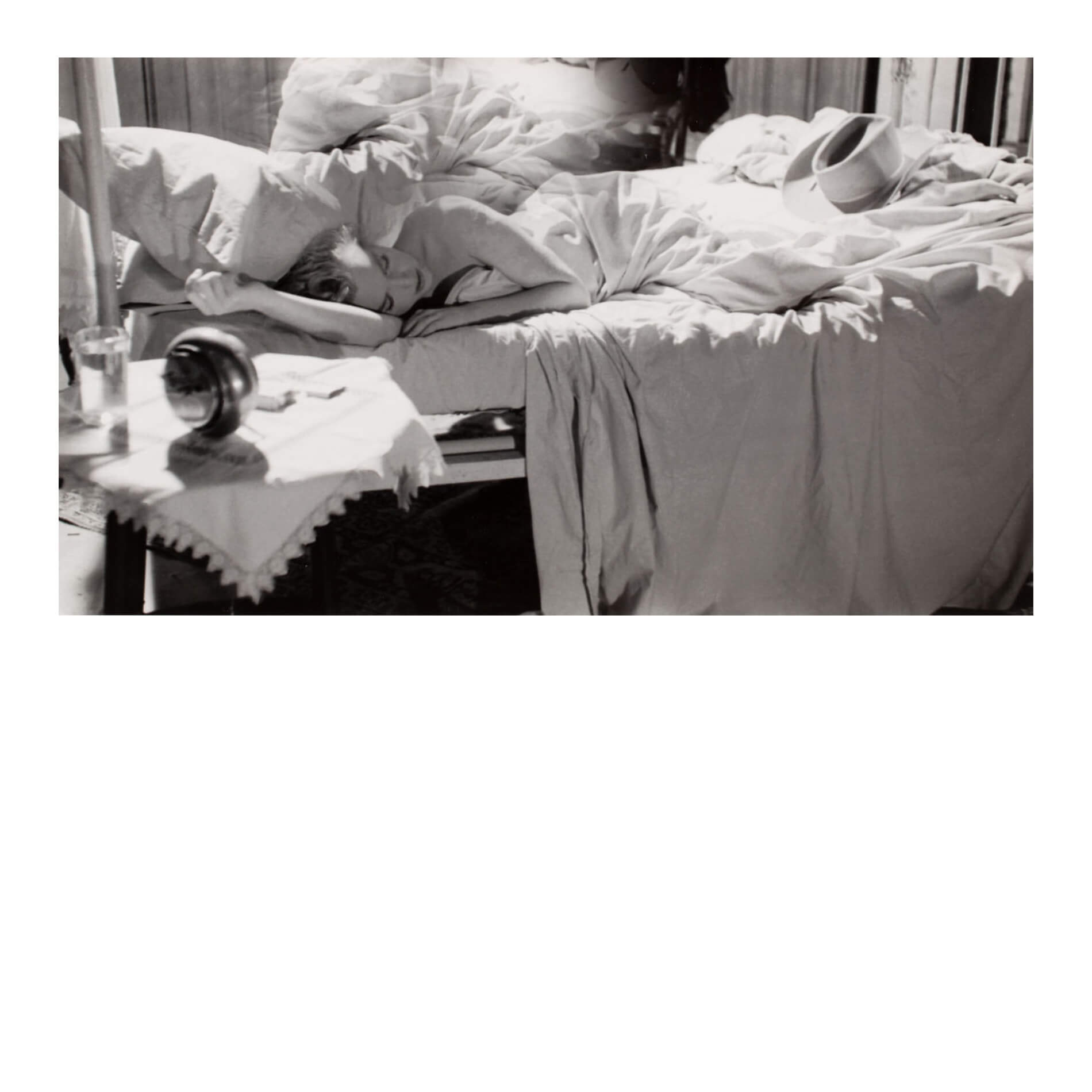
Milton H. Greene (1922-1985) - American fashion and film photographer. He collaborated with such titles like Look, Harper’s Bazaar and Vogue. He portrayed the greatest stars of the 50s and 60s: Frank Sinatra, Audrey Hepburn, Grace Kelly, Marlene Dietrich and Marlon Brando. In 1949-1957 he was professionally and privately associated with Marilyn Monroe. As her favourite photographer, friend and adviser, he co-created the legendary image of the actress. He took thousands of photos of Marilyn, but what always made them stand out from the works of others, were unique shots in private situations and natural poses.
Milton H.
Greene
Marilyn Monroe
copy gelatine-sliver/photographic paper, 20/30, 34,7 x 20 cm
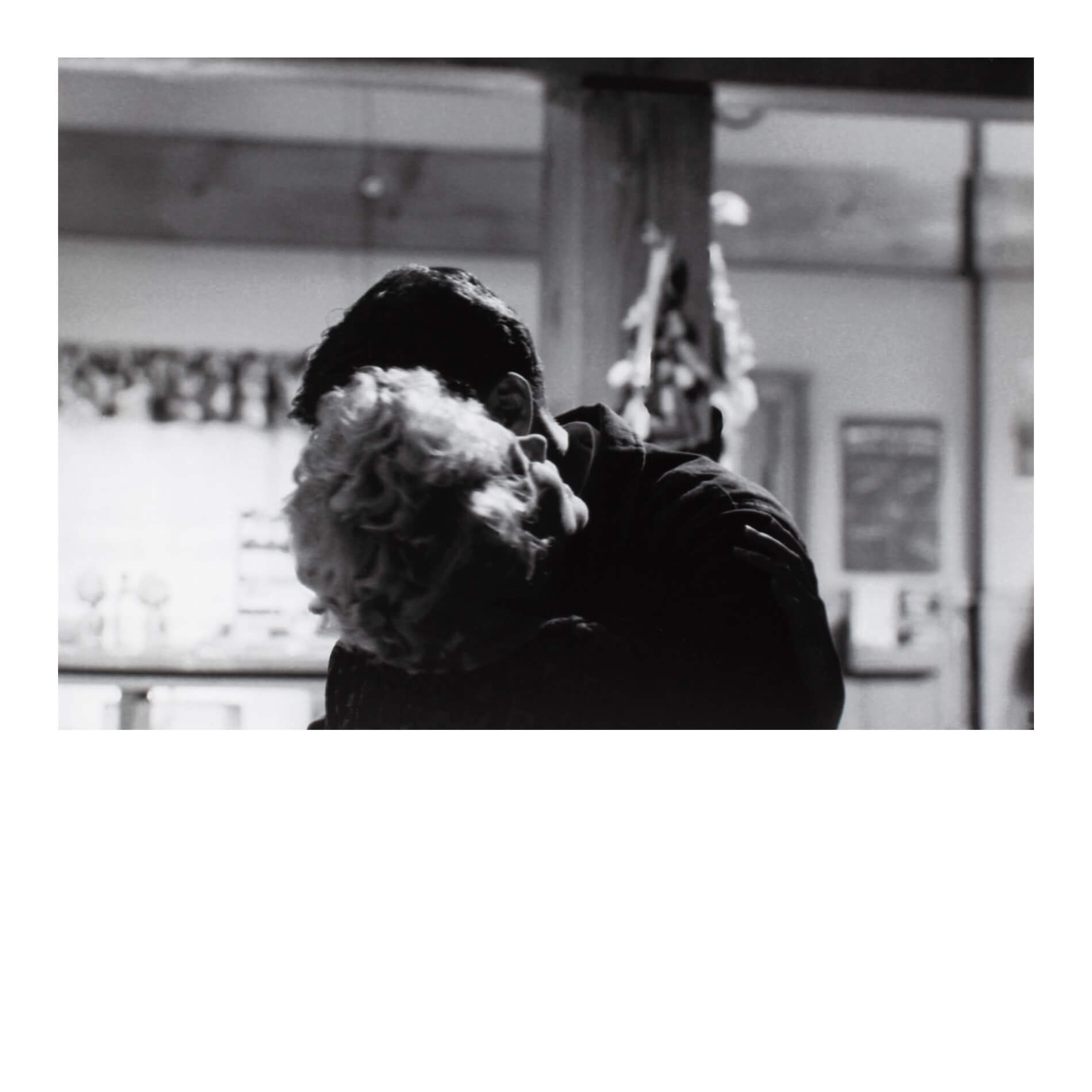
Milton H. Greene (1922-1985) - American fashion and film photographer. He collaborated with such titles like Look, Harper’s Bazaar and Vogue. He portrayed the greatest stars of the 50s and 60s: Frank Sinatra, Audrey Hepburn, Grace Kelly, Marlene Dietrich and Marlon Brando. In 1949-1957 he was professionally and privately associated with Marilyn Monroe. As her favourite photographer, friend and adviser, he co-created the legendary image of the actress. He took thousands of photos of Marilyn, but what always made them stand out from the works of others, were unique shots in private situations and natural poses.
Milton H.
Greene
Marilyn Monroe
1956, copy gelatine-sliver/photographic paper, 2/30, 55 x 40 cm
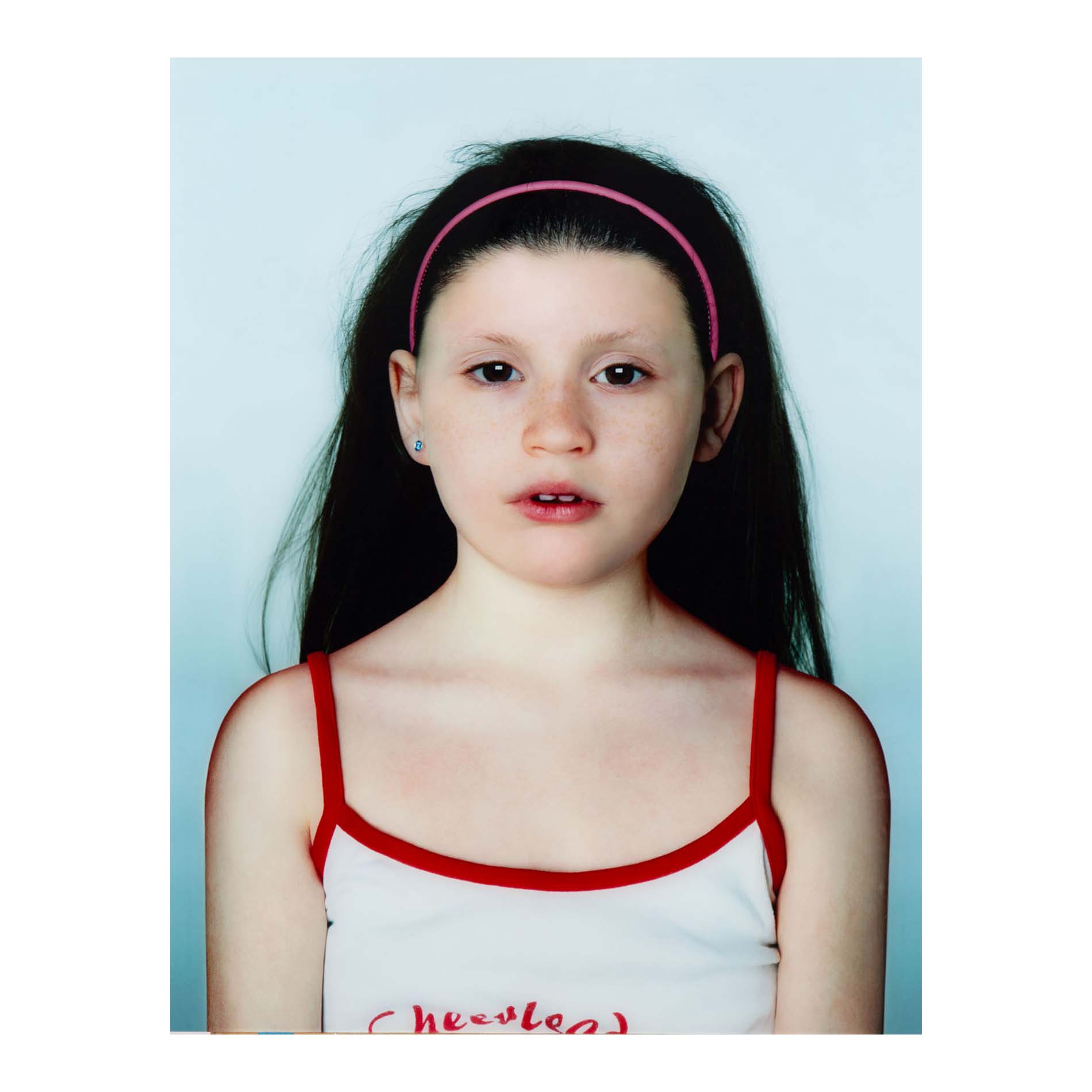
Aneta Grzeszykowska (1974) – Polish artist, author of photographs, objects and films. Winner of Polityka's Passports for 2013. She graduated from the Faculty of Graphics at the Academy of Fine Arts in Warsaw. In her projects she moves the problem of the identity of the individual and the perception of another human being, mediated through the medium. Currently she is focused on the defragmentation of the body and our memory, automithology and childhood traumas. She collaborates with the Raster Gallery in Warsaw.
Aneta
Grzeszykowska
#16, from the "Portraits" series"
2006, C-Print/Plexiglass, photo paper, dibond, 64,5 x 82 x cm, 3/5
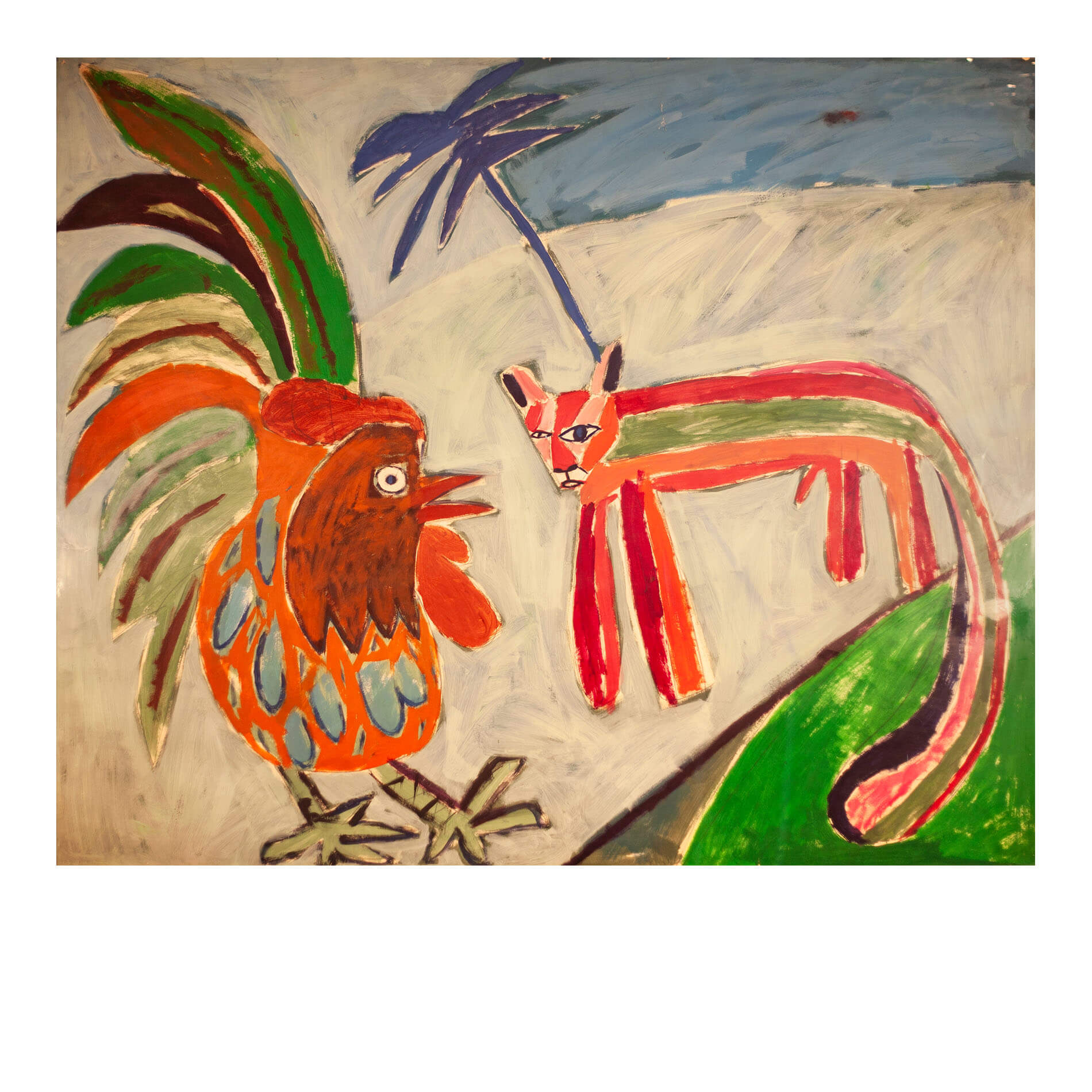
Ryszard Grzyb (1956) – painter and poet, member of the legendary Gruppa in the 1980s, co-editor of the magazine “Oj, dobrze już!”. His work can be characterised by intensive colours and an expressive way of painting figures, made with fast, dynamic brush strokes. He connects painting with literary creation. In 2005 his “Zdania Napowietrzne (Overhead sentences) was published which is a synthesis of a multi-media project which was started in 2004. Ryszard Grzyb collected short poetic sentences, “absurd haikus” and placed them in new contexts: on billboards, post cards, pencils, mugs, neon lights and information boards, which you can see in various places around Warsaw.
RYSZARD
GRZYB
Tiger cats
1984, goache on paper, 130 x 107,5 cm
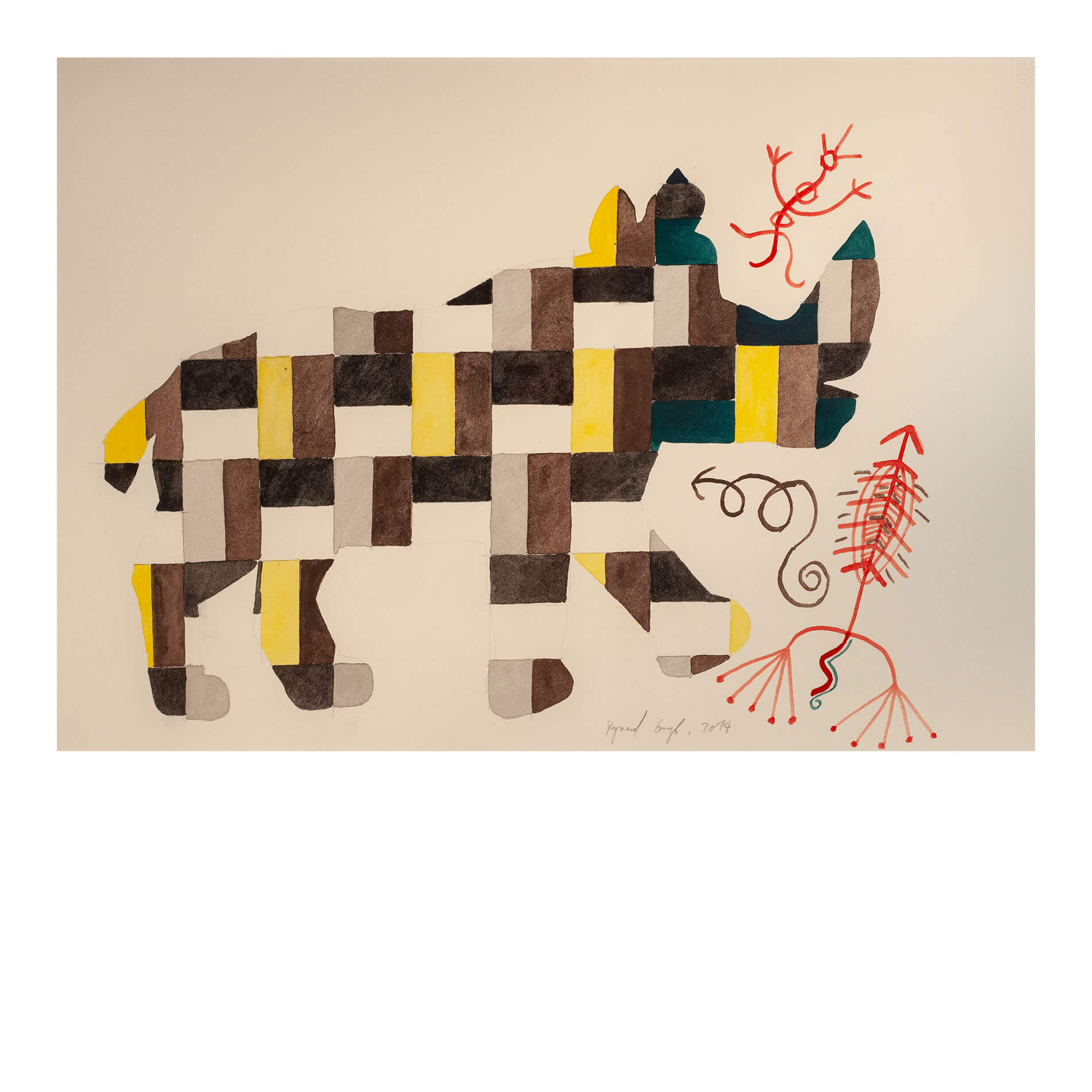
Ryszard Grzyb (1956) – painter and poet, member of the legendary Gruppa in the 1980s, co-editor of the magazine “Oj, dobrze już!”. His work can be characterised by intensive colours and an expressive way of painting figures, made with fast, dynamic brush strokes. He connects painting with literary creation. In 2005 his “Zdania Napowietrzne (Overhead sentences) was published which is a synthesis of a multi-media project which was started in 2004. Ryszard Grzyb collected short poetic sentences, “absurd haikus” and placed them in new contexts: on billboards, post cards, pencils, mugs, neon lights and information boards, which you can see in various places around Warsaw.
RYSZARD
GRZYB
Rhinoceros
2014, watercolour, 54 x 36 cm

Ryszard Grzyb (1956) – painter and poet, member of the legendary Gruppa in the 1980s, co-editor of the magazine “Oj, dobrze już!”. His work can be characterised by intensive colours and an expressive way of painting figures, made with fast, dynamic brush strokes. He connects painting with literary creation. In 2005 his “Zdania Napowietrzne (Overhead sentences) was published which is a synthesis of a multi-media project which was started in 2004. Ryszard Grzyb collected short poetic sentences, “absurd haikus” and placed them in new contexts: on billboards, post cards, pencils, mugs, neon lights and information boards, which you can see in various places around Warsaw.
RYSZARD
GRZYB
Tortoise
2014, watercolour on paper, 37 x 26 cm
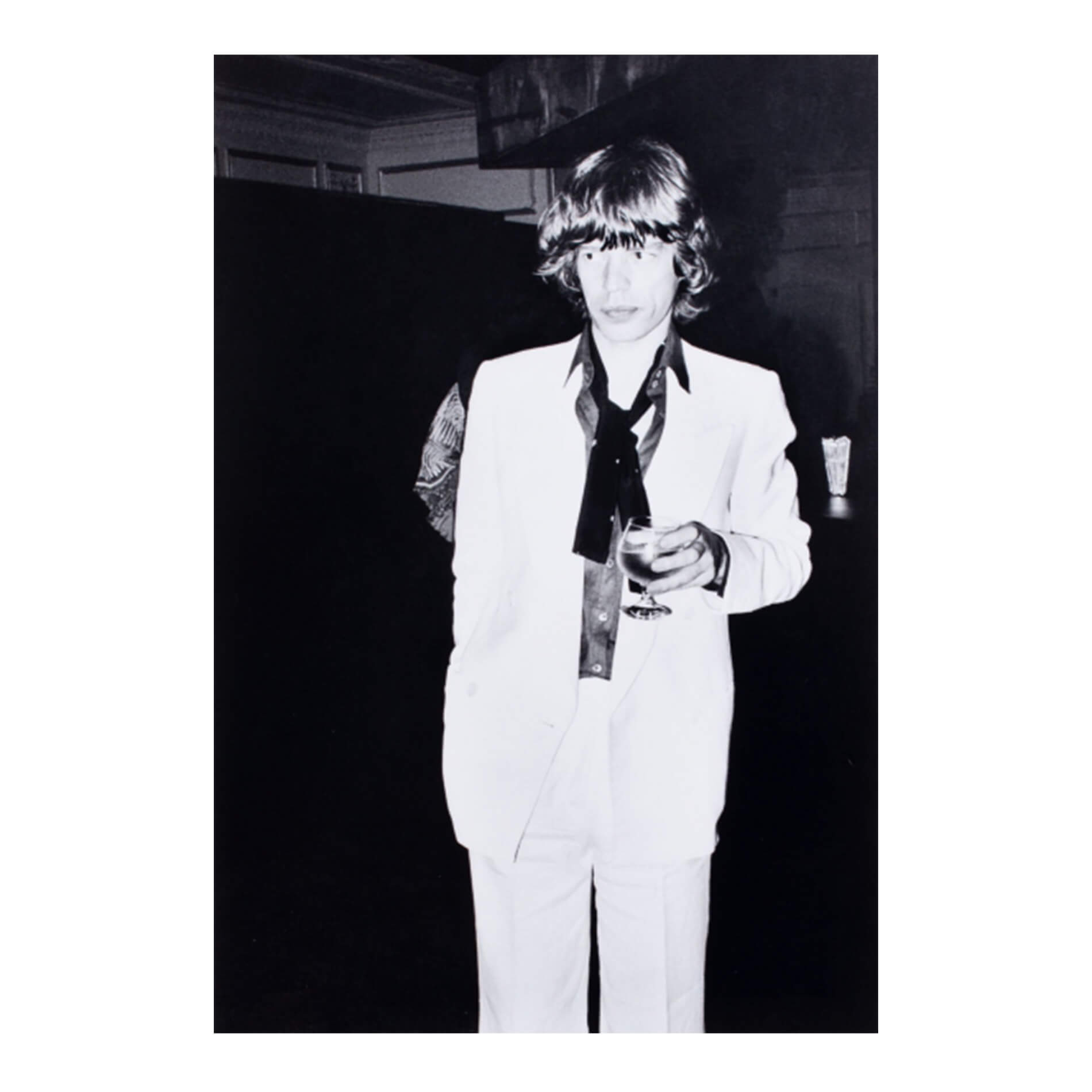
Rose Hartman (1937) – photographer, traveller and writer. She photographed the stars of music, film as well as New York celebrities. Her photos were published in such titles as Art+Auction, Elle, Harper’s Bazaar, the New York Times, Vanity Fair and Vogue. She was one of the first to photograph behind the scenes at fashion shows, showing the models just before they went out onto the catwalk. Her photographs were also published in the famous album “Bird of Paradise”. Hartman photographed New York night life over 4 decades, from Studio 54 to the Costume Costume Gala in the Metropolitan Museum.
ROSE
HARTMAN
Mick Jagger
1977, gelatine-silver copy/photographic paper, 3/30, 41 x 60 cm
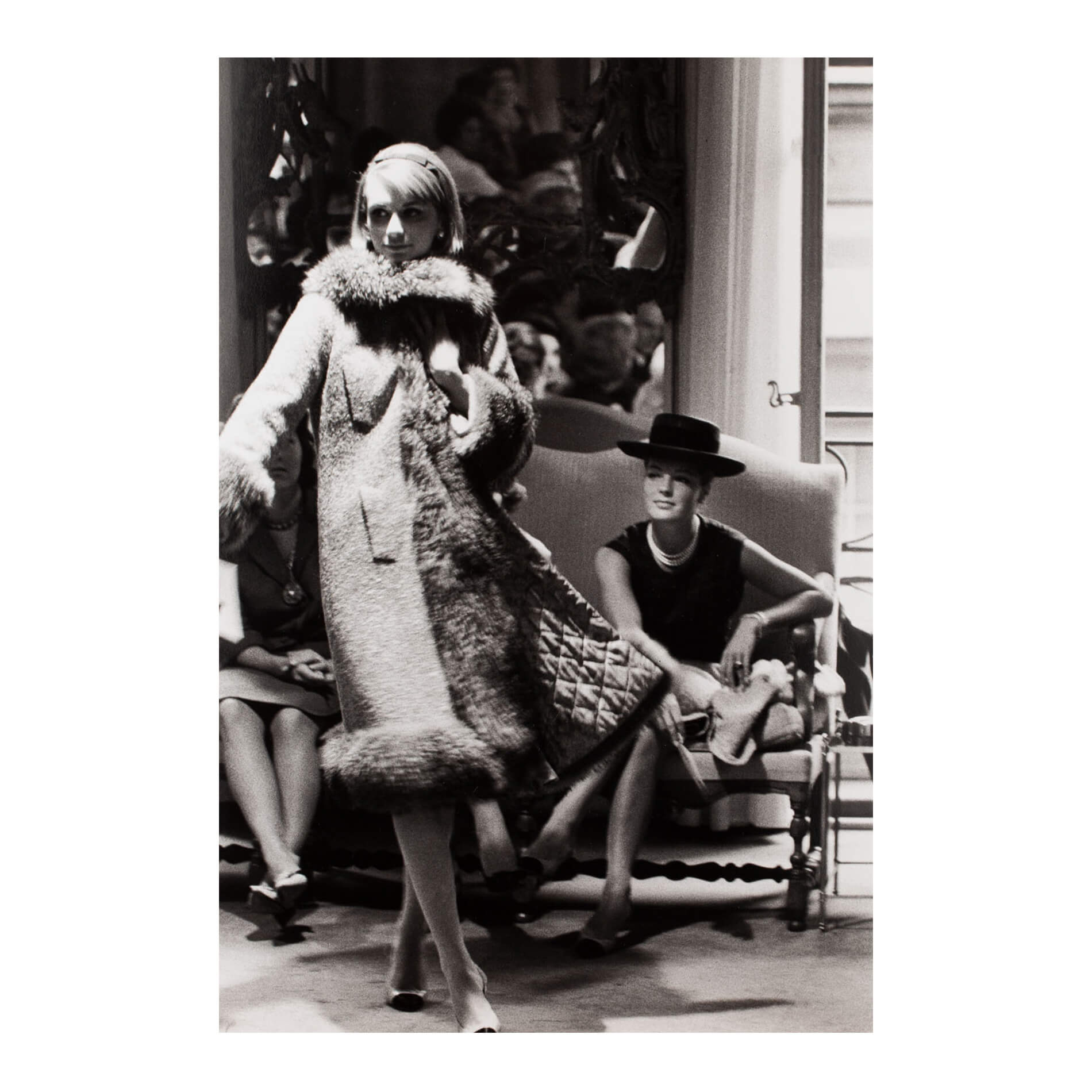
Shahrokh Hatami (1928) - a famous Iranian photographer who began his career as a journalist in a local newspaper. Over seven decades of being a reporter, he captured stunning moments in the world history, such as the overthrow of Iran's first democratically elected prime minister, Mohammad Mossadeq, as a result of the coup in 1953. He combined the work of being the celebrities photographer with the reporter work. He was documenting dramatic images of the Islamic revolution in 1979 and as well the backstage of the English rock band - The Beatles in the early years of its existence. His photographs were published on the magazines covers.
Shahrokh
Hatami
Romy Schneider
copy gelatine-sliver/photographic paper, 30,5 x 40,5 cm
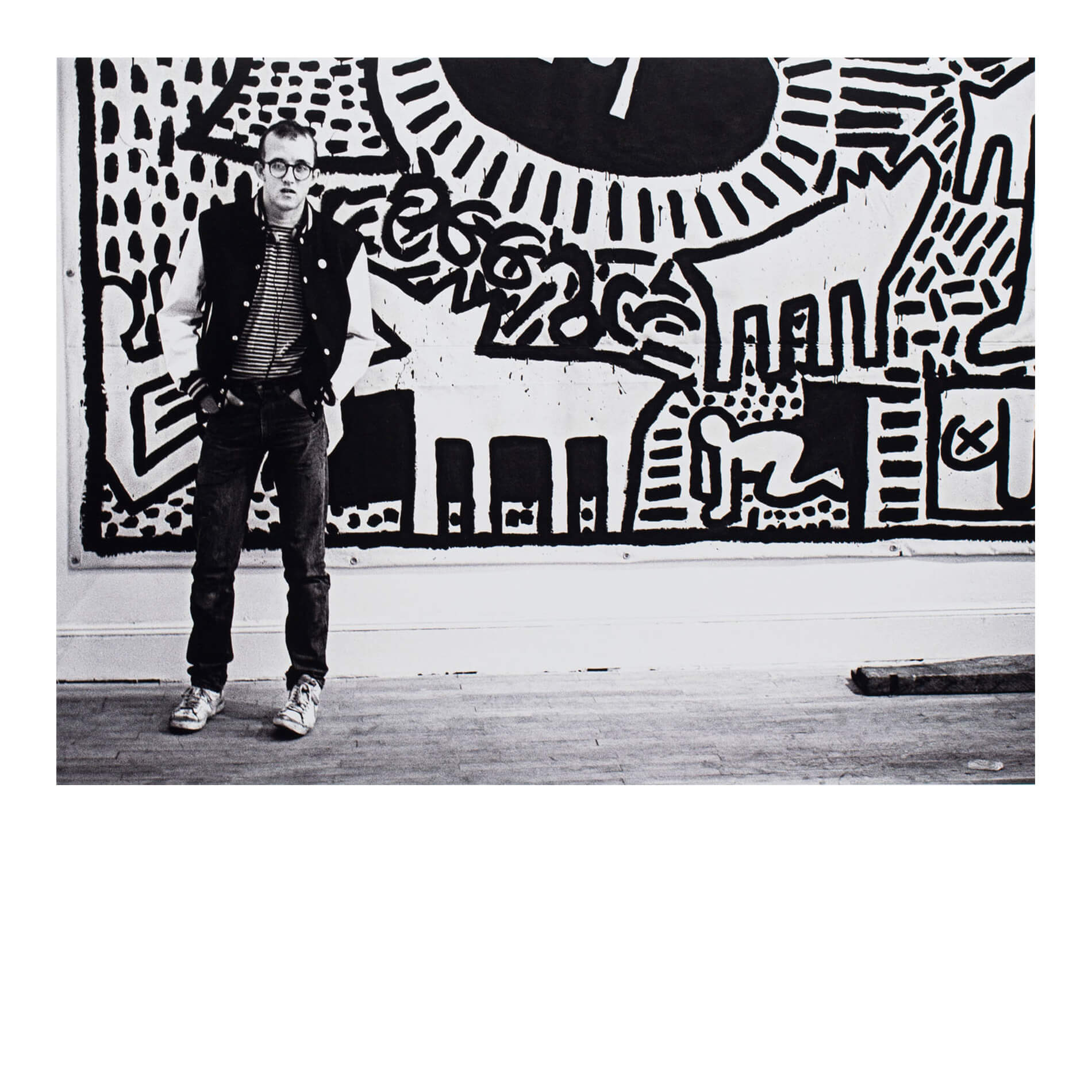
Pierre Houle (1945-1986) – one of the most flamboyant and charming photographer of his generation. It was him who in the middle 60's open the way to New York for French photographers.
In the photo we see the American artist Keith Haring in his studio. Many, despite the young age, considered him a phenomenon. He drew constantly and on any surface, without any unnecessary preparation or sketch. Keith Haring penetrated the underground world of the New York metropolis and was recognizable for his characteristic sketch-line. He was fascinated with the nightlife of New York and the city itself, which he made the canvas for his art. He is one of the most famous street art artists of the 1980s. Haring applied his drawings to the body of Grace Jones, clothes by Vivienne Westwood or album covers by David Bowie. Andy Warhol he used to call his friend. His works were presented, among others at Shafrazi Gallery and Whitney Museum and at Documenta 7. at Kassel and São Paulo Biennial. He died at the age of 31.
Pierre
Houles
Keith Haring in his studio
1982 C-Print/photo paper, 1/9, 39 x 29,5 cm
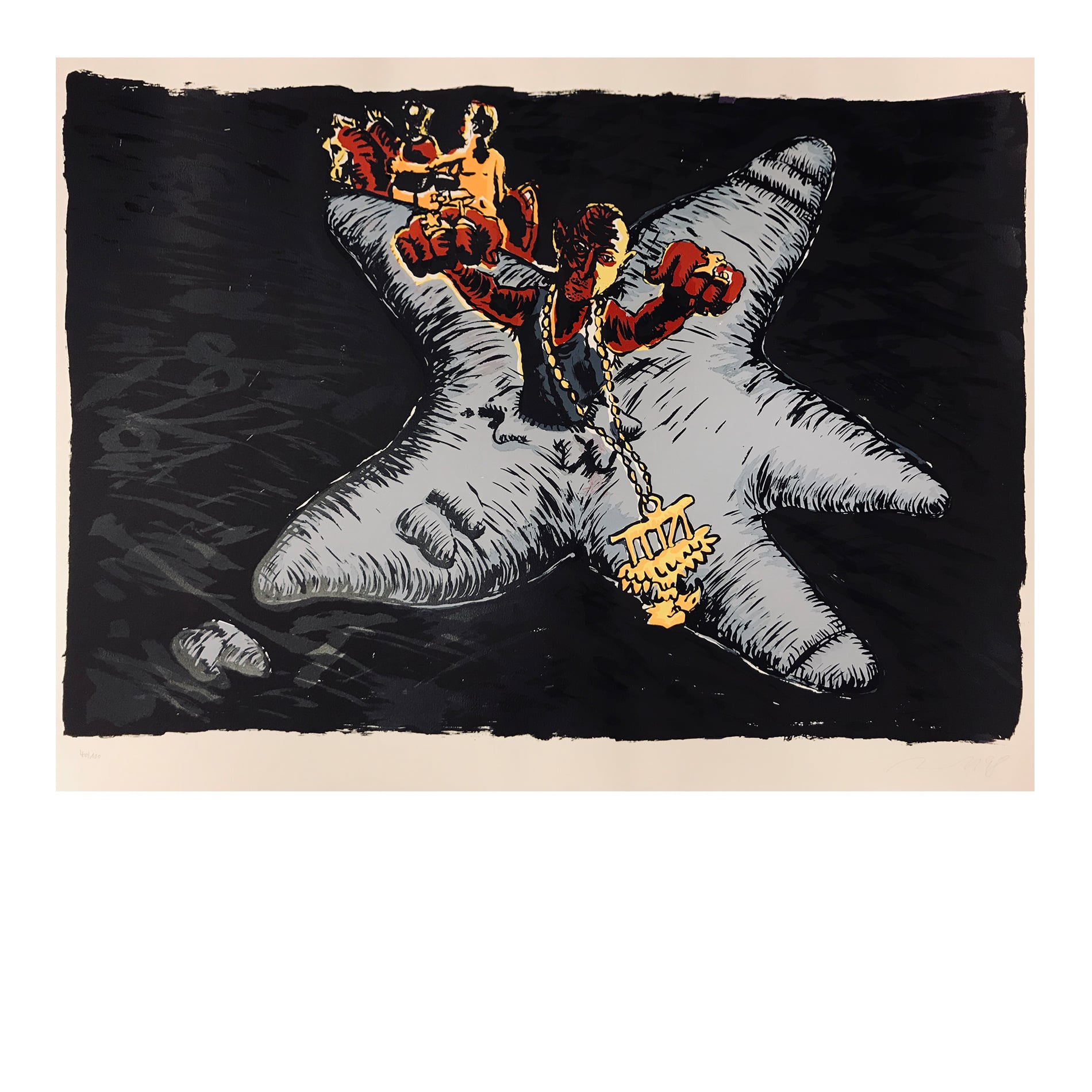
Jörg Immendorff (1945 - 2007) - provocative painter and sculptor who is considered one of Germany’s most important painters of the XX century. He is known for his dense, bizarre scenes laden with a wide range of symbolic influences pulled from art history, mythology and German history. He was a member of the art movement Neue Wilde. Immendorff’s work reflects the political and psychological turmoil imbedded in postwar German life, in equal parts romping comedy and tragedy. He depicts characters from both his personal life and greater culture in chaotic, large-scale oil paintings that represents an allegory of the ideological clash between the East and West.
Jörg
Immendorff
Zeig was Du hast (Show what you have)
1998, serigraphy on paper, 40/100, 108 x 80 cm
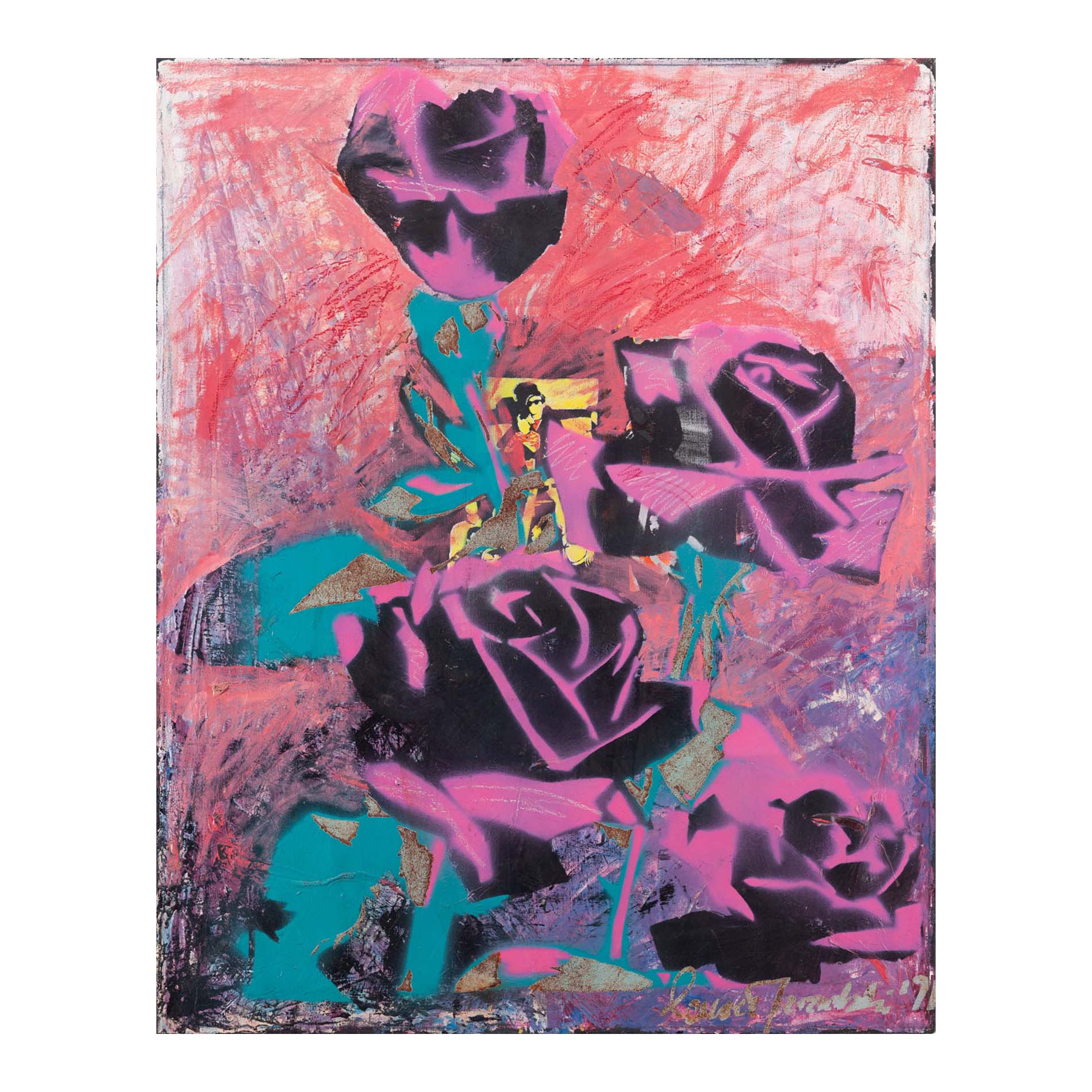
Paweł Jarodzki (1958 - 2021) - made his debut in the 1980s as the founder and leader of the legendary group Luxus from Wrocław. Jarodzki's perverse art is based on a pastiche of pop-art poetics and the use of templates created on the basis of photos from the press and magazines. The artist's works are characterized by an expressive, critical style. Observation of reality was a constant source of inspiration for him. Jarodzki tracked manifestations of absurdity and hypocrisy, and then ridiculed them with his art using ironic comments or slogans.
PAWEŁ
JARODZKI
Composition
1988-1989, acrylic, pastel, stencil / canvas, 81,5 x 100,5 cm
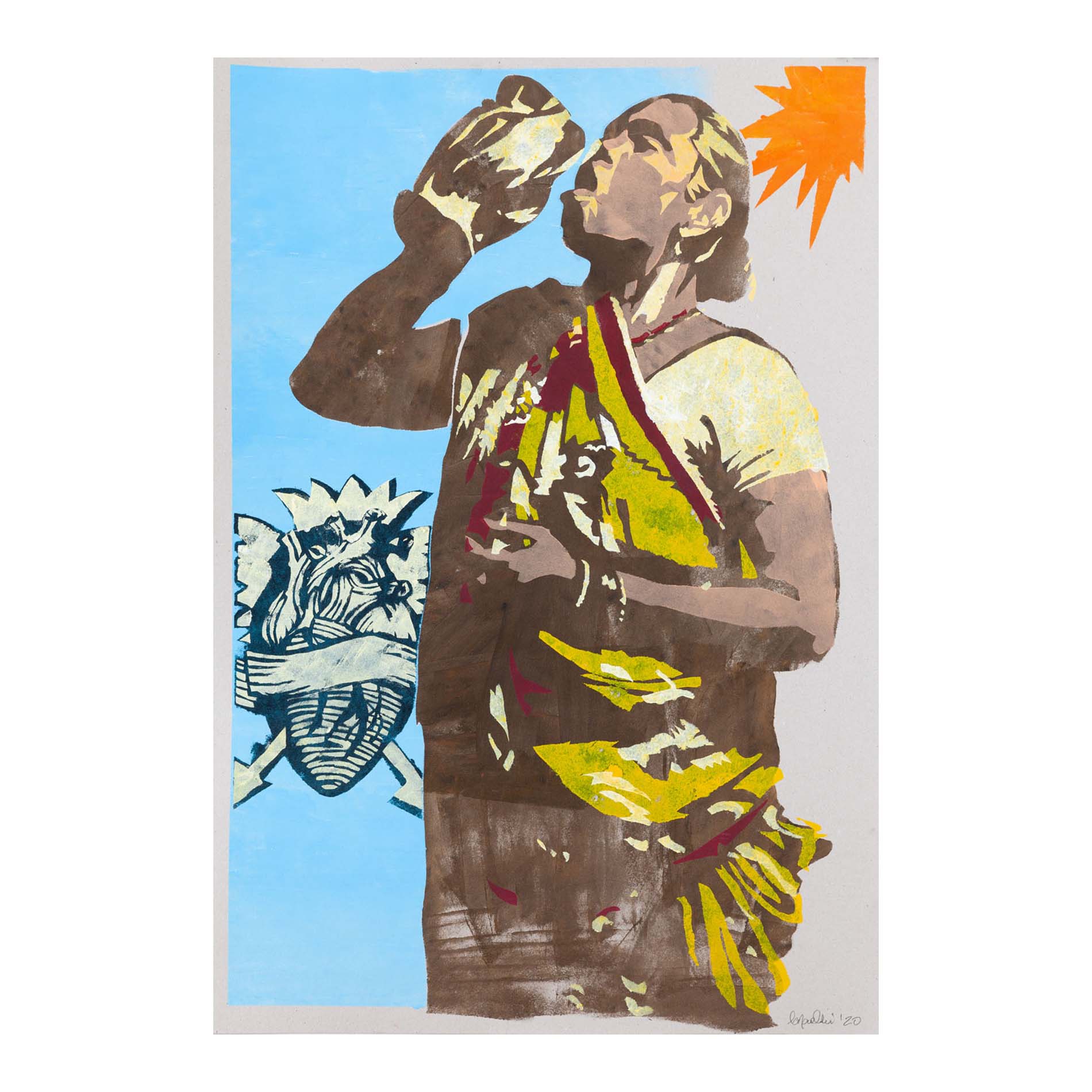
Paweł Jarodzki (1958 - 2021) - made his debut in the 1980s as the founder and leader of the legendary group Luxus from Wrocław. Jarodzki's perverse art is based on a pastiche of pop-art poetics and the use of templates created on the basis of photos from the press and magazines. The artist's works are characterized by an expressive, critical style. Observation of reality was a constant source of inspiration for him. Jarodzki tracked manifestations of absurdity and hypocrisy, and then ridiculed them with his art using ironic comments or slogans.
PAWEŁ
JARODZKI
Untitled
2020, acrylic, stencil/paperboard, 70 x 100 cm

Paweł Jarodzki (1958 - 2021) - made his debut in the 1980s as the founder and leader of the legendary group Luxus from Wrocław. Jarodzki's perverse art is based on a pastiche of pop-art poetics and the use of templates created on the basis of photos from the press and magazines. The artist's works are characterized by an expressive, critical style. Observation of reality was a constant source of inspiration for him. Jarodzki tracked manifestations of absurdity and hypocrisy, and then ridiculed them with his art using ironic comments or slogans.
PAWEŁ
JARODZKI
Untitled - triptych
2008, acrylic/canvas, 200 x 140 cm
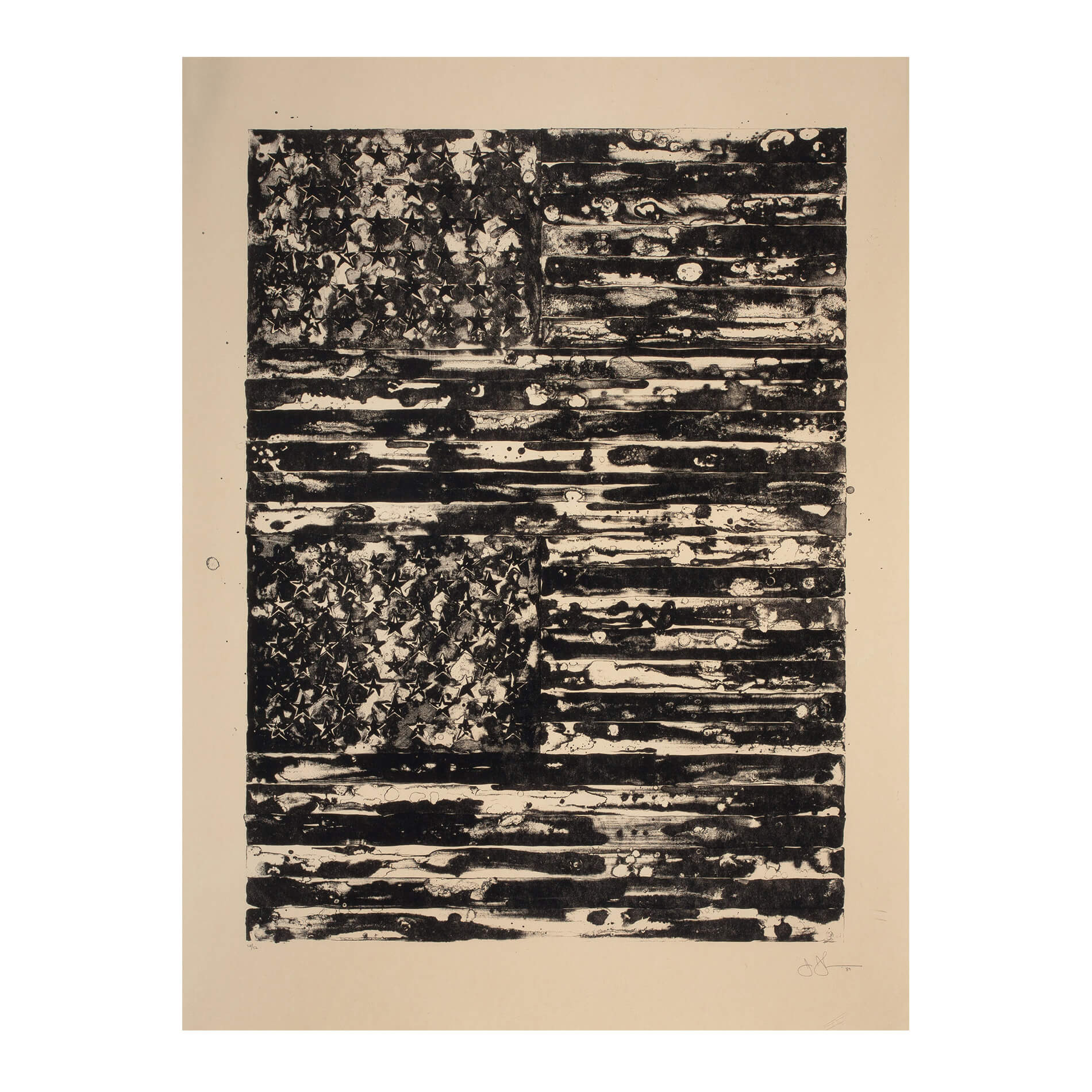
Jasper Johns (1930) – a precursor to pop and minimal art, a painter known for his reinterpretations of the American flag. Winner of the Grand Prix at the Venice Biennale in 1988. After returning home from the Korean War he met the famous art dealer Leo Castellego, who organised his first individual exhibition. The head of MOMA at this time, Alfred Barr Jr then bought three of John’s works at the exhibition opening and, in this way, a completely unknown artist became a star. In his “Flags” which are symbols of his private resistance, one can see a critique of the USA’s foreign policy and the war in Korea, as well as the nuclear bombs dropped on Hiroshima and Nagasaki. During his career he also worked with the composer John Cage and the artist Robert Rauschenberg, his long-term partner.
JASPER
JOHNS
Two Flags
1980, lithograph on paper, 45/56, 91,4 x 120,7 cm
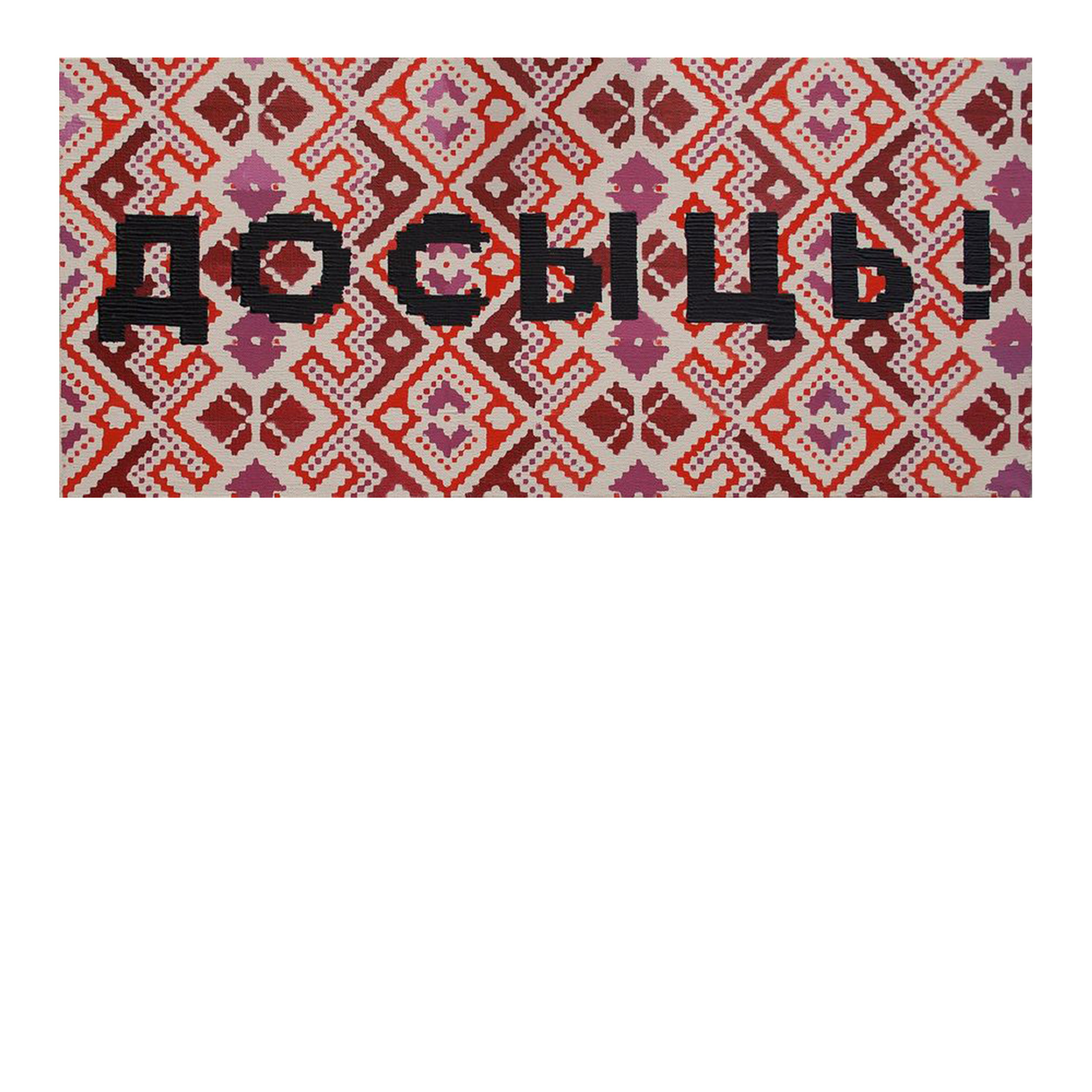
Zhanna Kapustnikova - spent 12 years in academic art education. Currently, journalists call her the most punk artist in Belarus. After graduating from the Academy of Fine Arts in Minsk in 1994, Zhanna managed to work for several years with the legendary group "Piesniary" under the supervision of Vladimir Mulawin. At the same time, she worked professionally as the lead artist in the studios of the Opera Theater and Ballet of Belarus, in the film and television industry. Her works have been exhibited in Estonia (Tallinn, Pärnu); Latvia (Riga); China (Beijing, Shanghai, Canton); Russia (St. Petersburg, "Erarta"); Great Britain (London); Switzerland (Art Zurich).
ZHANNA
KAPUSTNIKKOVA
Enough
2020, acrylic, tempera on canvas, 55 x 22 cm
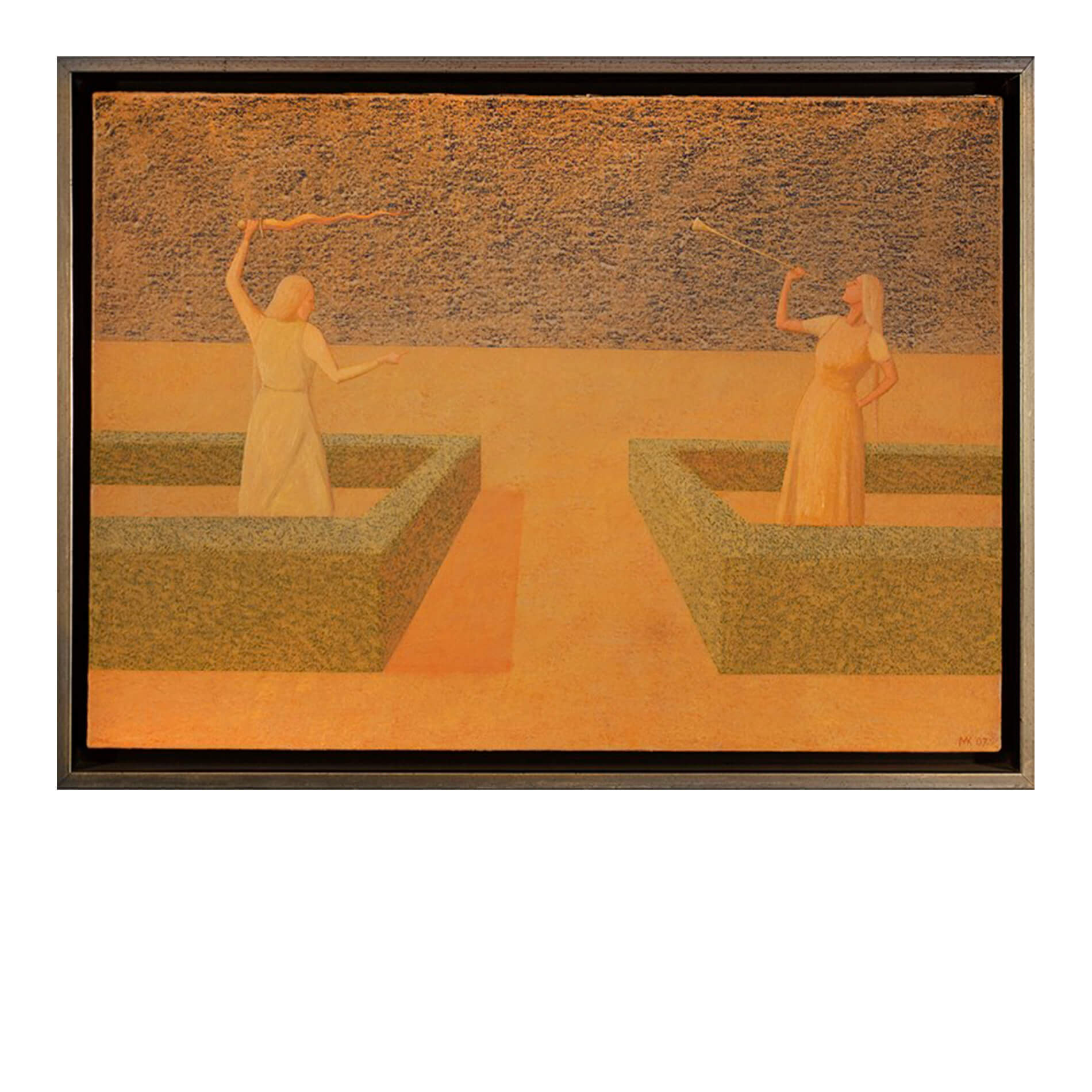
Mikołaj Kasprzyk (1953) – has one of the most poetic styles of painting; finished painting studies at the Warsaw Academy of Fine Arts, where he later worked. In 2001 he won the prize for the best painting of the year in the Art & Business competition. His simple, figurative style is influenced by the Italian Quattrocenta. The Artist creates figures in an unreal landscape, on the basis on photographs that he has taken earlier. The heroes of his paintings have to play imaginary roles: duelling couples, dancers and musicians. The artist is a close observer of the life around him and the inter-relations between people, which he then comments on in his work.
MIKOŁAJ
KASPRZYK
Angels’ quarrel
2007, oil on canvas, 54 x 38 cm

Jeff Koons (1955) – reputation for liking a scandal, the most highly valued living artist in the world, someone paid 91 million dollars for his sculpture “Rabbit”. Koons is highly regarded as an artist who with his brave paintings and monumental sculptures uniquely reflects contemporary mass culture. Inspired by kitsch and commercial aesthetics, this American artist has manged to create his own characteristic style. Everyone can recognise his blown up, colourful dogs made of steel, and various rabbits and tulips which when placed in public spaces look like gigantic balloons. The artist has taken part in numerous prestigious exhibitions in institutions all over the world. He also is happy to be involved in commercial activities for different brands, e.g. BMW, Louis Vuitton and Dom Perignon.
JEFF
KOONS
Tulips
2015, print on porcelain, 186/2500, diameter 31,8 cm
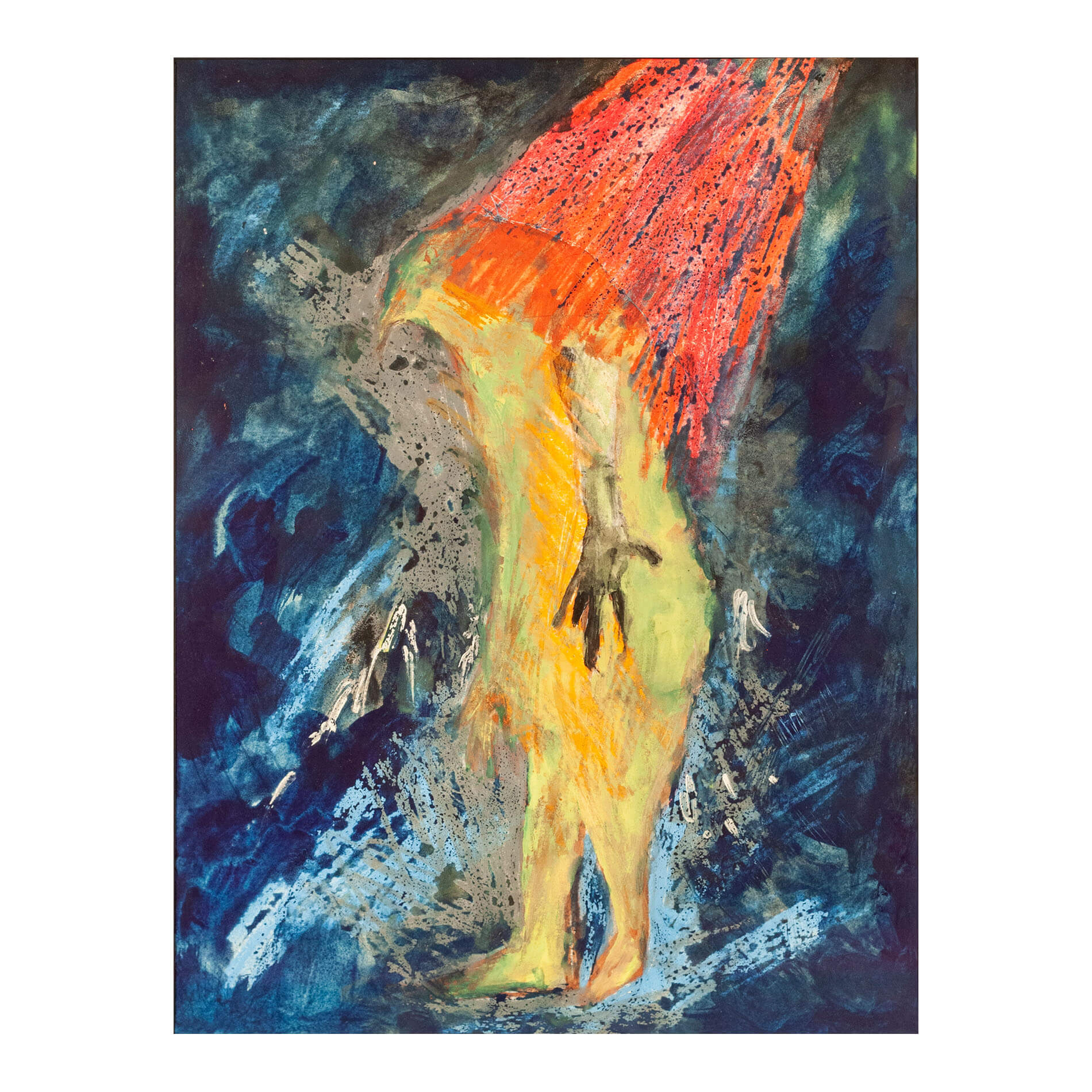
Paweł Kowalewski (1958) – founder of the artistic group Gruppa and an icon of Polish art of the 1980s, his work came from the time of state transformation and are an important commentary the times of communist Poland. A post-conceptualist who sensitises the public to their surroundings. An artist-rebel, academic tutor and a poet. Is bored by the mainstream, but this doesn’t change the fact that he has still found himself to be in the canon of Polish art. He is a penetrating analyst of the everyday, thanks to which from the kaleidoscope of events and happenings he is able to bring out his artistic manifesto. Co-founder of the magazine “Oj, dobrze już!”, the author of famous works such as “Mon Cheri Bolscheviq”, the installation “Totalitarianism Simulator” or the photographic series “Nie wolno/Europeans only” (Forbidden/Europeans Only). Kowalewski’s works can be found in the largest Polish museums, as well as in many national and international private collections.
PAWEŁ
KOWALEWSKI
Shower Blood
1984, pastel, watercolour on paper, 29 x 38 cm
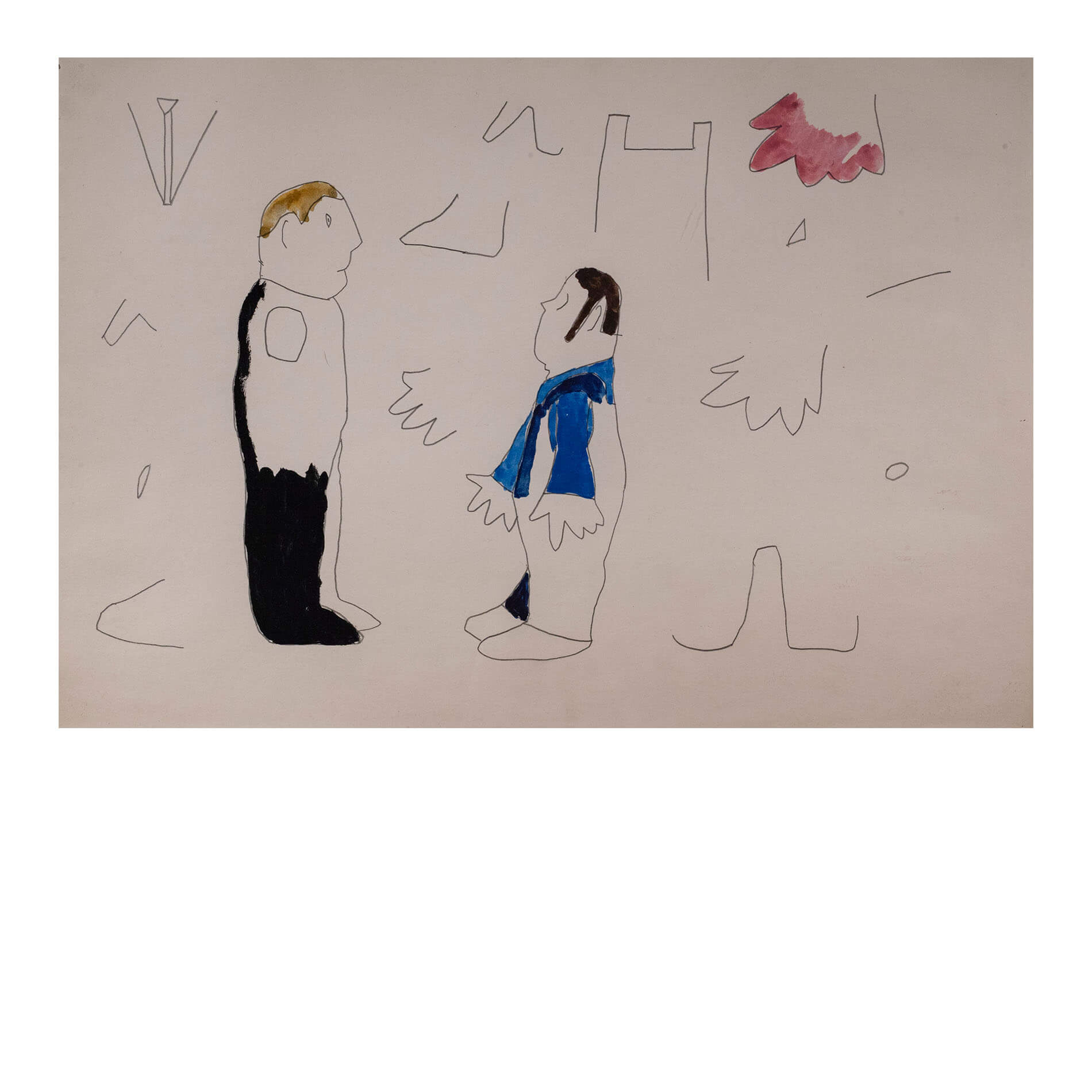
Paweł Kowalewski (1958) – founder of the artistic group Gruppa and an icon of Polish art of the 1980s, his work came from the time of state transformation and are an important commentary the times of communist Poland. A post-conceptualist who sensitises the public to their surroundings. An artist-rebel, academic tutor and a poet. Is bored by the mainstream, but this doesn’t change the fact that he has still found himself to be in the canon of Polish art. He is a penetrating analyst of the everyday, thanks to which from the kaleidoscope of events and happenings he is able to bring out his artistic manifesto. Co-founder of the magazine “Oj, dobrze już!”, the author of famous works such as “Mon Cheri Bolscheviq”, the installation “Totalitarianism Simulator” or the photographic series “Nie wolno/Europeans only” (Forbidden/Europeans Only). Kowalewski’s works can be found in the largest Polish museums, as well as in many national and international private collections.
PAWEŁ
KOWALEWSKI
This is why not all people are equal – sketch
1989, pencil, watercolour on paper, 41 x 28,5 cm
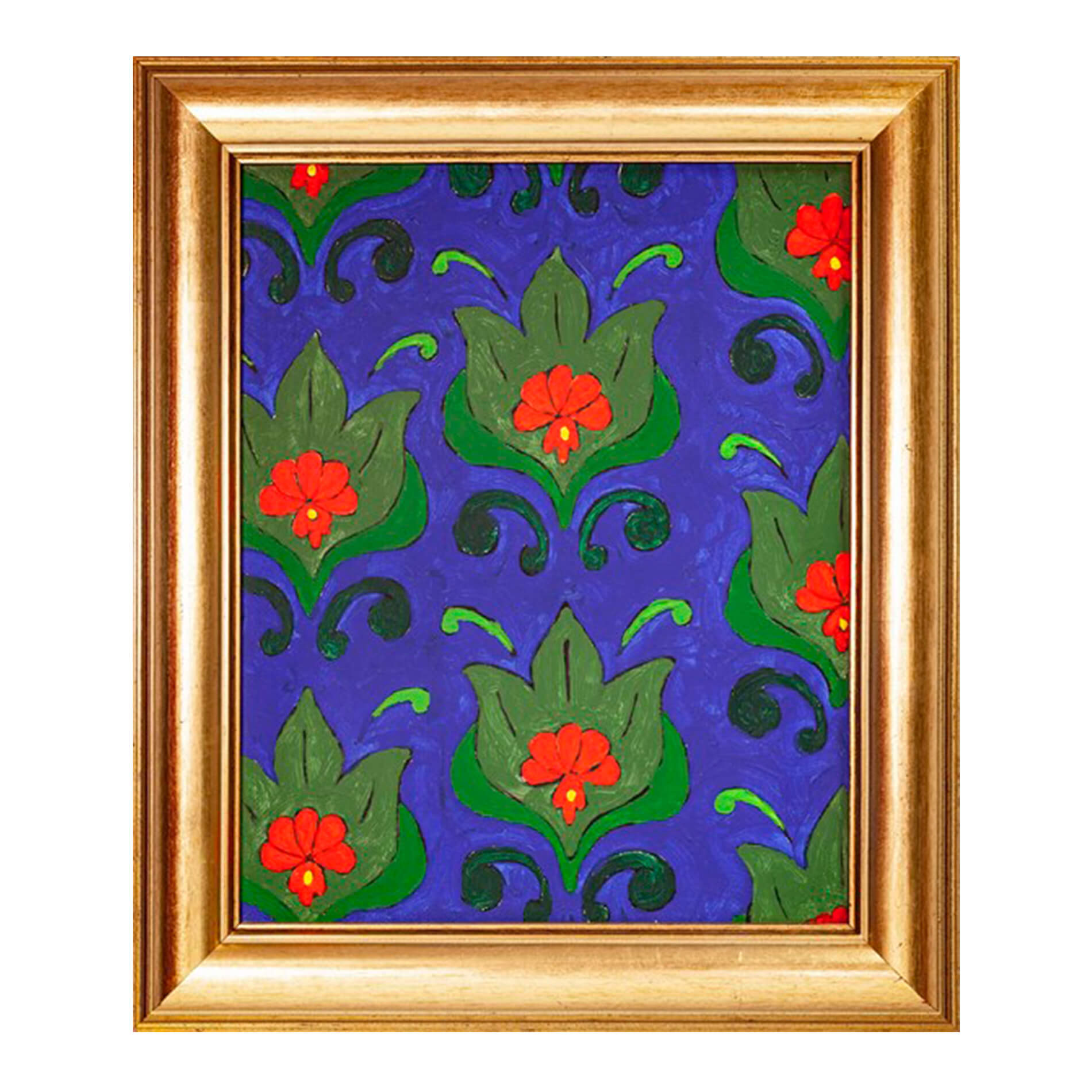
Paweł Kowalewski (1958) – founder of the artistic group Gruppa and an icon of Polish art of the 1980s, his work came from the time of state transformation and are an important commentary the times of communist Poland. A post-conceptualist who sensitises the public to their surroundings. An artist-rebel, academic tutor and a poet. Is bored by the mainstream, but this doesn’t change the fact that he has still found himself to be in the canon of Polish art. He is a penetrating analyst of the everyday, thanks to which from the kaleidoscope of events and happenings he is able to bring out his artistic manifesto. Co-founder of the magazine “Oj, dobrze już!”, the author of famous works such as “Mon Cheri Bolscheviq”, the installation “Totalitarianism Simulator” or the photographic series “Nie wolno/Europeans only” (Forbidden/Europeans Only). Kowalewski’s works can be found in the largest Polish museums, as well as in many national and international private collections.
PAWEŁ
KOWALEWSKI
Fin de siècle
1992, oil on canvas, 31,5 x 39 cm
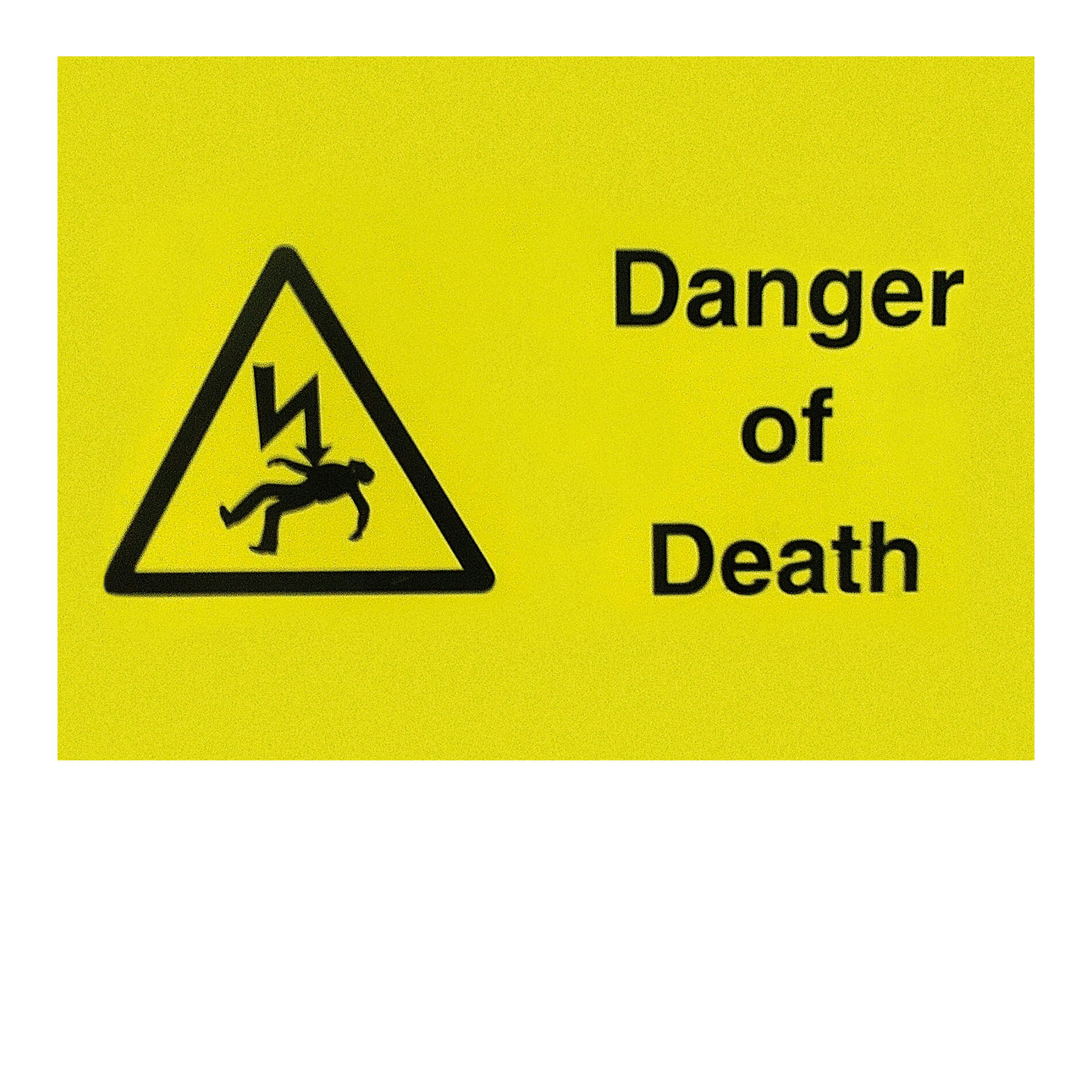
Paweł Kowalewski (1958) – founder of the artistic group Gruppa and an icon of Polish art of the 1980s, his work came from the time of state transformation and are an important commentary the times of communist Poland. A post-conceptualist who sensitises the public to their surroundings. An artist-rebel, academic tutor and a poet. Is bored by the mainstream, but this doesn’t change the fact that he has still found himself to be in the canon of Polish art. He is a penetrating analyst of the everyday, thanks to which from the kaleidoscope of events and happenings he is able to bring out his artistic manifesto. Co-founder of the magazine “Oj, dobrze już!”, the author of famous works such as “Mon Cheri Bolscheviq”, the installation “Totalitarianism Simulator” or the photographic series “Nie wolno/Europeans only” (Forbidden/Europeans Only). Kowalewski’s works can be found in the largest Polish museums, as well as in many national and international private collections.
PAWEŁ
KOWALEWSKI
Forbidden (Danger of Death)
2010, digital print on foam, 100 x 70 cm
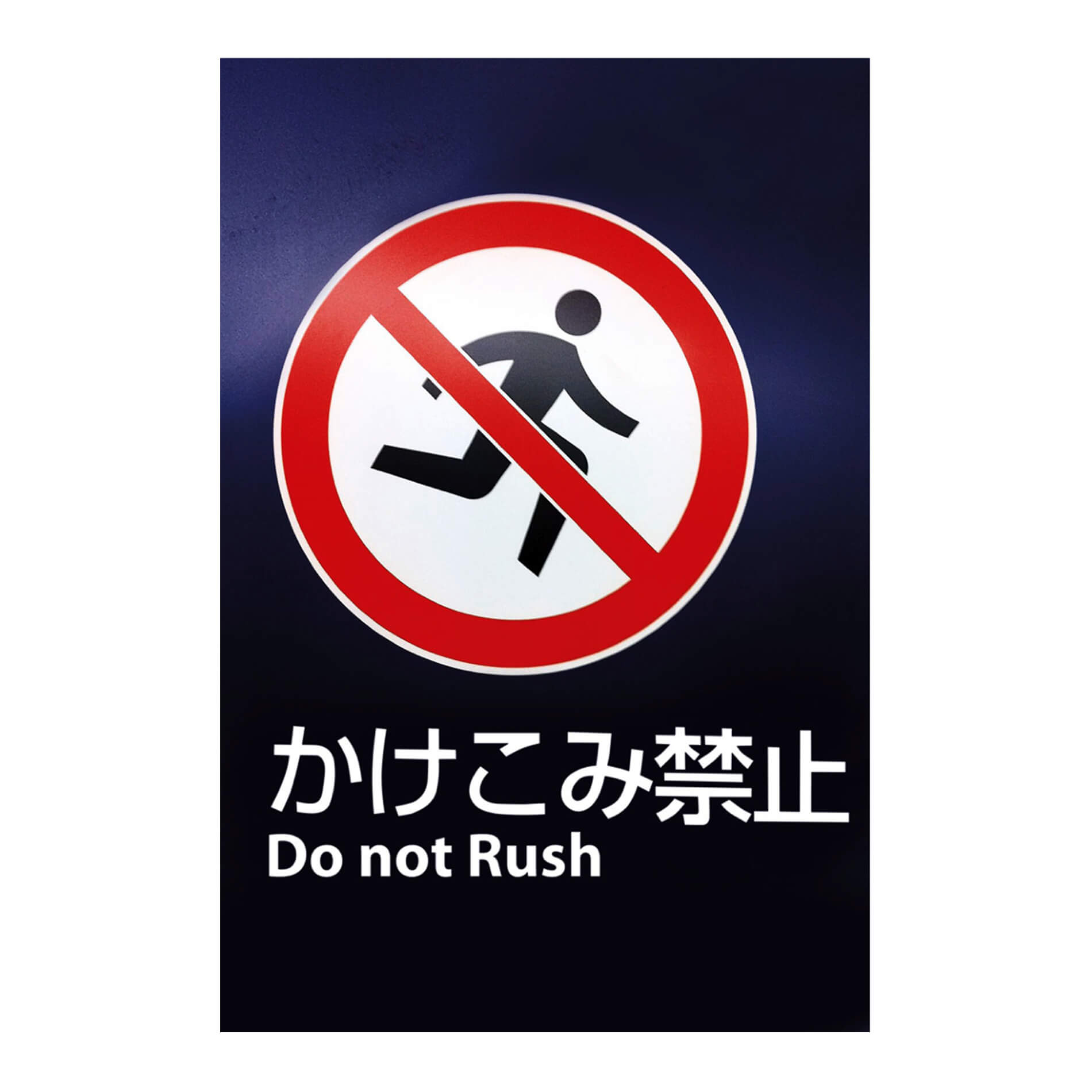
Paweł Kowalewski (1958) – founder of the artistic group Gruppa and an icon of Polish art of the 1980s, his work came from the time of state transformation and are an important commentary the times of communist Poland. A post-conceptualist who sensitises the public to their surroundings. An artist-rebel, academic tutor and a poet. Is bored by the mainstream, but this doesn’t change the fact that he has still found himself to be in the canon of Polish art. He is a penetrating analyst of the everyday, thanks to which from the kaleidoscope of events and happenings he is able to bring out his artistic manifesto. Co-founder of the magazine “Oj, dobrze już!”, the author of famous works such as “Mon Cheri Bolscheviq”, the installation “Totalitarianism Simulator” or the photographic series “Nie wolno/Europeans only” (Forbidden/Europeans Only). Kowalewski’s works can be found in the largest Polish museums, as well as in many national and international private collections.
PAWEŁ
KOWALEWSKI
Forbidden (Do not Rush)
2010, digital print on foam, 70 x 100 cm

Paweł Kowalewski (1958) – founder of the artistic group Gruppa and an icon of Polish art of the 1980s, his work came from the time of state transformation and are an important commentary the times of communist Poland. A post-conceptualist who sensitises the public to their surroundings. An artist-rebel, academic tutor and a poet. Is bored by the mainstream, but this doesn’t change the fact that he has still found himself to be in the canon of Polish art. He is a penetrating analyst of the everyday, thanks to which from the kaleidoscope of events and happenings he is able to bring out his artistic manifesto. Co-founder of the magazine “Oj, dobrze już!”, the author of famous works such as “Mon Cheri Bolscheviq”, the installation “Totalitarianism Simulator” or the photographic series “Nie wolno/Europeans only” (Forbidden/Europeans Only). Kowalewski’s works can be found in the largest Polish museums, as well as in many national and international private collections.
PAWEŁ
KOWALEWSKI
Forbidden (Europeans Only)
2010, lightbox, 100 x 70 cm

Paweł Kowalewski (1958) – founder of the artistic group Gruppa and an icon of Polish art of the 1980s, his work came from the time of state transformation and are an important commentary the times of communist Poland. A post-conceptualist who sensitises the public to their surroundings. An artist-rebel, academic tutor and a poet. Is bored by the mainstream, but this doesn’t change the fact that he has still found himself to be in the canon of Polish art. He is a penetrating analyst of the everyday, thanks to which from the kaleidoscope of events and happenings he is able to bring out his artistic manifesto. Co-founder of the magazine “Oj, dobrze już!”, the author of famous works such as “Mon Cheri Bolscheviq”, the installation “Totalitarianism Simulator” or the photographic series “Nie wolno/Europeans only” (Forbidden/Europeans Only). Kowalewski’s works can be found in the largest Polish museums, as well as in many national and international private collections.
PAWEŁ
KOWALEWSKI
Forbidden (Respectful clothing)
2010, digital print on foam, 70 x 100 cm
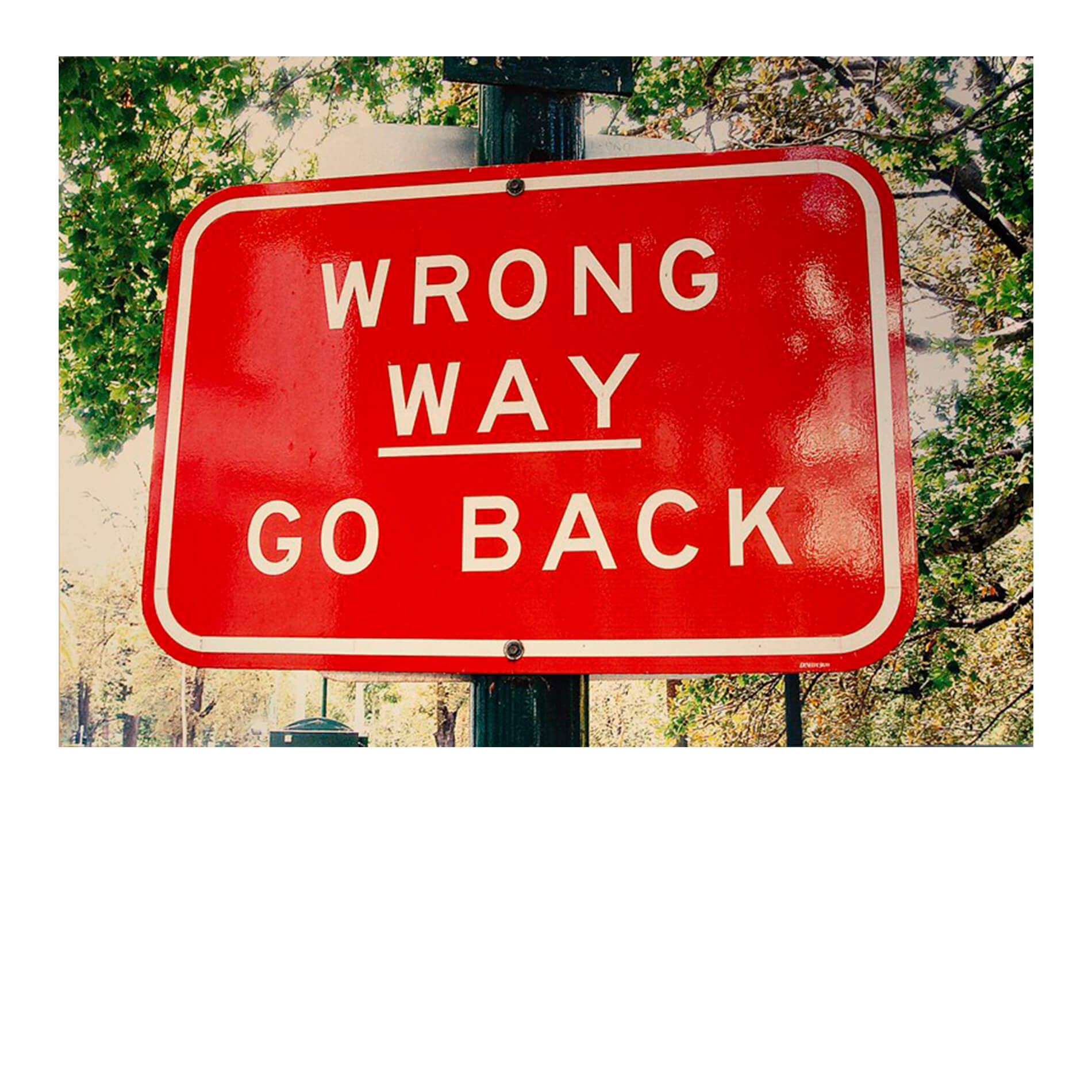
Paweł Kowalewski (1958) – founder of the artistic group Gruppa and an icon of Polish art of the 1980s, his work came from the time of state transformation and are an important commentary the times of communist Poland. A post-conceptualist who sensitises the public to their surroundings. An artist-rebel, academic tutor and a poet. Is bored by the mainstream, but this doesn’t change the fact that he has still found himself to be in the canon of Polish art. He is a penetrating analyst of the everyday, thanks to which from the kaleidoscope of events and happenings he is able to bring out his artistic manifesto. Co-founder of the magazine “Oj, dobrze już!”, the author of famous works such as “Mon Cheri Bolscheviq”, the installation “Totalitarianism Simulator” or the photographic series “Nie wolno/Europeans only” (Forbidden/Europeans Only). Kowalewski’s works can be found in the largest Polish museums, as well as in many national and international private collections.
PAWEŁ
KOWALEWSKI
Forbidden (Wrong way)
2010, digital print on foam, 100 x 70 cm
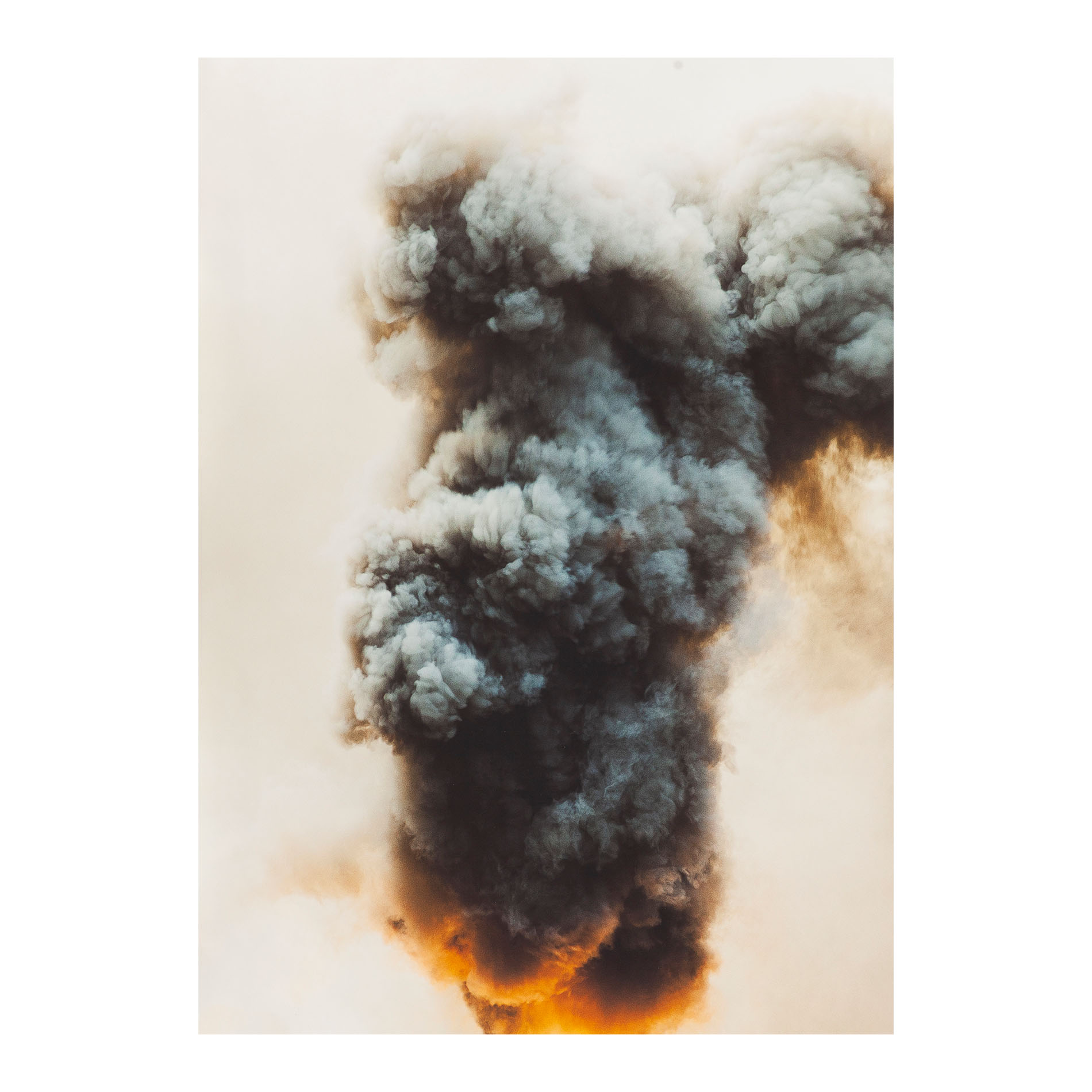
Yulia Krivich is a Ukrainian photographer. She graduated from the Academy of Architecture and Construction in Dnipro and the Department of Media Art at the Warsaw Academy of Fine Arts. In her photographs, the artist combines the political with the intimate - the perspectives of a documentary and a personal, visual narrative. In her works she often uses objects and tools that are essential for activist acts. Her interests revolve around the questions of identity, migration and issues related to life in Eastern Europe. She primarily photographs her peers and the environment that shapes them. Many of the photos are taken during trips to Ukraine, so Krivich creates a certain portrait of the young generation of her compatriots. Her artistic practice is guided by the belief that art is political and can be a factor in changing reality.
Yulia
Krivich
Smoke (from the series Daring & Youth)
2017, color photography, cotton paper, 50 x 70 cm ed. 2/7
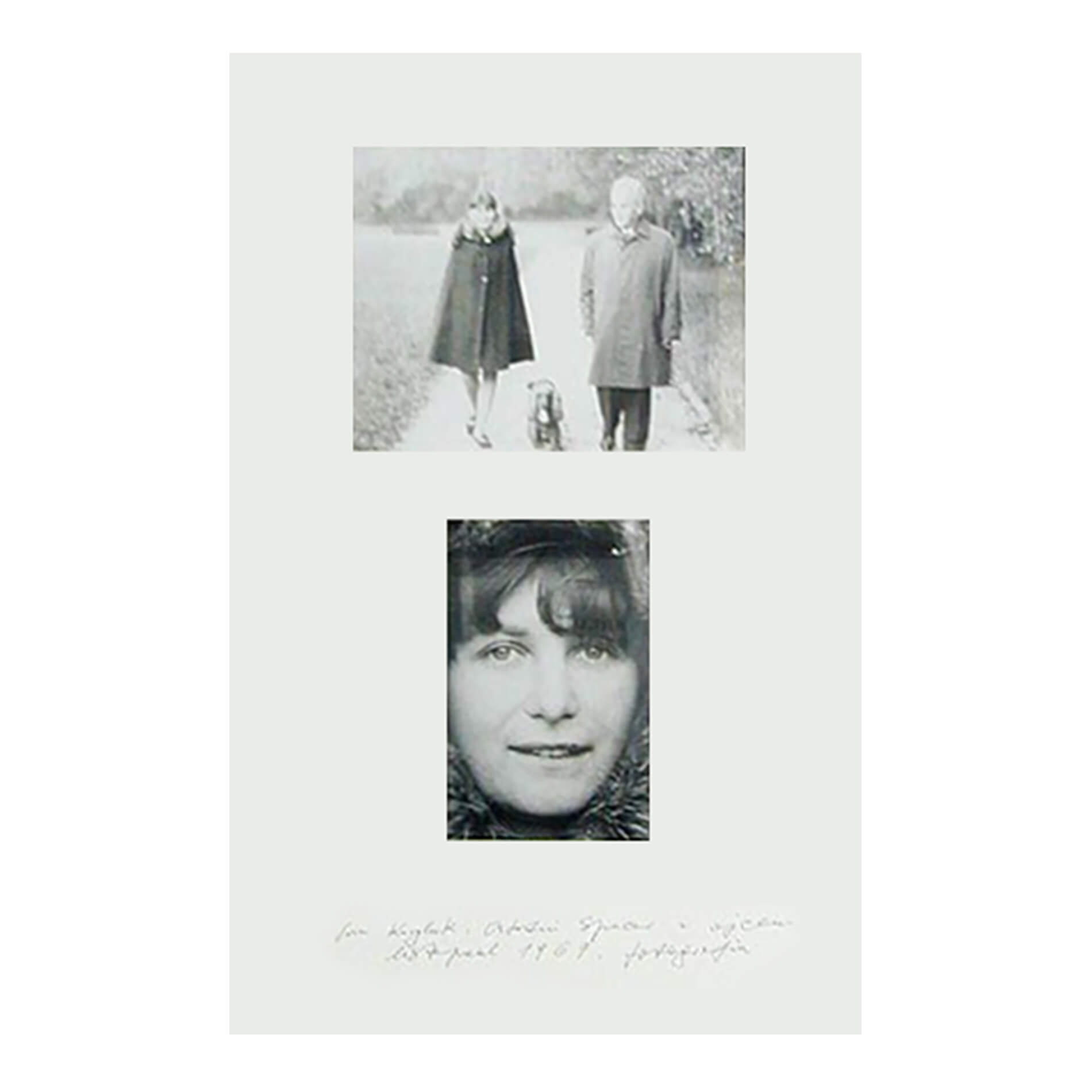
Ewa Kuryluk (1946) – painter, photographer and poet, prose publisher of essays and sketches about art. She added handwritten notes to her work. These drawn and at the same time written works are called drawritings, a name which perfectly sums up the duality of her interests. She also creates autobiographical installations, inspired by family life, which also show her fascination with the body and eroticism. She uses her own personal experiences in her work, and her paintings and photographs mainly feature her closest family and friends. During the martial law period in Poland she lectured and exhibited abroad. In 2012 Kuryluk received the Silver Medal for Contributions to Culture “Gloria Artis”.
EWA
KURYLUK
Last walk with my father
1967, photograph on paper, 48 x 69 cm
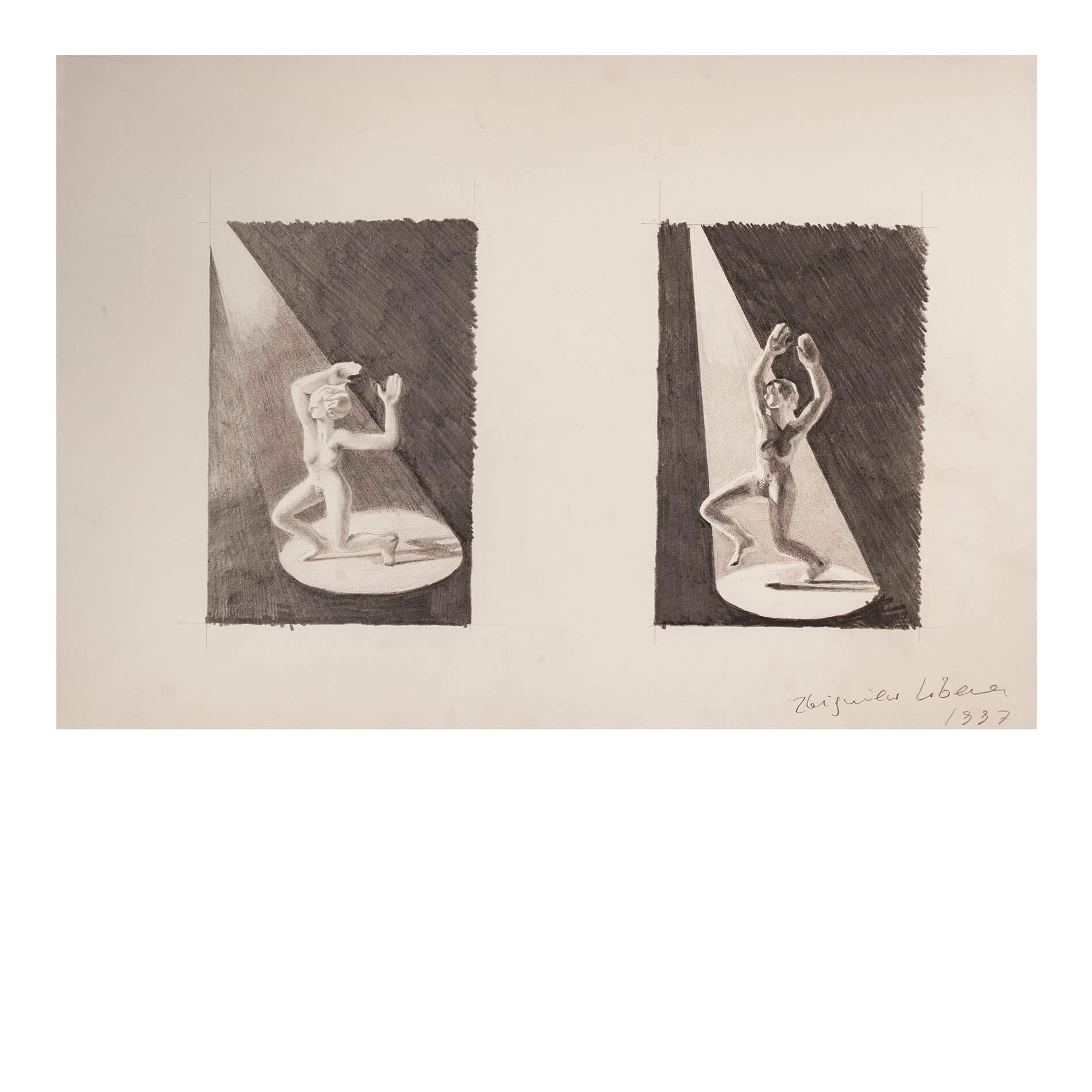
Zbigniew Libera (1959) – precursor of critical art, one of the most important contemporary Polish artists, self-taught. Creates installations, video films and photographs. Started his creative path in the 1980s when he designed printouts which were a reaction to the events that happened in the Wujek coal mine as well as leaflets for the Solidarity trade union, for which at the end of 1982 he was arrested. His famous works such as “Corrective devices”, or kits to correct shortcomings of the body and fictional erotic toys, or a model of a concentration camp built with Lego blocks, brought him a reputation as a controversial artist as well as international fame. In his work Libera analyses and criticises accepted conventions, mass culture, traditional educational methods as well as touching the question of the manipulation of reality by media.
ZBIGNIEW
LIBERA
Eroica, sketch
1997, pencil on paper, 59 x 40 cm
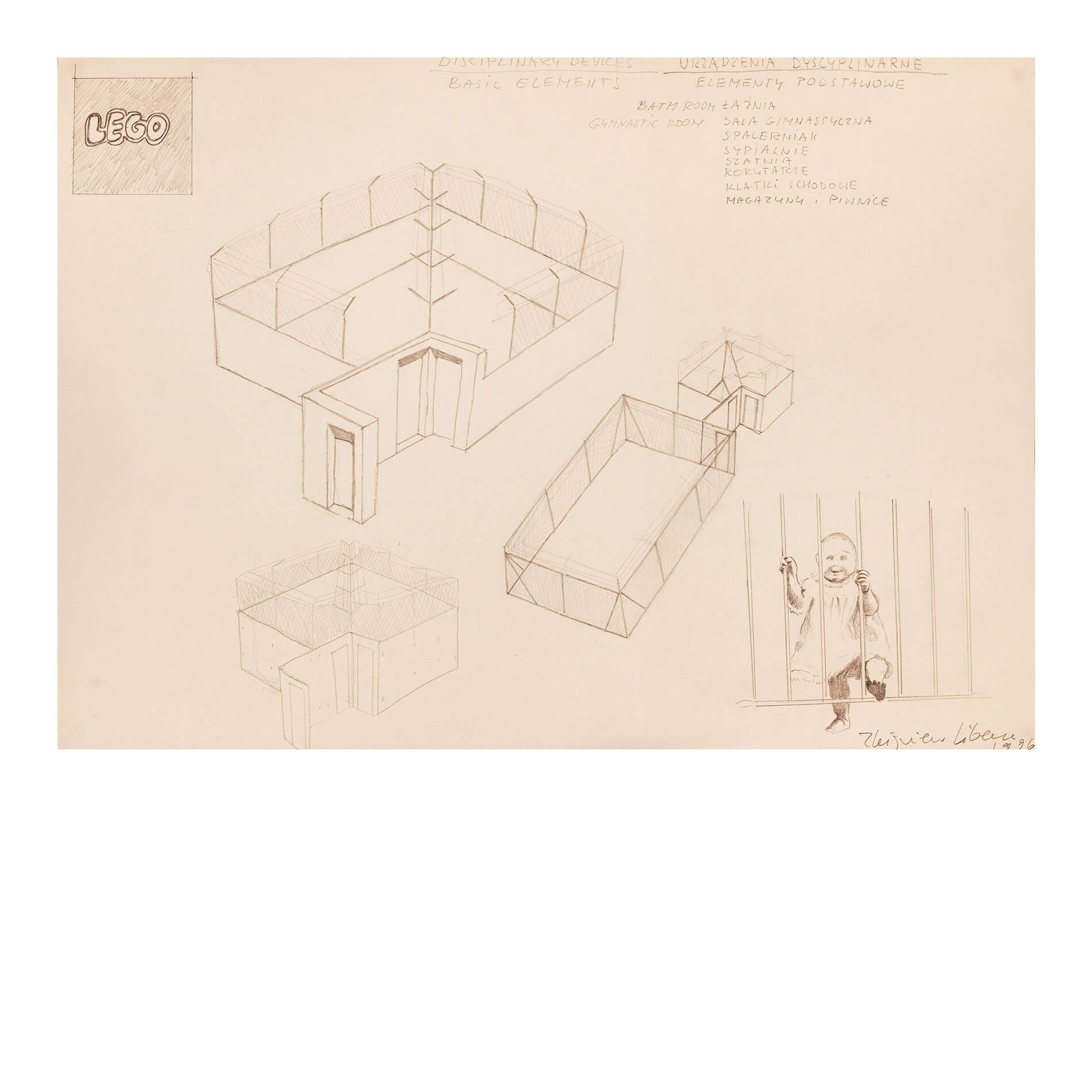
Zbigniew Libera (1959) – precursor of critical art, one of the most important contemporary Polish artists, self-taught. Creates installations, video films and photographs. Started his creative path in the 1980s when he designed printouts which were a reaction to the events that happened in the Wujek coal mine as well as leaflets for the Solidarity trade union, for which at the end of 1982 he was arrested. His famous works such as “Corrective devices”, or kits to correct shortcomings of the body and fictional erotic toys, or a model of a concentration camp built with Lego blocks, brought him a reputation as a controversial artist as well as international fame. In his work Libera analyses and criticises accepted conventions, mass culture, traditional educational methods as well as touching the question of the manipulation of reality by media.
ZBIGNIEW
LIBERA
Lego concentration camp, sketch
1996, pencil on paper, 59 x 40 cm

Guy Marineau (1947) - French photographer who since the 1970s has photographed the most important Parisian fashion shows, paying particular attention to haute couture and projects by Yves Saint Laurent. He also loved to photograph Paris' nightlife, which he documented for nearly 30 years. In 1997, his first fashion photography exhibition took place at the Nancy Biennale, and a year later he showed his work from the Tokyo catwalks at an exhibition in Japan.
Claudia Schiffer is a German model, actress and fashion designer. She gained fame in the early 90's as one of the most recognized models in the world. She entered the Guinness Book as the model that most often appeared on the covers of the magazines.
GUY
MARINEAU
Claudia Schiffer
1994, gelatin silver print / Baryta paper, 1/8, 45,5 x 65 cm

Jarosław Modzelewski (1955) – called the „painter of everyday icons”, academic lecturer and a member of the legendary Gruppa. A winner of the “Polityka” magazine’s prize for artistic achievement in 1998, as well as the Jan Cybis prize in 2004. In his work he touches on the universal themes of loneliness of the contemporary man, lost between history and transcendence. Through his interest in signs and everyday activities, he creates emotional, symbolic paintings, which are like freeze frames in the form of a picture. The unique atmosphere of Modzelewski’s paintings and his filmic approach to framing the subject have led to critics comparing him to Edward Hopper.
Jarosław
Modzelewski
Untitled
collage on paper, 19 x 29 cm

Jarosław Modzelewski (1955) – called the „painter of everyday icons”, academic lecturer and a member of the legendary Gruppa. A winner of the “Polityka” magazine’s prize for artistic achievement in 1998, as well as the Jan Cybis prize in 2004. In his work he touches on the universal themes of loneliness of the contemporary man, lost between history and transcendence. Through his interest in signs and everyday activities, he creates emotional, symbolic paintings, which are like freeze frames in the form of a picture. The unique atmosphere of Modzelewski’s paintings and his filmic approach to framing the subject have led to critics comparing him to Edward Hopper.
Jarosław
Modzelewski
Two men carrying a wood
2007, tempera on paper, 53 x 39 cm
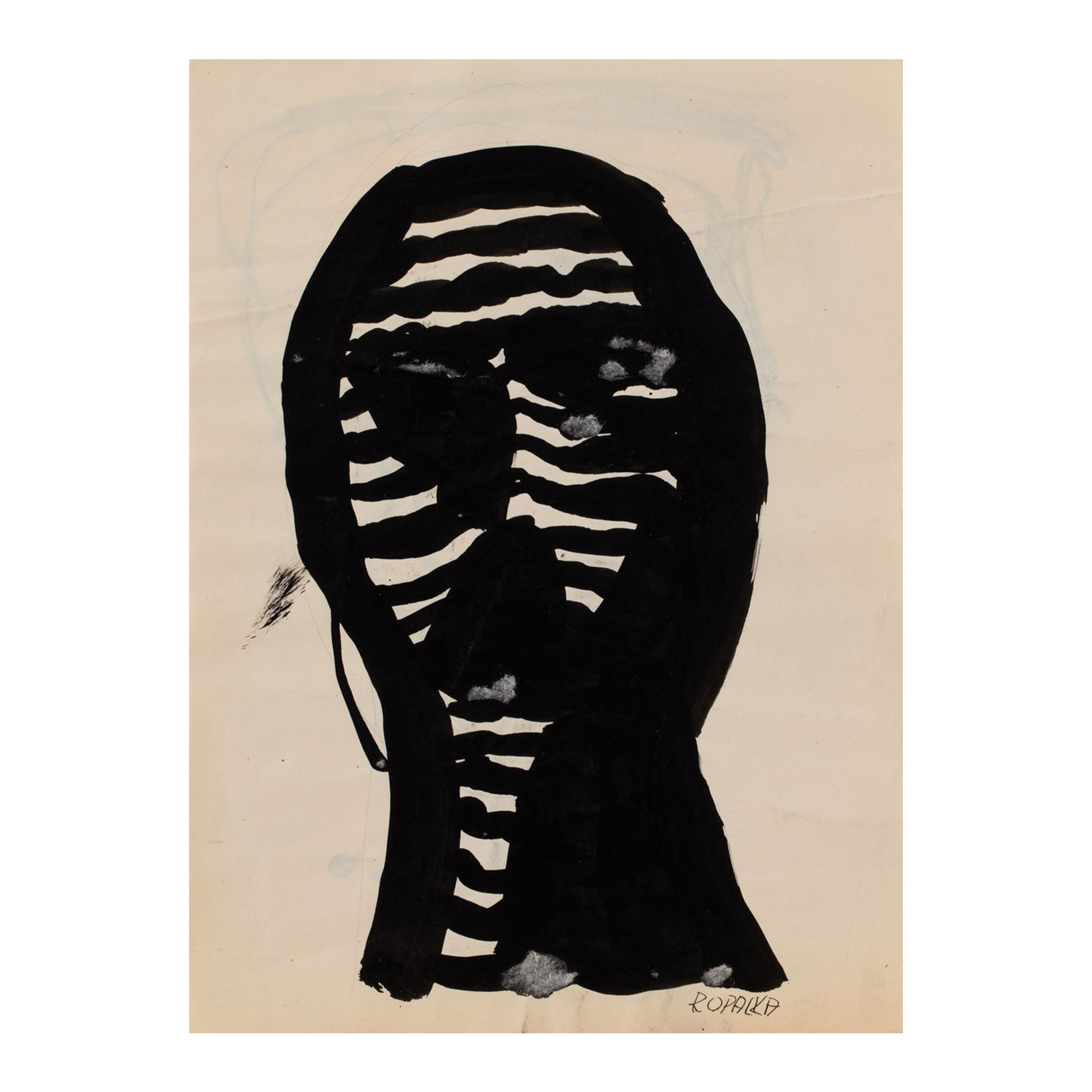
Roman Opałka (1931-2011) - is currently one of the world's most recognized artists. After graduating from the Academy of Fine Arts in Łódź and Warsaw, he experimented with abstraction, painting, graphics and installations. He began taking up the issue of the conceptualization of time in the 1960s in "Chronomy" - a series of pictures filled with tiny points. Since 1965, Opałka has been continuing what he called the OPAŁKA 1965/1 -– ∞ program, which since 1972 has become the only content of his work. In 1995, he represented Poland at the Venice Biennale. During an auction at Sotheby's in 2010, three of Opałka's works were bought by an anonymous buyer for £ 713,250. At the time, it was the highest price paid for the work of a living Polish artist. Opałka's works are in collections: Georges Pompidou Center in Paris, Museum of Modern Art in New York, Solomon R. Guggenheim Museum in New York, Museu de Art de Sao Paulo, Kunstmuseum Dusseldorf.
ROMAN
OPAŁKA
Head
ink/paper, 32,5 x 35 cm
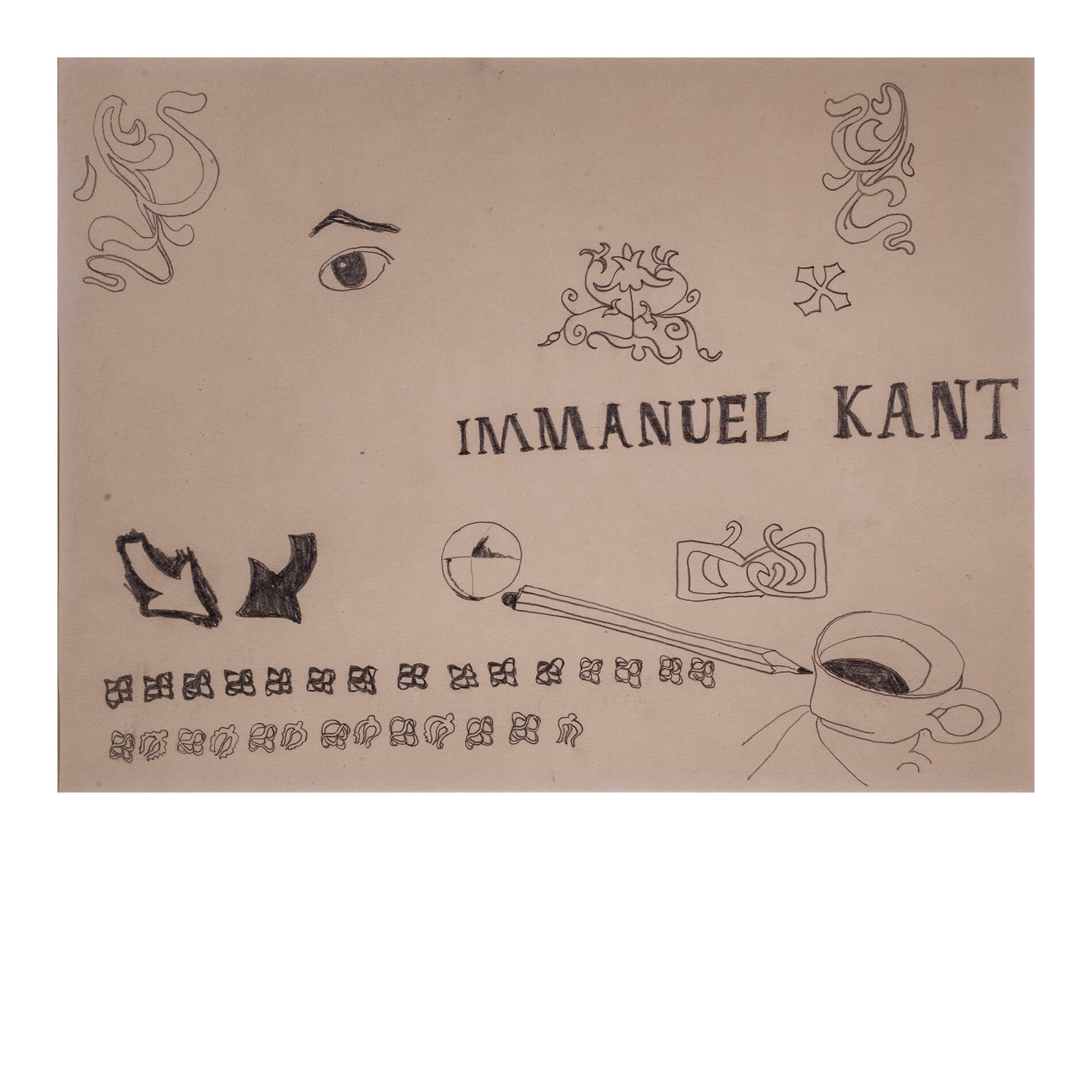
Włodzimierz Pawlak (1957) – painter, performer, poet, art theoretician, teacher, a member of the legendary Gruppa. His work from the 1980s was heavily rooted in the social-political problems of this time and were works full of irony and a specific sense of humour as well as being comments on the situation in the country at that time. A characteristic trait of the work of this artist are narrative paintings and the addition of literary descriptions to the visual forms. A particularly noteworthy position in Pawlak’s work is taken by white colour, which appears in all his series of paintings. The canvases of this artist are filled with spiritual energy and transcendental content, e.g. in the “Diary” series, which is a form of meditation on the passing of time and a kind of internal dialogue with himself.
WŁODZIMIERZ
PAWLAK
Immanuel Kant
1984-85, pencil on paper, 29 x 22 cm
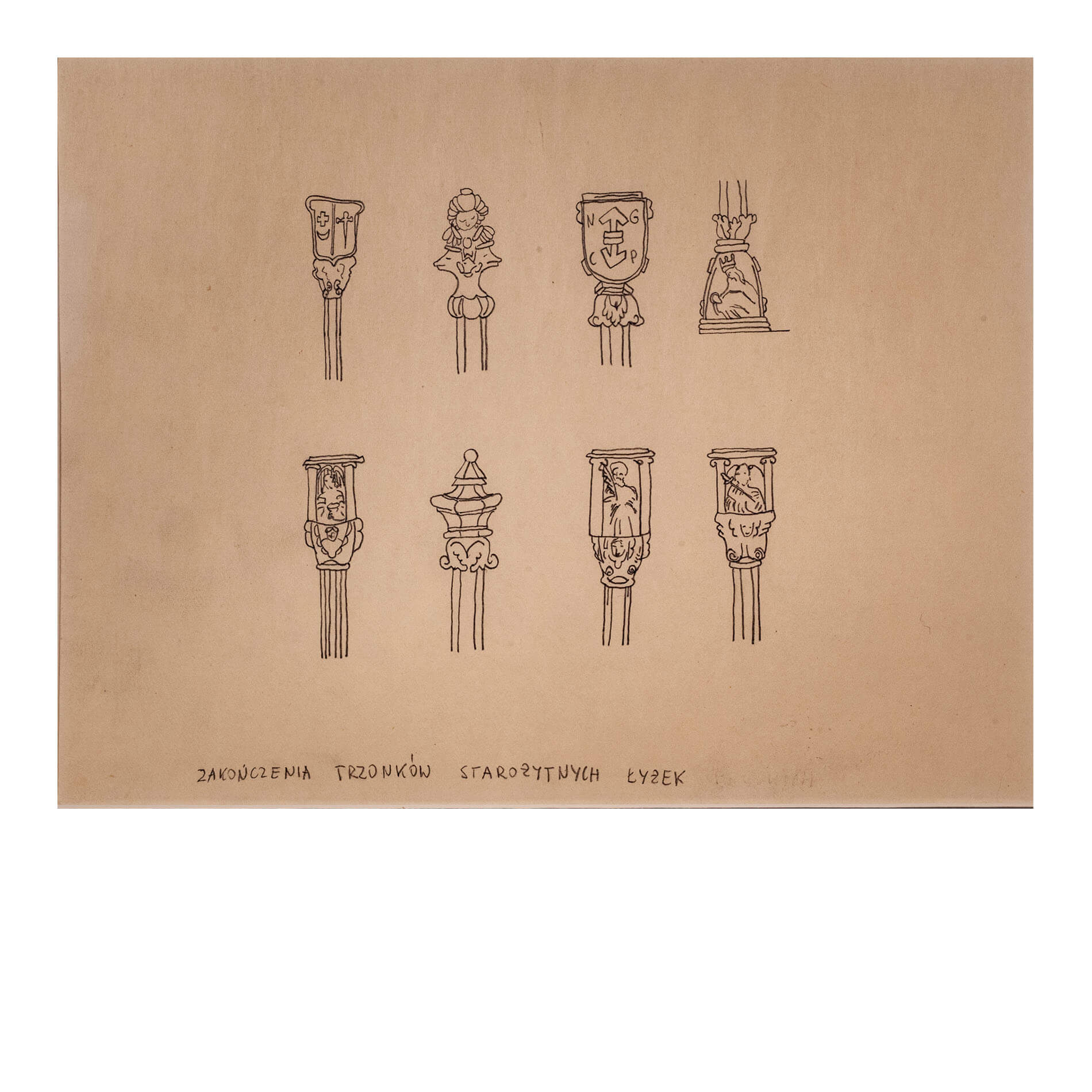
Włodzimierz Pawlak (1957) – painter, performer, poet, art theoretician, teacher, a member of the legendary Gruppa. His work from the 1980s was heavily rooted in the social-political problems of this time and were works full of irony and a specific sense of humour as well as being comments on the situation in the country at that time. A characteristic trait of the work of this artist are narrative paintings and the addition of literary descriptions to the visual forms. A particularly noteworthy position in Pawlak’s work is taken by white colour, which appears in all his series of paintings. The canvases of this artist are filled with spiritual energy and transcendental content, e.g. in the “Diary” series, which is a form of meditation on the passing of time and a kind of internal dialogue with himself.
WŁODZIMIERZ
PAWLAK
Finishing the handles of ancient spoons
1984-85, pencil on paper, 29 x 22 cm
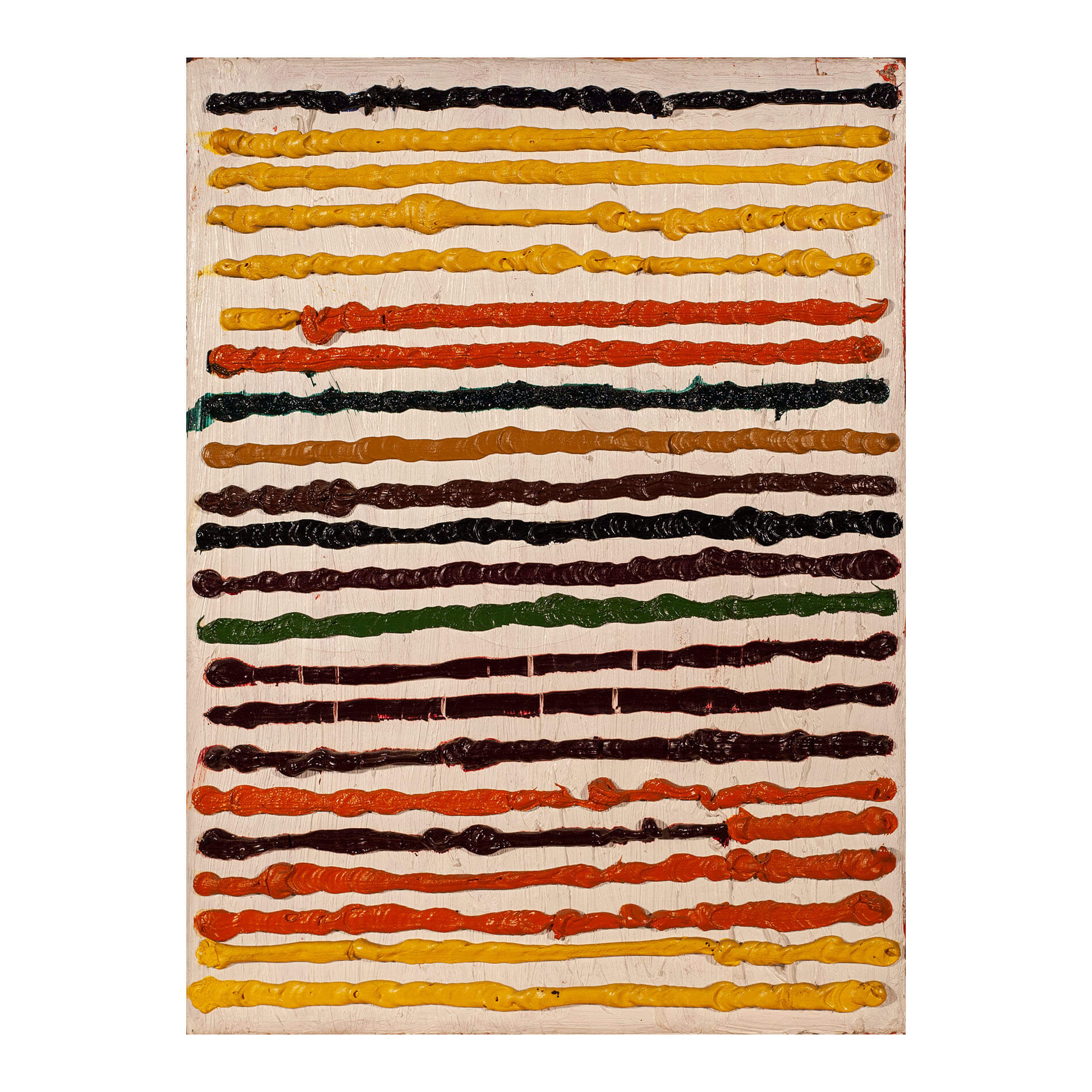
Włodzimierz Pawlak (1957) – painter, performer, poet, art theoretician, teacher, a member of the legendary Gruppa. His work from the 1980s was heavily rooted in the social-political problems of this time and were works full of irony and a specific sense of humour as well as being comments on the situation in the country at that time. A characteristic trait of the work of this artist are narrative paintings and the addition of literary descriptions to the visual forms. A particularly noteworthy position in Pawlak’s work is taken by white colour, which appears in all his series of paintings. The canvases of this artist are filled with spiritual energy and transcendental content, e.g. in the “Diary” series, which is a form of meditation on the passing of time and a kind of internal dialogue with himself.
WŁODZIMIERZ
PAWLAK
History of Colour
1991, oil on canvas, 24 x 33 cm

Włodzimierz Pawlak (1957) – painter, performer, poet, art theoretician, teacher, a member of the legendary Gruppa. His work from the 1980s was heavily rooted in the social-political problems of this time and were works full of irony and a specific sense of humour as well as being comments on the situation in the country at that time. A characteristic trait of the work of this artist are narrative paintings and the addition of literary descriptions to the visual forms. A particularly noteworthy position in Pawlak’s work is taken by white colour, which appears in all his series of paintings. The canvases of this artist are filled with spiritual energy and transcendental content, e.g. in the “Diary” series, which is a form of meditation on the passing of time and a kind of internal dialogue with himself.
WŁODZIMIERZ
PAWLAK
History of Colour II
1991, oil on canvas, 24 x 33 cm
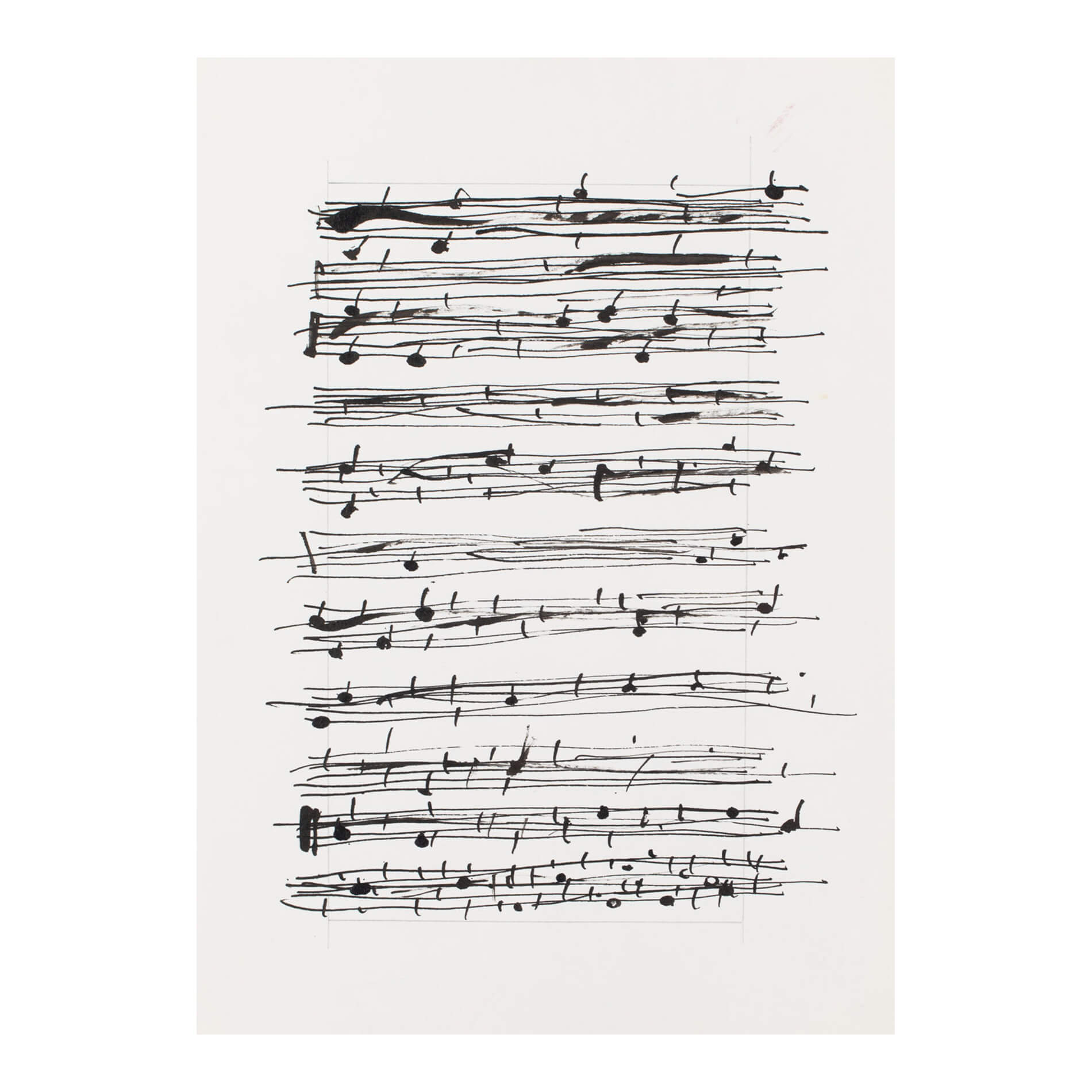
Włodzimierz Pawlak (1957) – painter, performer, poet, art theoretician, teacher, a member of the legendary Gruppa. His work from the 1980s was heavily rooted in the social-political problems of this time and were works full of irony and a specific sense of humour as well as being comments on the situation in the country at that time. A characteristic trait of the work of this artist are narrative paintings and the addition of literary descriptions to the visual forms. A particularly noteworthy position in Pawlak’s work is taken by white colour, which appears in all his series of paintings. The canvases of this artist are filled with spiritual energy and transcendental content, e.g. in the “Diary” series, which is a form of meditation on the passing of time and a kind of internal dialogue with himself.
WŁODZIMIERZ
PAWLAK
Untitled
2003, ink/paper, 21 x 29,5 cm

Leonard de Raemy (1924 - 2000) - Swiss photographer who was working in France. He made his debut in the 1960s at the Reporters Associés agency, where he became famous as a photographer of cinema and music stars. He gained recognition of the environment, both for the technical and artistic value of his photos. During 25 years of his work, Leonard de Raemy photographed the greatest celebrities - his photos were on about 400 covers of French and international magazines. Together with Hubert Henrotte, he founded two photographic agencies Gamma Presse (1966) and Sygma (1973).
Leonard
de Raemy
Brigitte Bardot et Jane Birkin – Don Juan 73
copy gelatine-sliver/photographic paper, 7/30, 51,5 x 50 cm

Robert Rauschenberg (1925–2008) - an American painter and graphic artist whose early works anticipated the pop art movement. Rauschenberg is well known for his "Combines" of the 1950s, in which non-traditional materials and objects were employed in various combinations. His seminal Neo-Dada work, “Erased de Kooning” (1953), consisted of ritualistically wiping out an original drawing he purchased from the famed painter. In the mid-1950s, he began a crucial dialogue with the artist Jasper Johns that shaped the work of both. In 1964 he became the first American to win the International Grand Prize in Painting at the Venice Biennale
Robert
Rauschenberg
Back Out
1979, screenprint in colors with fabric collage, 39/100, 58,4 x 77,5 cm
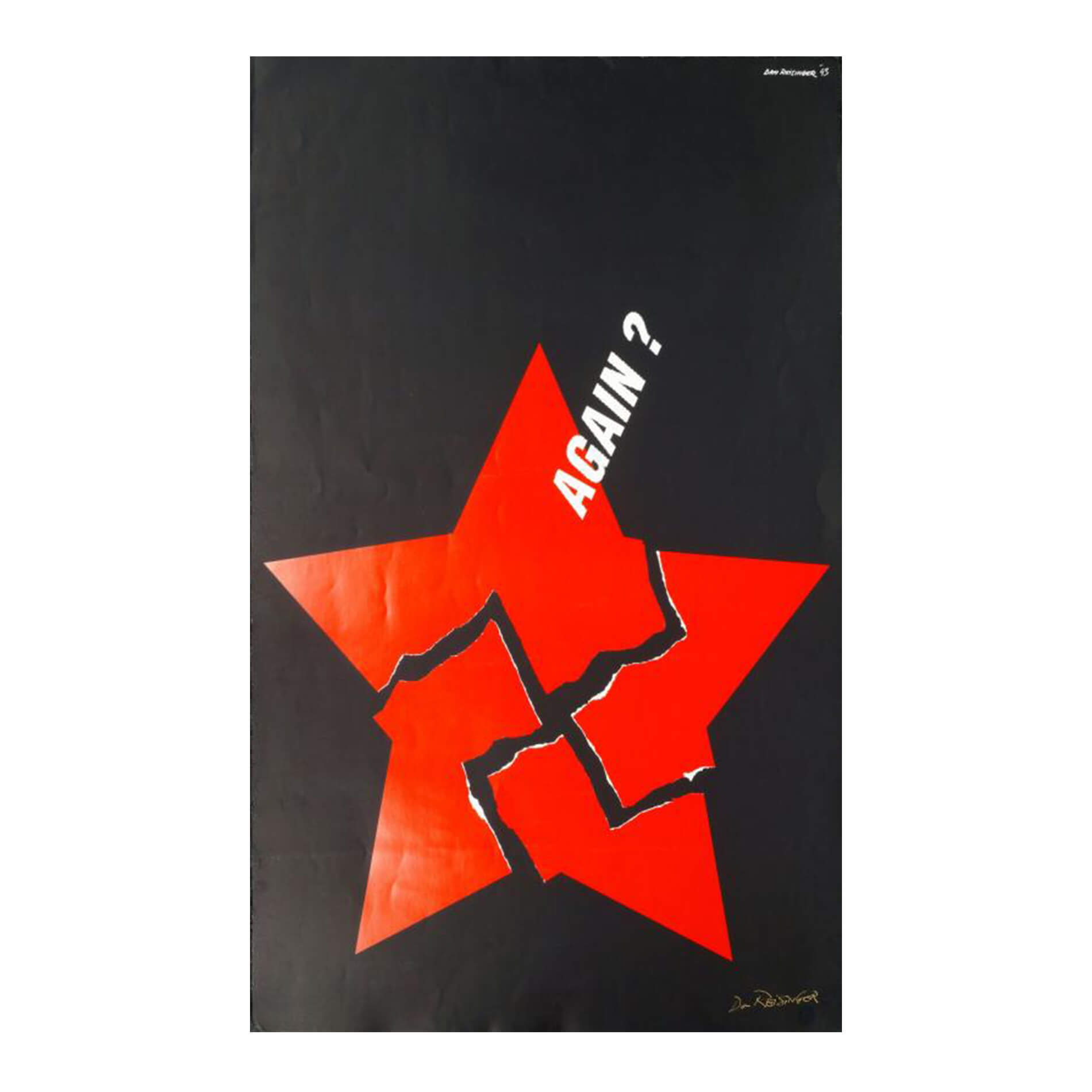
Dan Reisinger (1934-2019) – an Israeli artist and graphic designer, poster creator and creator of logos and calendars; regarded as being one of the leading contemporary designers. After the war he finished the Jerusalem Fine Art Academy and the Central Art School in London. Winner of many awards, amongst others the “Israel Award” from his own country. His work thanks to its multi-cultural roots break the barriers of language. A very well- known project from this artist is the eternal calendar which was created especially for MOMA in New York, which has 40,080 different systems. Reisinger has also designed logos and identity systems for the most important Israeli companies, e.g. El Al, Tel Aviv Stock Exchange, Bat Sheva Dance Company, Ministry of Tourism and Habima – National Theatre.
DAN
REISINGER
Again
1993, poster, 67 x 98 cm
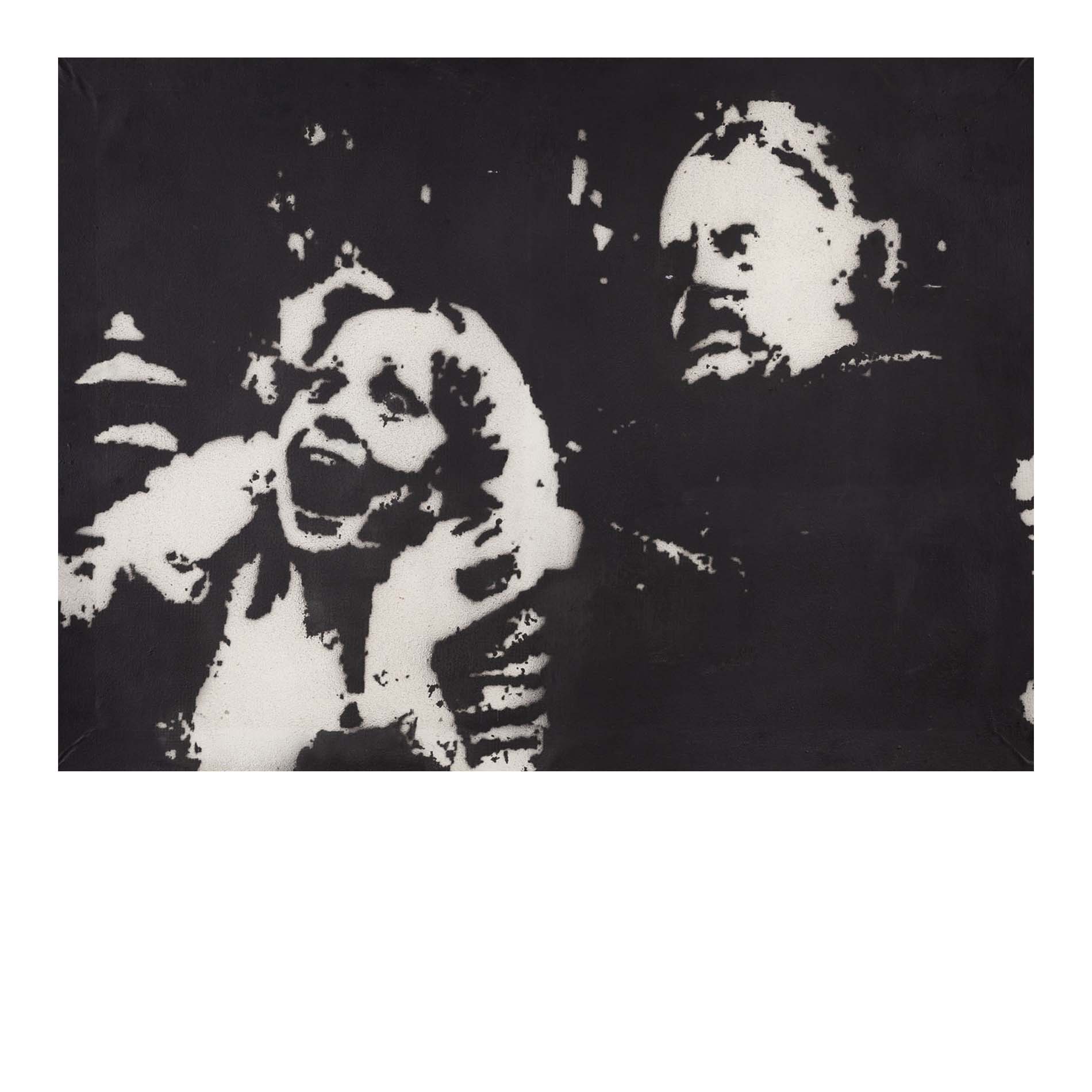
Daniel Rycharski (1986) – a Polish artist who develops a form of cooperation with the local community in his hometown - Kurówek. He creates a proposal of artistic activism, discussing the problem of identity and the limits of belonging to a religious community. In his works, he responds to seemingly contradictory experiences: being a religious artist and a gay working in a conservative community. During his studies at the Academy of Fine Arts in Krakow, Rycharski began to study the visual culture and identity of the contemporary countryside of Poland. There he also founded an artistic group with Sławomir Shuty - a writer and his friend. Rycharski's bold approach to faith and Christianity, which finds no counterpart in Polish art, is currently the driving factor behind his artistic practice. He is also a laureate of Polityka's Passports and the winner of the Golden Lion at the Gdynia Film Festival.
Daniel Rycharski
and Sławomir Shuty
Fares for every penny
2007, mixed technique, 150 x 110 cm

Zygmunt Rytka (1947-2018) - Polish intermedia artist. He was working in photography, video art and installation. He grew from the tradition of conceptual art. In the years 1970–1980 he documented Polish artistic life, made experimental films, and then, as one of the first in Poland, videoarts. He directed his interests towards nature and the contact between science and technology. The artist explored the media possibilities of art as well as our biological conditions and the possibilities of perceiving reality that breaks the boundaries of a given medium (primarily photography)
Zygmunt
Rytka
Neuron-optical space
1993/2013, C-Print/photographic paper, 30 x 20,8 cm
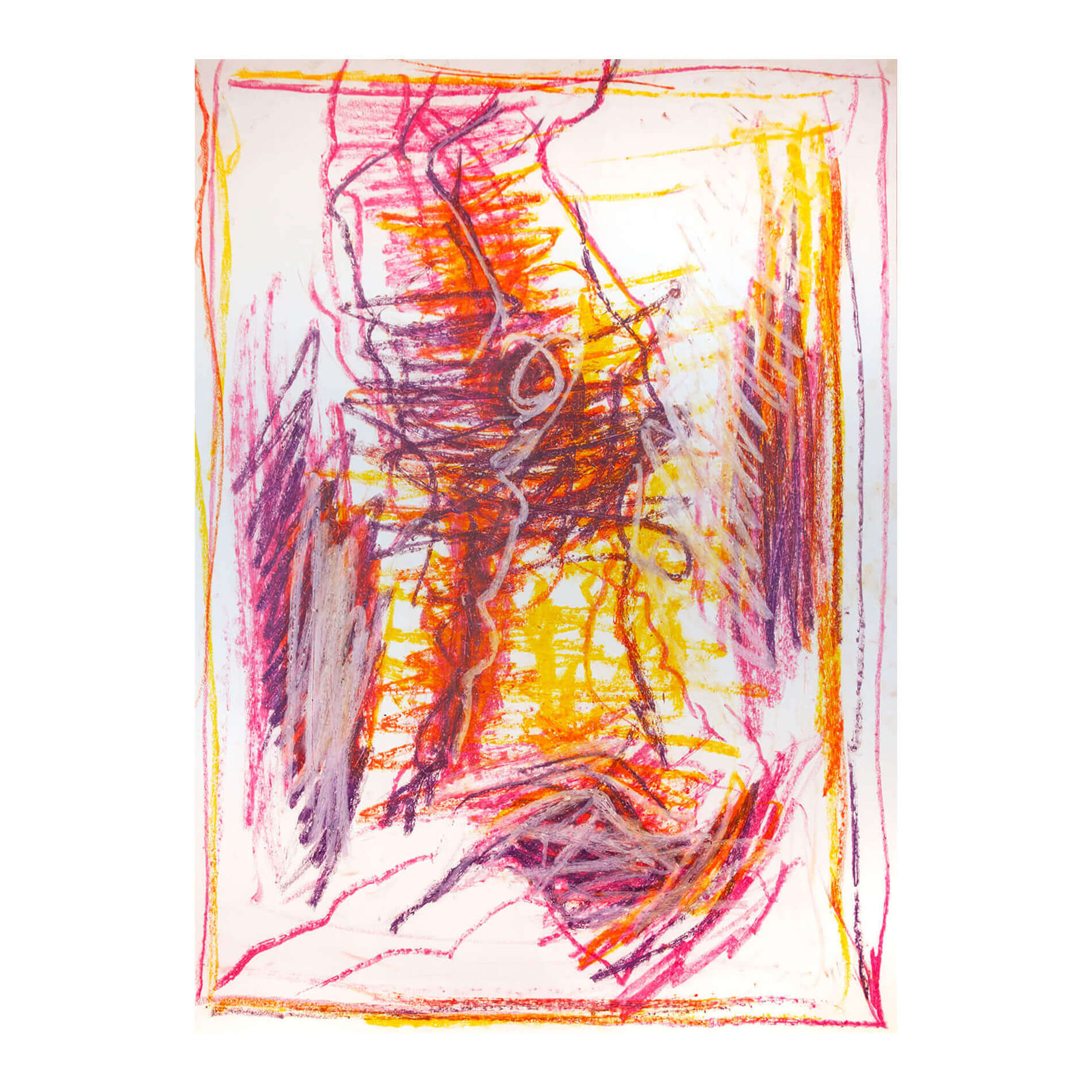
Jacek Sempoliński (1927-2012) – artist/philosopher. For many years he was a Professor at the Warsaw Academy of Fine Arts. All of his artistic activities were a deep reflection on art and the individual. His abstract canvases touch human existence and question the meaning of life and our identity. In the 1950s he completed polychromes on the walls of the old and new towns in Warsaw. During the 1980s, a time of national re-evaluation, he became an artistic as well as an intellectual authority – he was both an essayist and a critic. He took part in the famous exhibition Arsenal 55 which was an act of protest from younger artists against the political system of that time.
Jacek
Sempoliński
Shout
crayon on paper, 67 x 97 cm
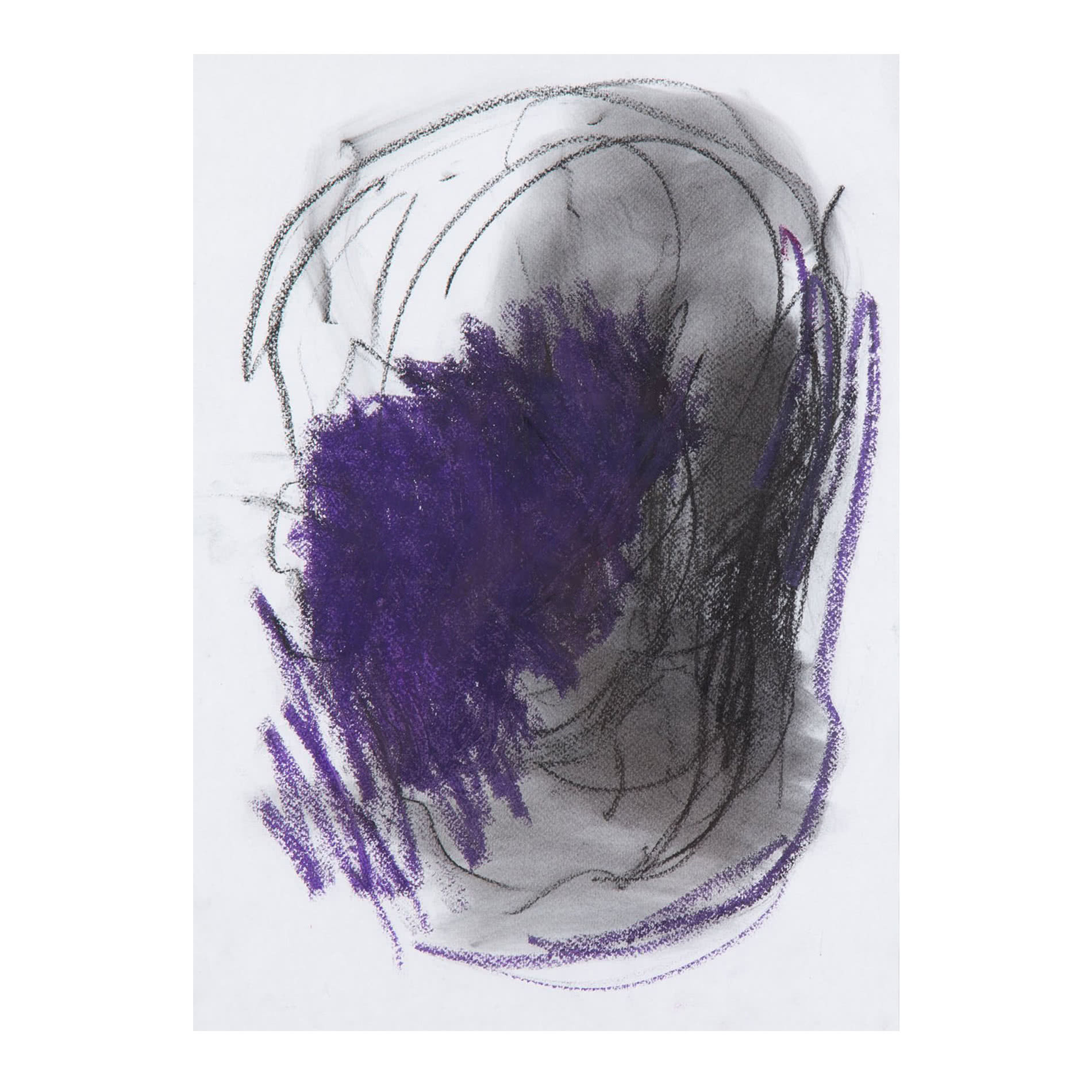
Jacek Sempoliński (1927-2012) – artist/philosopher. For many years he was a Professor at the Warsaw Academy of Fine Arts. All of his artistic activities were a deep reflection on art and the individual. His abstract canvases touch human existence and question the meaning of life and our identity. In the 1950s he completed polychromes on the walls of the old and new towns in Warsaw. During the 1980s, a time of national re-evaluation, he became an artistic as well as an intellectual authority – he was both an essayist and a critic. He took part in the famous exhibition Arsenal 55 which was an act of protest from younger artists against the political system of that time.
Jacek
Sempoliński
Self portrait
2008, pastel, charcoal on paper, 31 x 44 cm
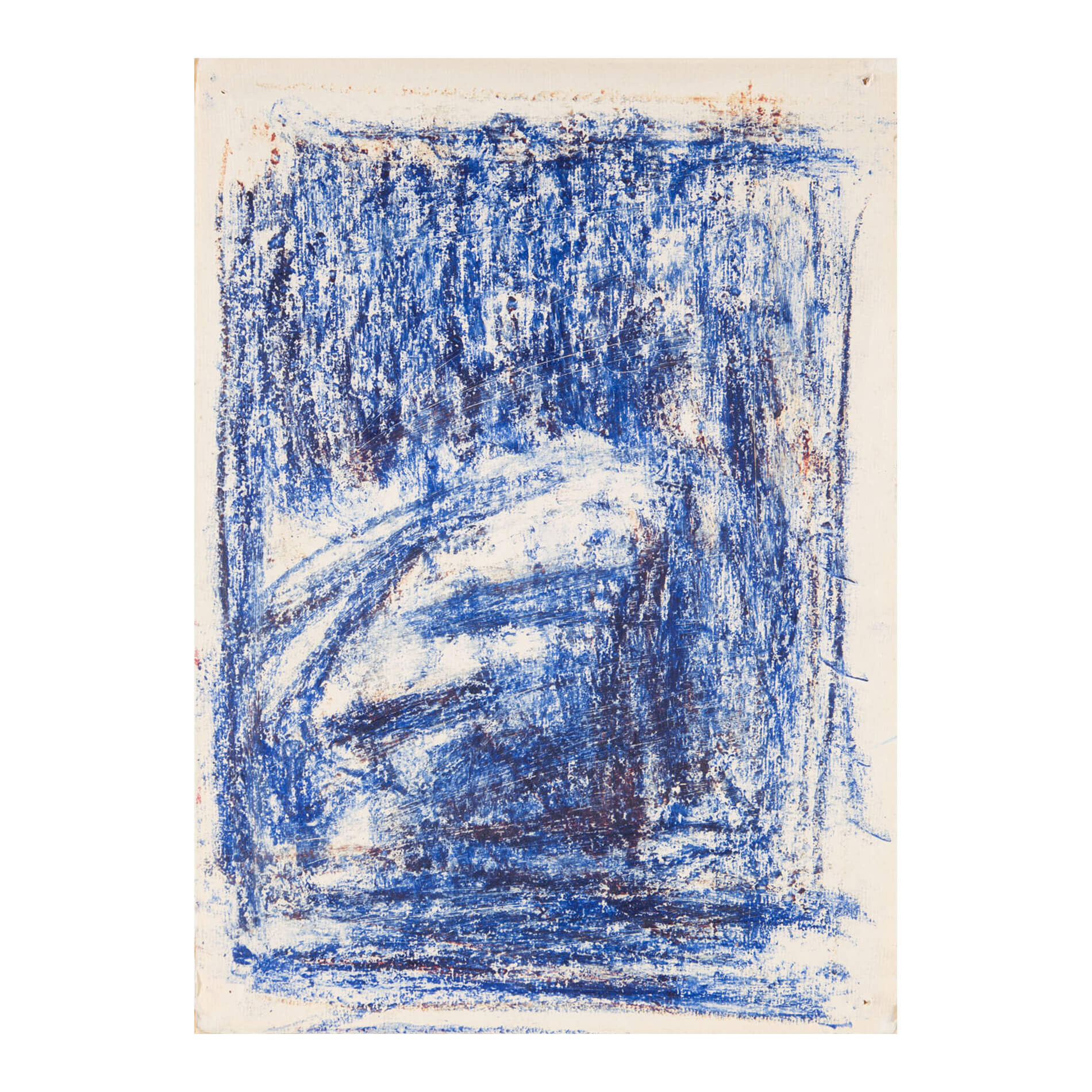
Jacek Sempoliński (1927-2012) – artist/philosopher. For many years he was a Professor at the Warsaw Academy of Fine Arts. All of his artistic activities were a deep reflection on art and the individual. His abstract canvases touch human existence and question the meaning of life and our identity. In the 1950s he completed polychromes on the walls of the old and new towns in Warsaw. During the 1980s, a time of national re-evaluation, he became an artistic as well as an intellectual authority – he was both an essayist and a critic. He took part in the famous exhibition Arsenal 55 which was an act of protest from younger artists against the political system of that time.
Jacek
Sempoliński
Skull
1998, oil pastel/paper, 30,5 x 42 cm
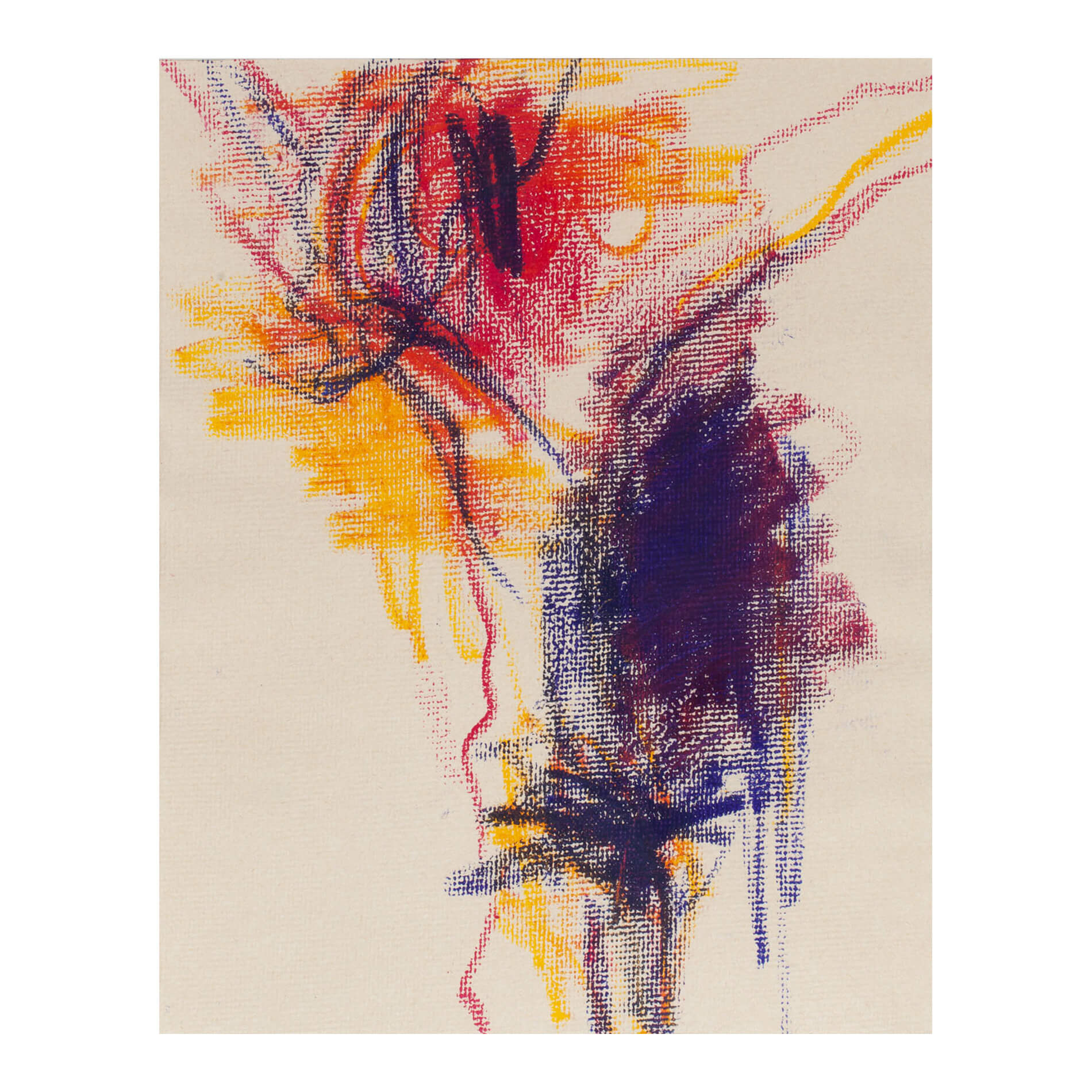
Jacek Sempoliński (1927-2012) – artist/philosopher. For many years he was a Professor at the Warsaw Academy of Fine Arts. All of his artistic activities were a deep reflection on art and the individual. His abstract canvases touch human existence and question the meaning of life and our identity. In the 1950s he completed polychromes on the walls of the old and new towns in Warsaw. During the 1980s, a time of national re-evaluation, he became an artistic as well as an intellectual authority – he was both an essayist and a critic. He took part in the famous exhibition Arsenal 55 which was an act of protest from younger artists against the political system of that time.
Jacek
Sempoliński
Crucifixion at St. Anna's
2007, pastel/paper, 39,8 x 50 cm

Tomasz Sikorski (1953 - 2021) - visual artist, painter, performer, creator of video works, arts theoretician, curator and gallerist. He has used diversified media since his first works, creating them in neo avantgarde and conceptual nature. He was one of the leaders of the nomadic gallery P.O. Box 17 and the student gallery Dziekanka Studio (later Dziekanka Gallery), one of the key independent and avantgarde art spaces of the turn of the 1970’s. His main interests were the new media and “fluxus freedom in combining techniques and means”, with which he experimented. He claimed he did not want to be neither painter, graphic artist, nor sculptor. He created works regarding social and political subjects, as well as abstract art and street art.
Tomasz
Sikorski
What is the difference between nothing and everything
1990, pigment, tempera, oil on canvas, 135 x 270 cm
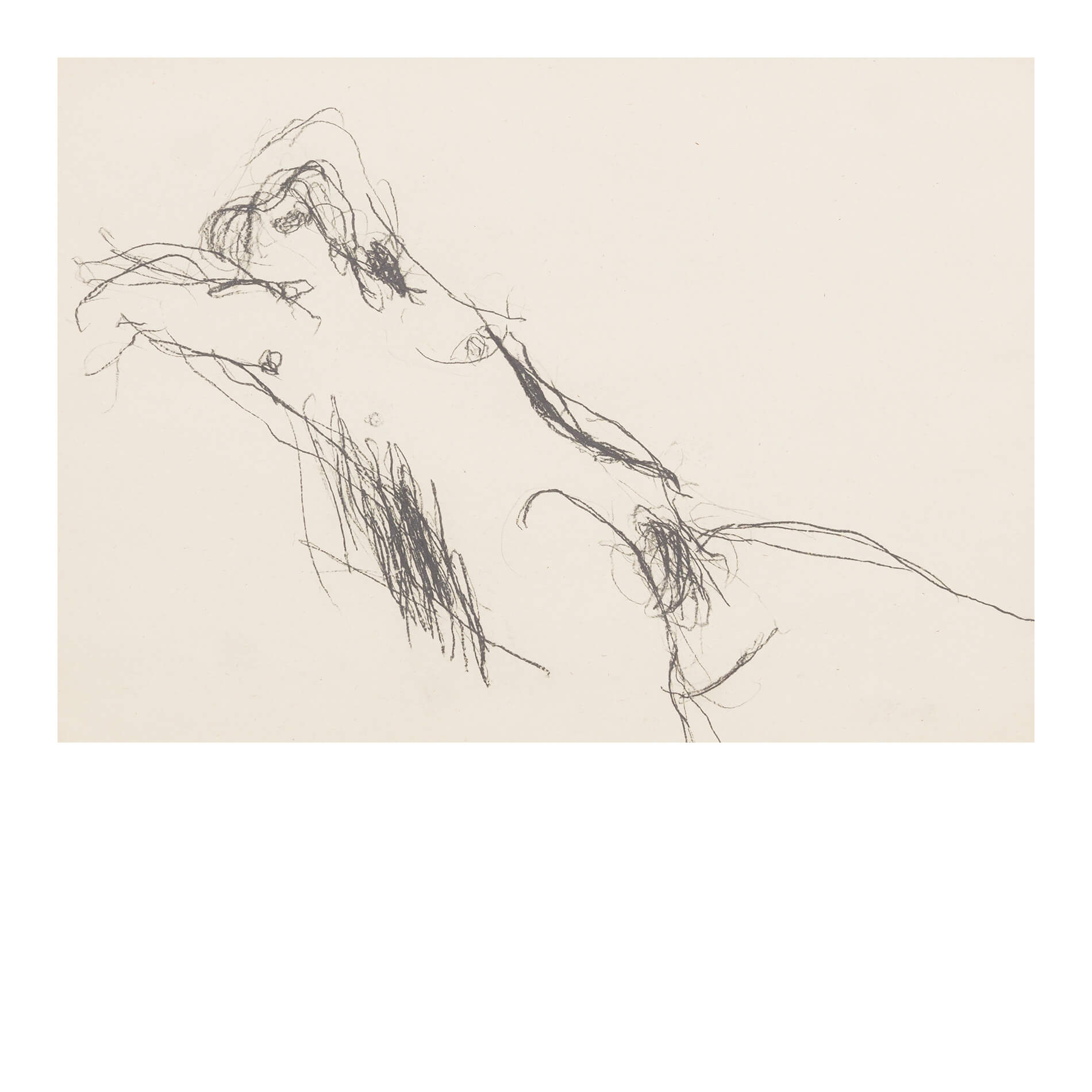
Jerzy Stajuda (1936-1992) – painter, illustrator, critic and music lover. The work of this artist is mainly the presentation of abstract structural worlds or imaginative landscapes. The artist also left behind him a rich legacy in drawings, in the form of his personal notebooks which are full of intimate sketches with erotic themes. The second passion of this artist was art criticism. He published articles in many magazines, where he publicized his personal opinions, without succumbing to self-censorship or outside influence. His art criticism was very restricted after 1968. Stajuda often exhibited abroad, where for a long time his work was better known that in Poland. In 1991 he won the New York Award of the A. Jurzykowski Foundation.
JERZY
STAJUDA
Untitled
after 1982, crayon drawing on paper, 41,2 x 29,4 cm

Henryk Stażewski (1894-1988) – legend of the Polish avant-garde. Painter, set designer who also was active in the theory of art. In the years 1929-1931 he took part in the creation of the International Collection of Contemporary Art, which later became the base of the collection of the Museum of Art in Lódź. He was also a member of the Advertising Graphic Designers Group (1933-39). Stażewski’s work shows strong connections to constructionism and neoplasticism. This artist with his geometric abstracts was seeking a totally objective art, both universal and disciplined. He broke through the barrier of the traditional understanding of a picture, enriching it with texture and 3D elements.
HENRYK
STAŻEWSKI
Geometric Composition
1930/1977, graphic, 72/100, 78,5 x 69 cm

Leon Tarasewicz (1957) – painter and academic lecturer. In his work he goes beyond the themes of specific feelings and turns towards purely painting based values such as colour shades and playing with the quality and texture of the canvas itself. He creates monumental, abstract compositions of colour which fill the space in galleries, institutions and public spaces. Colourful, large format compositions are the main formats of his work which was shown at the Venice Biennale in 2001. This artist has been very successful both nationally and internationally. His work has entered into global, prestigious museum collections. In 2005 he was awarded the Silver Medal for services to culture Gloria Artis.
LEON
TARASEWICZ
Untitled
2008, acrylic on wooden board, 87 x 115 cm
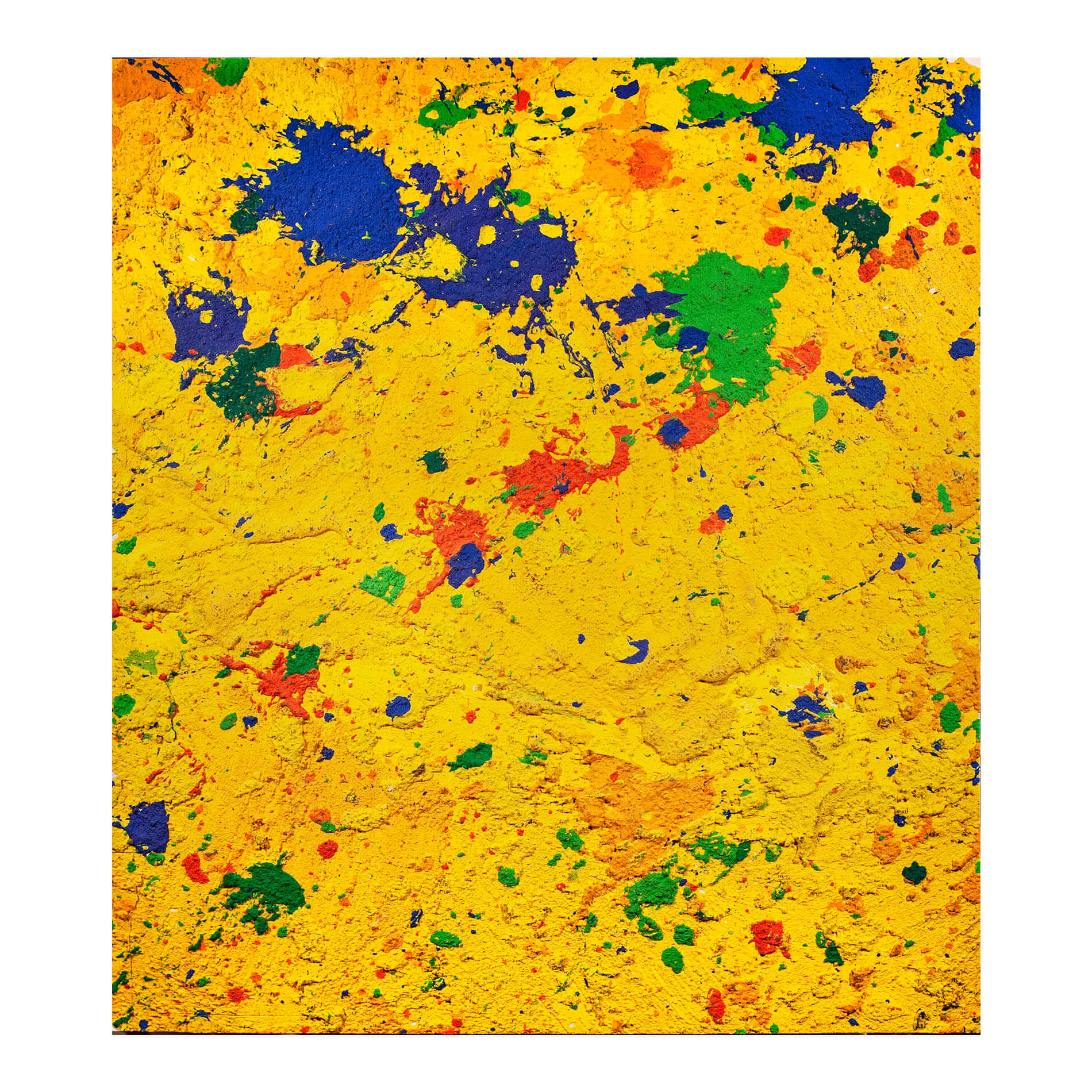
Leon Tarasewicz (1957) – painter and academic lecturer. In his work he goes beyond the themes of specific feelings and turns towards purely painting based values such as colour shades and playing with the quality and texture of the canvas itself. He creates monumental, abstract compositions of colour which fill the space in galleries, institutions and public spaces. Colourful, large format compositions are the main formats of his work which was shown at the Venice Biennale in 2001. This artist has been very successful both nationally and internationally. His work has entered into global, prestigious museum collections. In 2005 he was awarded the Silver Medal for services to culture Gloria Artis.
LEON
TARASEWICZ
Untitled
2008, acrylic on wooden board, 87 x 115 cm
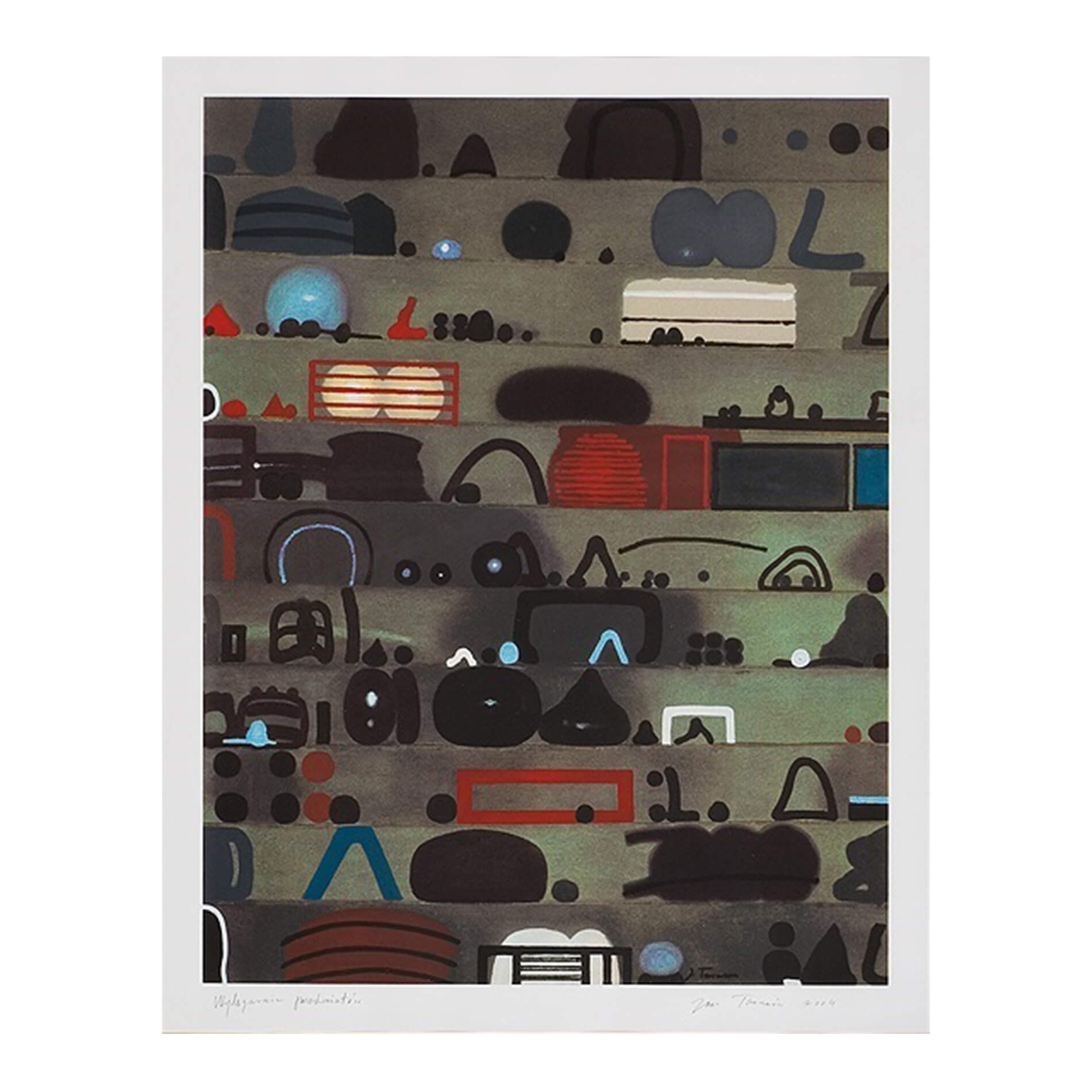
Jan Tarasin (1926-2009) – painter, graphic designer and author of texts about art. He treated painting as a path leading to a knowledge about the rules that govern the universe. On his canvasses there was an attempt to capture the changeability of nature, and in this way, he created his own vision of the world. The artist believed that the cosmos was a collection of interrelated dynamic systems which were in various relationships with each other, and this was the key theme to be found on his canvasses. From 1962 he was a member of the Kraków Group. In 2005 he was awarded the Gold Medal for services to culture Gloria Artis. In 2010 the Office of Artistic Exhibitions in Kalisz was named after him. His work can be found in the collections of the biggest museums all over the world.
JAN
TARASIN
Hatching objects
2004, serigraph on paper, 7/50, 49,5 x 63,8 cm
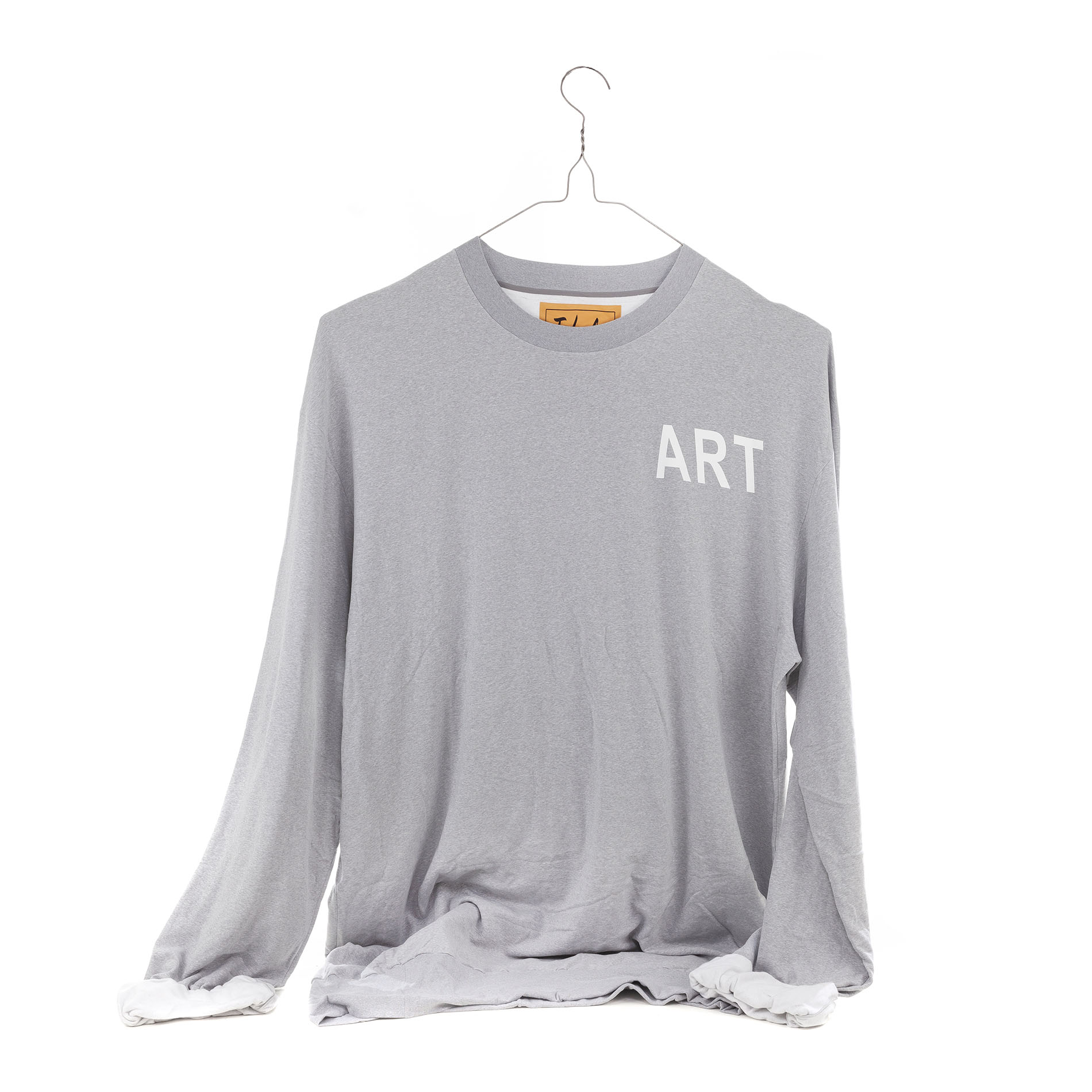
Maria Toboła is an artist working in multiple media. She graduated from the University of Arts in Poznan. A key role in Toboła's art is the observation of Polish reality, its absurdities and aesthetics. In her artistic practice the theme of the transformation era, in which the artist grew up and which still resonates in her work, constantly recurs. Toboła comments on the period of the beginnings of Polish capitalism, with a humorous but also insightful approach. Grotesque, humor and irony are essential tools for the artist. She often works with her own image while playing with stereotypes about the perception of women and female artists.
Maria
TOBOŁA
Sweatshirt with ART inscription
2018, metal, cotton, 200 x 180 cm
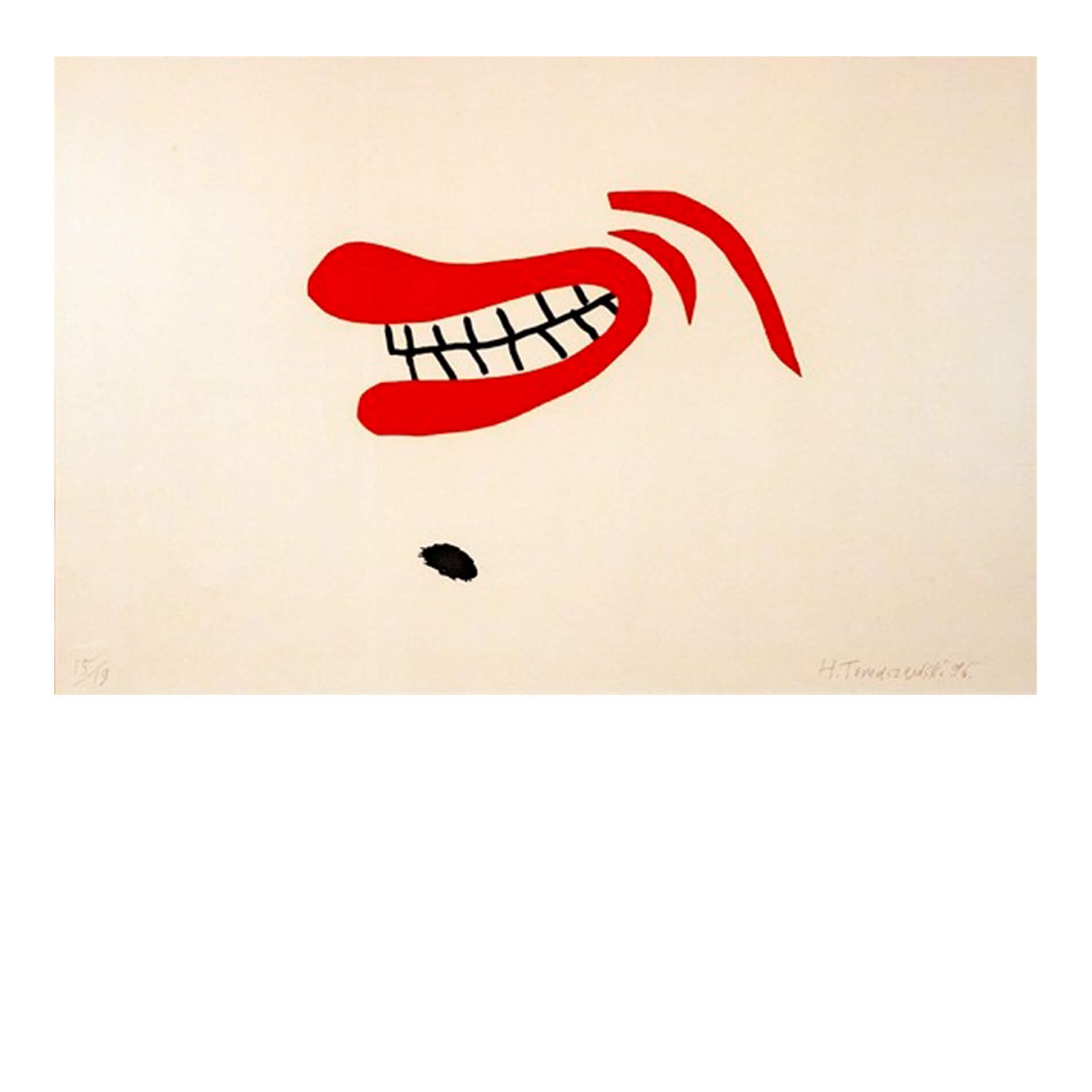
Henryk Tomaszewski (1914-2005) – one of the most outstanding Polish poster creators, graphic designers and academic lecturers. At the International Poster Exhibition in Vienna in 1948, five of his works won the top prizes. His film posters became the precursor of a new style known as the Polish School of Posters. He was a member of the elite group Aliance Graphique International (AGI), and in 1976 he received the title of Honorary Designer for the Queen of England (Honorary Royal Designer) from the Royal Society of the Arts in London. His work is to be found in the collections of museums, including MoMA in New York, Stedelijk Museum in Amstedam, Museum für Gestaltung in Zürich and the Deutches Plakat Museum in Essen.
HENRYK
TOMASZEWSKI
Lips
1996, serigraph on paper, 15/19, 65 x 43 cm

Victor Vasarely (1906-1997) – Hungarian visual artist, precursor of op-art and a representative of the geometric abstract movement in painting as well as being the author of many manifestos. He described his work as being kinetic art, as he always tried to achieve the impression of movement. As an artist he was fascinated by perception theories and optical illusions. Vasarely created abstract painting systems with patterns and colours. He created the illusion of 3D compositions in his paintings which consisted of geometric figures, which appear to be vibrating or moving in waves. As an artist he developed the concept of an art alphabet which he called “Interplanetary folklore”.
VICTOR
VASARELY
Composition nr 3
1989, graphic, 160/250, 26 x 26 cm
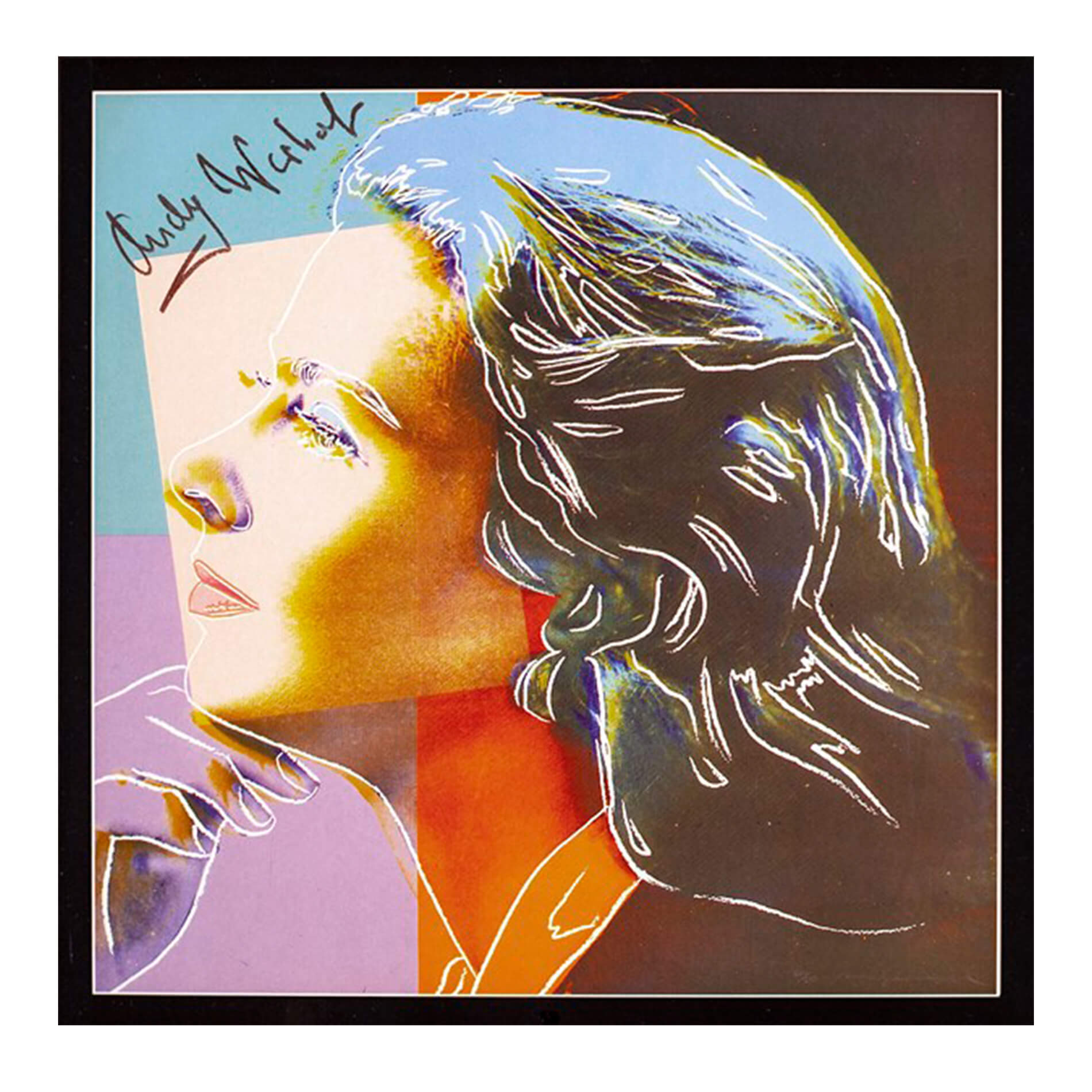
Andy Warhol (1928-1987) – one of the leading representatives of pop-art, an American painter, graphic designer and director. His early experience in advertising and design is noticeable in his later work. He is known above all for his simple series of compositions in which he used strong colour contrasts. He developed his own characteristic style which is instantly recognisable all over the world. He used a serigraph method when he painted portraits of the biggest stars of pop culture, amongst others: Brigitte Bardot, Marilyn Monroe and Elvis Presley. He worked with musicians, he designed one of the record covers (LP) for the Rolling Stones. He was an eccentric who in himself was an “event”. A part of the New York bohemia and a regular attender at the legendary Studio 54 – a club which attracted the greatest stars of art, film and politics.
ANDY
WARHOL
Ingrid Bergman
1983, special print, 22,5 x 22,5 cm

Ryszard Woźniak (1956) – painter, performer, art theorist, teacher, member of the legendary Gruppa. In his work from the 1980s you can find commentary on the reality of communist Poland. He creates expressive works, using symbolism in strong colours. As an artist he concentrates also on installations – sometimes building them out of his own paintings. An important element of Woźniak’s canvasses are their poetic titles which become a form of critical development of his painting. The artist poses questions about painting and the possibility of manipulating them in the times of contemporary media and the presence of games in mass culture.
RYSZARD
WOŹNIAK
The fucking new wave
1982, oil on canvas, 32 x 24 cm





























































